Shelley
leverages her tax expertise to support Patagonia’s outspoken commitment to protecting the environment P48
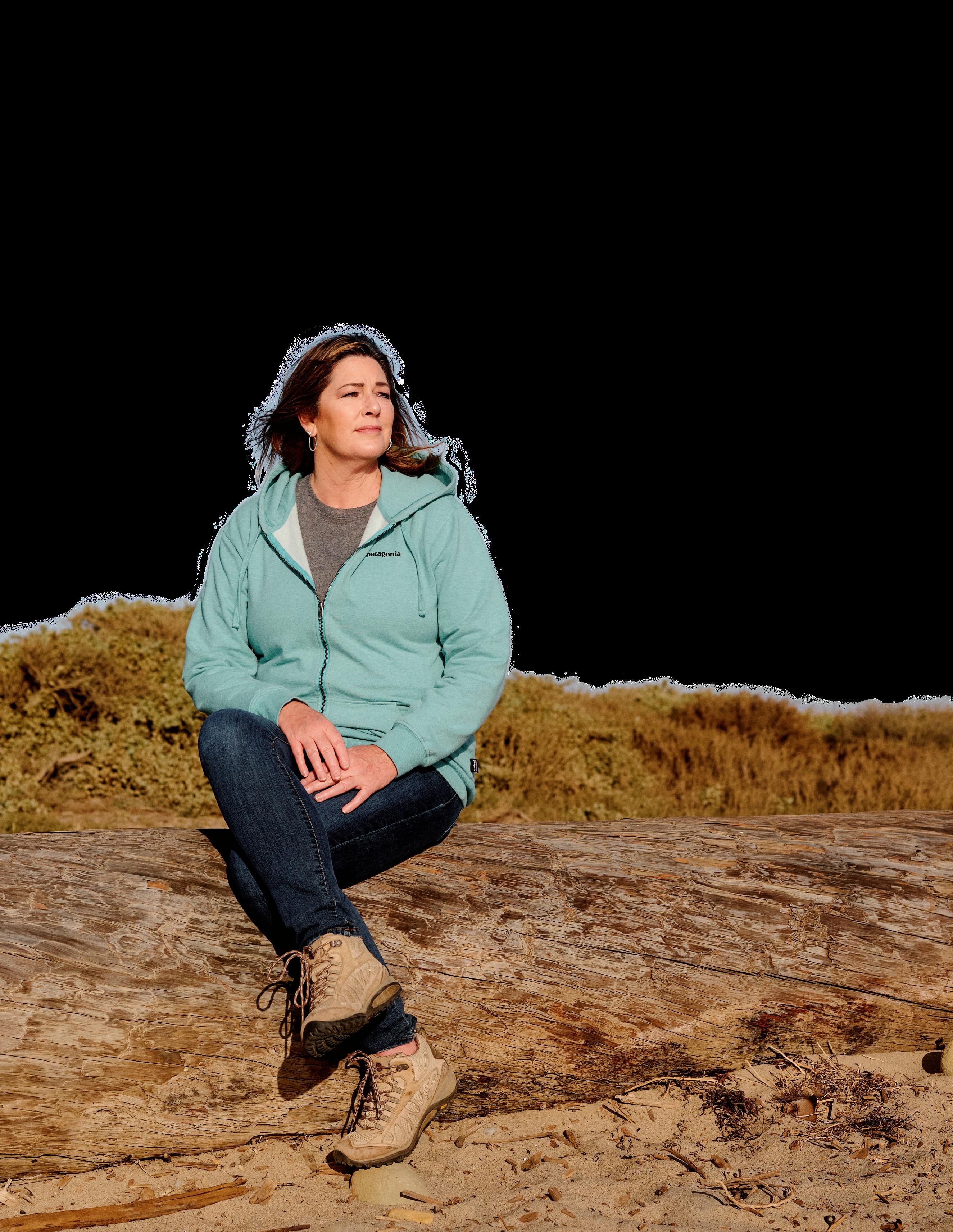
Study Session
How three HR leaders adapt to best serve their campuses
P7
Chase
Shelley
leverages her tax expertise to support Patagonia’s outspoken commitment to protecting the environment P48

Study Session
How three HR leaders adapt to best serve their campuses
P7
ChaseInnovative solutions. Engaged collaboration. Forward-looking perspectives. It’s how we bring West to business to help companies strategically navigate change and plan for what’s next. Discover how our industry-focused services can help move your business forward and seize emerging opportunity.
RISE WITH THE WEST.

Don Hinderliter II shares his fifteen-year journey from intern to general counsel for Sky Chefs Inc. 20
Thomas Rajan reflects on his American Airlines experience that’s given him a unique perspective in caring for people on life’s journey

Shelley Chase aids Patagonia’s massive environmental philanthropy as its senior director of tax

Toni Y. Hickey brings a wealth of intellectual property expertise to Cummins’ complex IP portfolio
Adam Scheinberg’s passion project lies outside of IT and Massey Services: keeping arts programs relevant and thriving
Jacquie Haggarty and her privacy team at 23andMe help customers control their genetic data 63
Allison Wetsel reflects on her eighteen years at the Family Coppola—and what the word “family” means for the dynasty’s wine, spirits, and company culture
Barbie Winterbottom understands that HR can’t prepare for the future without becoming business leaders first. Getting them there is her mission. 124
Junko Swain has taken two companies public, and now as Upwork’s chief accounting officer, she wants to help develop the next generation of talent


Christine Tricoli builds a strong human resources team as H.W. Kaufman Group’s CHRO to differentiate the company from the competition
132
Sam Raghavachari builds partnerships and prioritizes communication to keep the Howard Hughes Corporation’s systems in sync
139
Director, Creative Production
Kevin Warwick
Managing Editor
Frannie Sprouls
Editors
Melaina K. de la Cruz
Sara Deeter
KC Esper
Julia Thiel
Hana Yoo
Staff Writer
Billy Yost
Journalism Resident
Abigail Sutter
Contributing Writers
Zach Baliva
Dan Caffrey
Lucy Cavanagh
Peter Fabris
Will Grant
Frederick Jerant
Russ Klettke
Natalie Kochanov
Donald Liebenson
Keith Loria
Lindsey Lubowitz
Maggie Lynch
Clint Worthington
Designer
Melody Pohla
Photo Editors/Staff
Photographers
Cass Davis
Gillian Fry
Profile® is a registered trademark of Guerrero, LLC.
© 2021 Guerrero, LLC
guerreromedia.com
770 N. Halsted, Unit 307 Chicago, IL 60642
Subscriptions + Reprints
For a free subscription, please visit profilemagazine.com/ subscribe. Printed in China. Reprinting of articles is prohibited without permission of Guerrero, LLC. For reprint information, contact Reprints & Circulation Director Stacy Kraft at stacy@guerreromedia.com.
CEO & Publisher
Pedro A. Guerrero
Chief of Staff
Jaclyn Gaughan
President, Group Publisher
Kyle Evangelista
VP, Hispanic Division
Head of Audience & Engagement
Vianni Lubus
VP, Finance
David Martinez
Director, Client Services
Cheyenne Eiswald
Senior Client Services Manager
Rebekah Pappas
Client Services Manager
Brooke Rigert
Director, Talent Acquisition
Elyse Schultz
Talent Acquisition Manager
Jacqui Bergman
Haylee Himel
Director, Strategic Partnerships & Accounts
Krista Horbenko
Director, Events
Jill Ortiz
Senior Director, Sales
Ben Julia
Director, Sales Training & Development
Alexa Johnson
Sales Training Manager
Justin Davidson
Content & Advertising Managers
Emily Devine
Tyler Durrett
Austin Fisher
Brandon Havrilka
Kippin Keller
Elif Negiz
Annie Peterson
Angela Reeves
Dan Robertson
Jason Slusher
Hannah Tanchon
Justin Taylor
Drew Thomas
Ashley Watkins
Autumn is finally here. I love soaking up the chilly weather, breaking out my flannel shirts and cardigans, and watching the leaves change color.
Every time the seasons change, I reassess my goals and determinations from the past season. And in the fall, I start thinking about the new year just around the corner.
The COVID-19 months made planning ahead a bit challenging. As the world slowly opened up this past year, I found myself looking forward to strategizing my 2022 and beyond. Working on this issue of Profile has provided me with plenty of inspiration.
For our Strategy issue, we turned to Tasker Generes to be our guest editor. Generes, who is global head of strategy and transformation at ServiceNow, spoke with our staff writer Billy Yost about digital transformation and the leadership qualities needed to achieve it. He notes that “people can be protective of the wall they have built even though they know it is impeding progress”—a mindset I’ve had to shake myself out of time and again.
Five other executives provide insights into how they guide strategy and transformation at their respective organizations (p. 76). Dr. Michael Sardaryzadeh brings his cybersecurity expertise to Texas A&M, where he’s making sure the university is at the forefront of security in higher education. And Russ Hinnen, vice president of corporate accounting at MYR Group, describes himself as a “process improvement person” and actively seeks areas to more effectively drive efficiency and growth.
Though she is not featured in our Strategy section, cover star Shelley Chase also has her eyes toward a better future. As senior director of tax at Patagonia, Chase is instrumental when supporting the company’s charitable activities and environmental commitments. She has an eye on sustainability incentives to keep Patagonia at the front of the pack, as customers increasingly demand responsibly produced products.
The past couple years have been quite the journey, and with the expertise and guidance throughout this issue, I know I’m ready for what 2022 has in store.
Facebook: @gh.profilemagazine
LinkedIn: @Profile
Twitter: @Profile_ExecMag
Frannie Sprouls Managing Editor Gillian Fry
Gillian Fry
Three HR executives detail how they serve faculty, staff, and students
Shawn Miller, Boise State University P8
Kristi Yowell, Goucher College P12
Amanda Bailey, Brown University P16
Shawn Miller was in a funk, professionally. The former employment attorney turned HR executive with the city of Boise, Idaho, had, over the course of his thirteen years with the city, “cleaned house” following the disarray left in the wake of a scandal and stabilized company infrastructure. With all that done, he made what he calls a business pitch to one of the departments. It was rejected.
“On the drive home, I remembered that I had made the same pitch to that person’s predecessor a few years earlier,” he recalls. “I began to feel like I was pushing the same rock up the same hill.”
He entered what he calls “the exploratory phase” of his career. Three things happened. First, Miller happened to see a video by popular piano/cello ensemble the Piano Guys where, at the piece’s conclusion, the cello player was in tears. “I thought, ‘How do you find a career you feel that passionate about?’” Miller says.
By Donald LiebensonNext, his eldest son introduced him to a book, How Will You Measure Your Life? Cowritten by best-selling innovation expert Clayton
Shawn Miller flips traditional HR on its head to help organizations build deliberate cultures that allow both employees and companies to thrive

Christensen, the book addresses finding satisfaction and meaning in one’s career. “I was hooked,” Miller says.
The third was a conversation with a Realtor friend. “Going into real estate just wasn’t in the cards,” he explains, “but during that conversation, he said something that always stuck with me. He said that even if he didn’t make much money, he would still be a Realtor, as that was what he was meant to be.”
Miller considered resigning but then stumbled upon the idea of building a company culture focused on nurturing an emotional connection between the employees and the organization. “We had done all the regulatory things right, but we weren’t moving forward,” he says.
He had found his passion. The mayor not only didn’t accept Miller’s resignation but also asked, “How do we do it?”
“We blew up our old employee manual and created this very conversational, fun-to-read handbook that poked fun at municipal government and was self-deprecating,” he explains. “We went from a regulatory approach to a psychological humanist approach. I loved it, and
when I saw an opening at Boise State, I took the opportunity to come and try to do the same thing in higher education.”
HR has long been low-hanging fruit for comedy writers, and Miller gets it. “The caricatures are humorous because there is truth in them,” says Miller, who is chief human resources officer and associate vice president for HR at Boise State University. “You only have to say the words ‘performance appraisal’ or ‘open enrollment’ to make people roll their eyes.”
Another reason Miller can laugh is because he was that guy. “I realized that while you have to respect regulatory, you have to flip that model on its head,” he explains. “The majority of employees want to do the right thing and be a part of a shared positive company experience.
Organizations need to realize that everyone is valuable with a unique background, and they need to respect, appreciate, and leverage that for the benefit of that person and the organization. Those are the organizations that are going to thrive.”
In 2011, Miller launched what is now called BestDayHR to create easy-to-use HR software tools for small-to-mid-size organizations that do not have full-sized HR/IT departments. “We help organizations build deliberate cultures at each phase of the employee life cycle,” he says.
For Miller, it’s the best of both worlds— working with a great organization during the day and helping companies build great organizations at night. His intention is to upend the perceptions and practices of traditional HR.
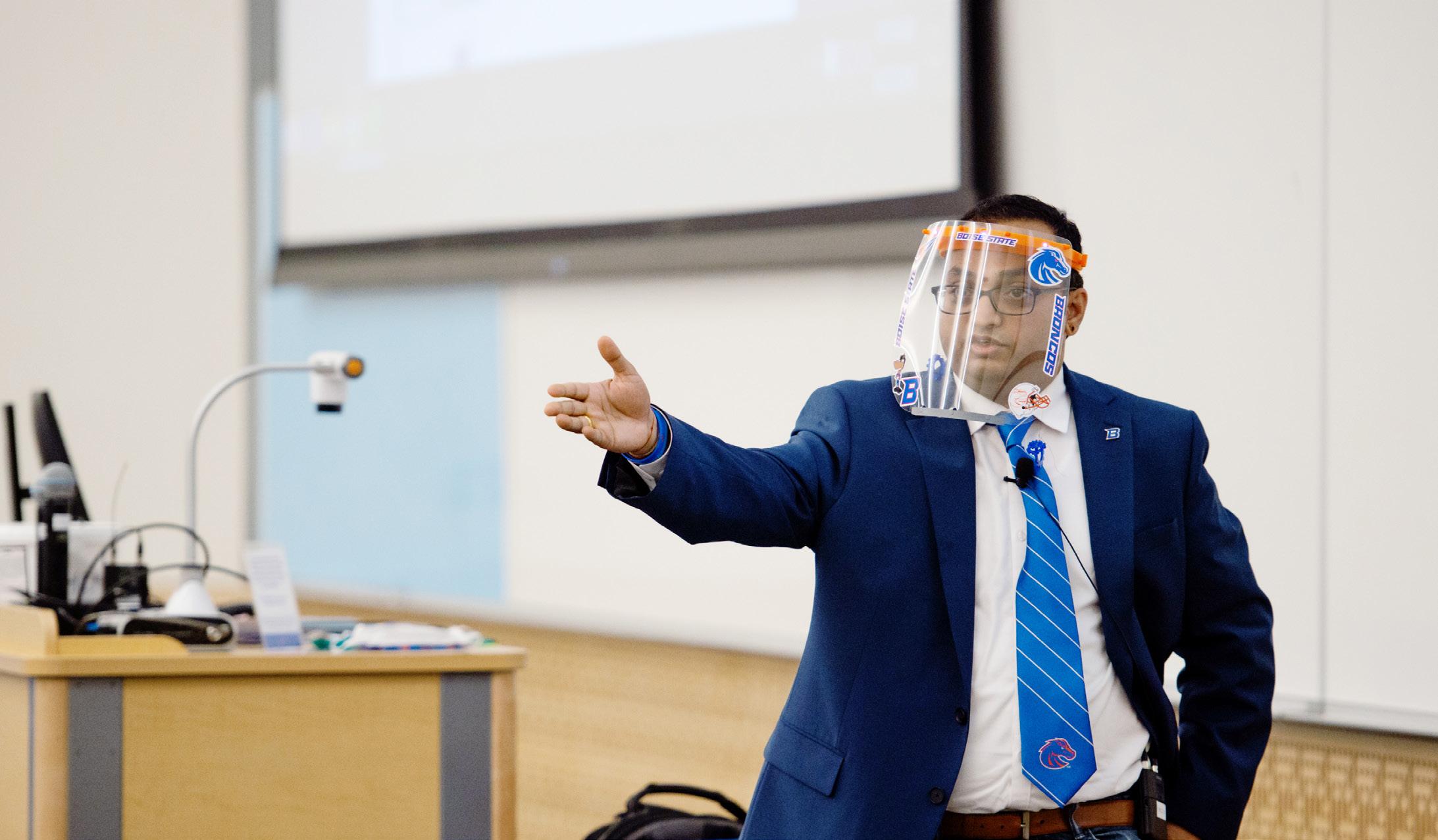

“Organizations need to realize that everyone is valuable with a unique background, and they need to respect, appreciate, and leverage that for the benefit of that person and the organization.”
“I don’t even like the words ‘human resources’ anymore because they commoditize human beings,” he says.

The pandemic disrupted the workplace and the traditional nine-to-five mindset. “When we talk about moving HR from regulatory to emotional, COVID has put that on steroids,” Miller notes. “The pandemic has caused people to question how they are spending this valuable gift of time. More than ever, they are questioning what it means to have a meaningful career. When someone tells me they hate their job, I diagnose that to mean that their core values are out of alignment with the organization’s lived values.
“COVID has made us realize we can work in a different way,” he continues. “Now, the most successful organizations will be those that become more empathetic.”
At Boise State, Miller and his team concentrate on forging a seamless employee experience by establishing a welcome team, a growth team, and a farewell team. “One of the
things I’m most proud of,” he says, “is that our group has flipped the model where it’s now focused on the customer, the applicant, and the employee, as opposed to doing business based upon how we as a department want business to be done.”
“As a strategic consulting partner, Baker Tilly was excited to collaborate with Miller and team using Oracle Cloud to drive continuous improvement and innovation into how HR supports the institution,” says Jeffrey Haynes, director at Baker Tilly.

Taking his cue from psychologist Frederick Herzberg, Miller is a strong advocate of fostering an environment where employees feel that they are part of something bigger and are a valued part of the organization. Job perks, he says, don’t make someone love their job, they make them hate their job less.
“Good ideas, the greatest flashes of inspiration, come from all parts of an organization,” Miller says.
Baker Tilly is proud to partner with Boise State University’s Shawn Miller and his innovative leadership style on their journey to Oracle HCM Cloud.
Being a progressive leader can be a tough balancing act.
“I don’t even like the words ‘human resources’ anymore because they commoditize human beings.”Top: Krishna Pakala teaching on the second day of fall semester at the Micron Center for Materials Research.
After trying internships in everything from physical therapy to marketing, Kristi Yowell was wondering if she would ever find the right career. In fact, the young college student had already changed her major four times. That’s when an advisor made a suggestion that would change Yowell’s life forever.
The advisor noticed a common thread in Yowell’s coursework. She excelled in areas like psychology, management, and ethics. When the advisor suggested yet another internship—this time in human resources— Yowell accepted.
Although Yowell knew little about HR, the internship at a local hospital was different than anything she had previously experienced. She was soon sitting in meetings with leaders who discussed everything from strategy to budgets to staffing to metrics. “I realized that HR is the anchor at the center of everything an organization does,” she explains. “I felt like a kid who
Kristi Yowell leads change at Goucher College while coordinating a master’s program, supporting professional organizations, and emerging as a respected voice in higher education
uses a telescope for the first time and finally understands just how big the universe really is.”
Today, Yowell is associate vice president for HR at Goucher College, located just miles from Baltimore. She also coordinates the graduate HR management program at nearby McDaniel College. The roles are the culmination of a steady twenty-year climb.
The journey started when Yowell graduated and took a position as an HR coordinator at a local John Deere dealership. The company was small, and as its only HR person, Yowell was responsible for every aspect of the job. After less than a year, she knew how to complete all necessary tasks but lacked a deeper understanding of how to serve as a true business partner. “I wanted to work as part of a larger
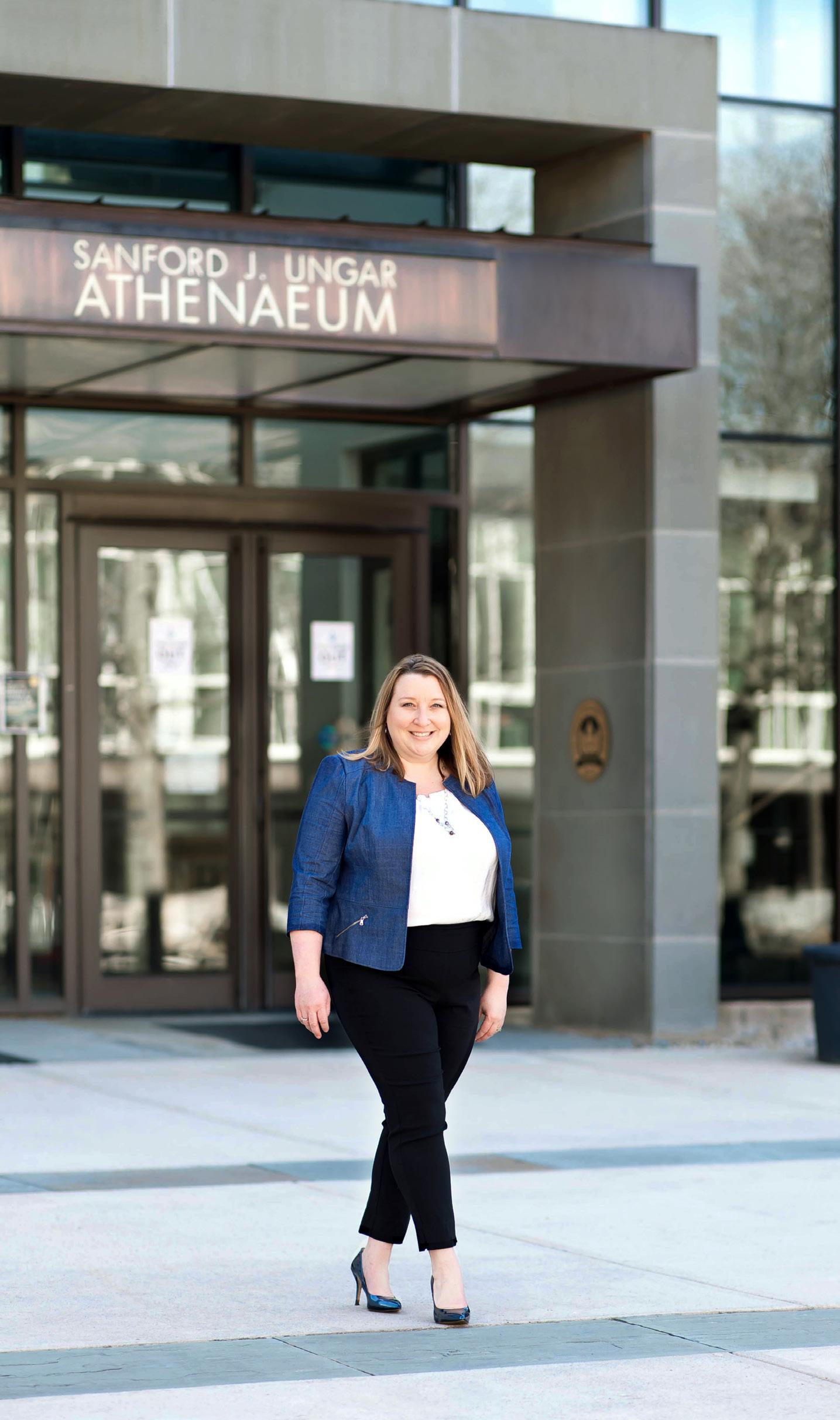
team that I wasn’t leading so I could build the foundational skills that would take me far in my career,” she says.
Yowell decided to take a step back. She enrolled in a master’s program and took a job as an HR assistant at Loyola College. While the move was technically a self-imposed demotion, Yowell knew it would set her up for future success and calls it “the best decision I’ve ever made.”
By moving out of a leadership role, Yowell put herself in a position to learn from veterans in the workplace while applying the theories she was learning in the classroom. The synergies helped Yowell make significant contributions as she learned the ins and outs of HR in higher education, and after a year she moved into a HR generalist role that would help her gain more independence and experience.
Soon, Yowell was ready for a new challenge. She moved to Towson University and created a multifaceted training and development
program for the large public institution. In doing so, she noticed an unnecessary divide between HR colleagues in public and private institutions. This led Yowell to create the Building Bridges Across Maryland program, a cohort between HR leaders at several local higher education institutions.
Building Bridges, which still exists today, helps peers share best practices, promotes collaboration, and offers professional development workshops and networking opportunities. Yowell also started a local chapter of the College and University Professional Association for Human Resources and recently took a position on the organization’s national board.
Although Yowell had grown to love higher education, she purposely left the industry for a stint in insurance. “I didn’t want to turn into one of those people who just does the same old thing the same old way forever. Tunnel vision blocks innovation,” she explains.

After nearly three years away, Yowell returned to higher education and accepted various roles of increasing responsibility before ultimately joining Goucher in 2020.
In her current role, Yowell is helping the small liberal arts college maintain its connections to Baltimore and enhance its strong values related to inclusion and social justice, as well as its focus on global education. To do so, she’s applying her expertise, leveraging the relationships she’s built with other leaders in the industry, and using robust metrics.
Her department is working with IT to implement new technologies and collecting data to make value-informed decisions. One such example is using data to track job applicant demographics, qualifications, and referral source, as well as to understand what causes applicants to drop out of a search or reject an offer. Analytics help Yowell examine marketing materials, outreach events, and other factors.
Goucher’s HR team is also using needs surveys to discover what employees want before they invest time and money into changing benefits programs. “The data doesn’t have to be complex, but getting and evaluating data is critical,” she explains.
These tools and other methods help Yowell navigate challenges related to COVID-19. Like most employers, Goucher is interested in increasing employee engagement after pivoting to a work-from-home model. Yowell is helping department heads schedule techfree days and plan online happy hours, virtual service award celebrations, team fitness challenges, and other special events.
The pandemic has even opened up some new opportunities. Employees and students are embracing online methods, and Yowell believes she can help Goucher tap into a larger employee pool by challenging historical geographical barriers and physical worksite requirements.
“Adaptability and collaboration have been the secret to my personal success and the success of all of my employers,” she says. “And now is the time to adapt, collaborate, and innovate.”
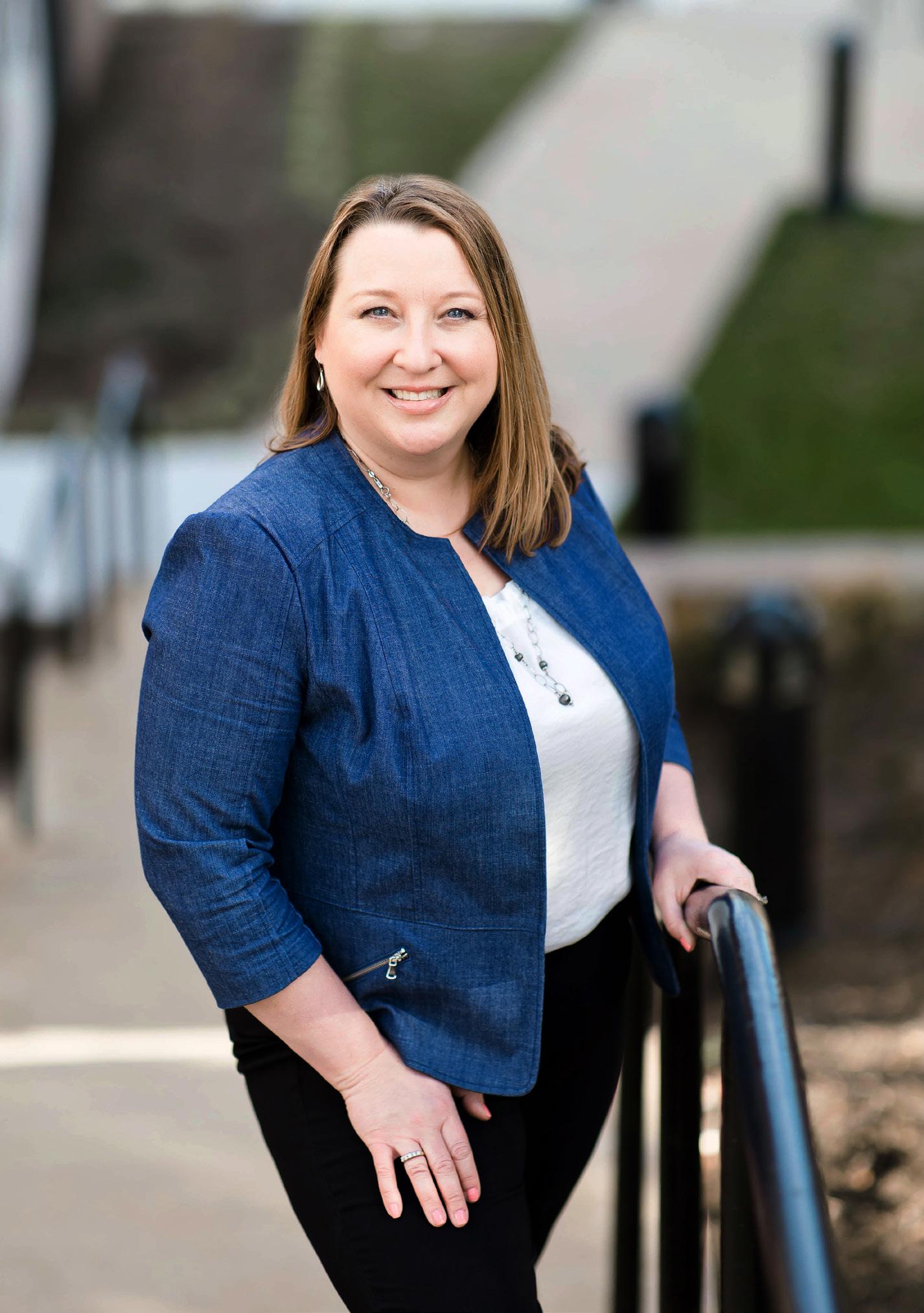
Adaptability looks more different today than it ever has before, and as vice president of human resources at Brown University, Amanda Bailey embodies it. The ability to shift gears and face the ever-changing environment requires data-driven solutions and the initiative to prioritize for best results.
Bailey leads the day-to-day operations of the central human resources team that consists of more than thirty full-time members across several different HR teams. After twenty-six years in HR, Bailey credits her ability to be adaptable to her professional development: She has spent more than half of her career devoted to HR in education.
By Maggie LynchPrior to working in higher education, Bailey worked in K-12 settings and for private
As VP of HR, Amanda Bailey finds ways to successfully shift gears during the COVID-19 pandemic through data collection and assessments
corporations. “I’m one of the HR professionals who started from the ground up,” she says. “I rolled up my sleeves, got to work, and kept seeking new ways to learn more and develop quickly. I’ve been very fortunate to be at the helm leading very talented teams.
“HR is in disruption. Like other business functions that evolve over time, the HR disruption in education is accelerating at a greater pace,” she adds. According to Bailey, this disruption has shown her how to identify HR strategies and adapt her style to implement them according to the culture of the organization and the team’s capacity to learn and grow.

It was likewise the adaptability lens that influenced Bailey’s decision to rely on data to make operational and strategic HR decisions. “HR representatives are aware of the value of relying on data to make decisions.”
One recent example was conducting a Work Prioritization Assessment (WPA). One of the driving forces for conducting the WPA was related to the COVID-19 pandemic and the workload that it created for the HR teams. Their workload tripled in many cases as a result of additional responsibilities within each
Amanda Bailey Former VP for HR Brown University“HR is in disruption. Like other business functions that evolve over time, the HR disruption in education is accelerating at a greater pace.”
team, and the WPA allowed them to use data to identify work priorities and either reassign or temporarily suspend work.
“The WPA used data to identify what work is done regularly, including special projects or initiatives, and the estimated time associated to perform such work,” she continues. “The assessment allowed us to prioritize work that protected our employees’ health and safety and identify other work that was not a priority but still being done regularly.
“We reflected on the data and decided how best to maximize our efforts to the most critical priorities,” she says. “That’s a place where every HR representative wants to be.”
Adaptability and strategic thinking allowed Bailey to shift with her team as Brown University faced the COVID-19 pandemic. She was instrumental in ensuring that employees were represented in the university-wide public health awareness campaign, Brown Takes Care. “It was important to recognize our employees as part of the solution to keep our community safe and healthy,” Bailey says.
Employees are represented in social media, signage, posters, banners, newsletters, and websites to share important safety guidance such as mask wearing, social distancing, and regular hand washing.
Brown’s Leadership Institute, a presidential initiative that launched weeks before the
COVID-19 pandemic and was administered by HR, also required quick and imperative shifts. What was initially designed to be a five-month, in-person program shifted to a nine-month virtual program that included individual and peer coaching sessions and individual assignments that “put leadership theory into action.”
Participants found the program valuable in spite of the increase in workload caused by the pandemic. “Being able to timely pivot to a virtual program and having the ability to network with other colleagues provided much-needed flexibility and collaboration during this time for our leader participants,” Bailey says.
In times of constant change, adaptability “is required to create organizational results,” she says.

Editor’s note: At the time of press, Amanda Bailey was no longer at Brown University.


MOR Associates: “Partnering with Amanda Bailey, the VP for HR, along with other sponsors at Brown University to design and deliver a leadership development initiative focused on enhancing their top talent was a highlight of 2020, a very challenging year. Wishing you continued success in 2021, Amanda.”
—Brian McDonald, President
Please visit us at morassociates.com
“We reflected on the data and decided how best to maximize our efforts to the most critical priorities. That’s a place that every HR representative wants to be.”
When Don Hinderliter II entered law school in 2002, he considered himself a “nontraditional” student. After all, he had already been to graduate business school and had been working as an analyst for Bombardier’s subsidiary, FlexJet, so he
was not only older than most, but also had already embarked on a successful career.
Plus, he never wanted to be a lawyer—or so he thought. When going through some old boxes recently, he came across his high school yearbook, and under his senior photo it said his career aspirations were to be an orthodontist or attorney. “I don’t remember
ever thinking that, but apparently, I did,” he says with a laugh.
Fast-forward nearly twenty years and Hinderliter now serves as the head of legal, general counsel, and corporate secretary of Sky Chefs Inc. d/b/a LSG Sky Chefs, a world-renowned name in airline catering. And in February 2021, Hinderliter won OnConferences Top 50 Corporate Counsel OnCon Icon Award, which recognizes the top 100 corporate counsel and legal vendors in the US.
Originally from outside Chicago, Hinderliter had gone to high school at the Marine Military Academy (MMA) in Harlingen, Texas, following in the footsteps of two of his older brothers. Back then, one of his
brothers was interested in being a Marine Corps aviator, which sparked his interest in attending MMA, and Hinderliter followed six years later.
After four years away, he wanted to be closer to home, so he went to college at Loyola University Chicago. But his first winter was so bitterly cold, he decided to go back to warmer weather and transferred to the University of Texas at San Antonio, majoring in criminal justice. Next came his MBA at the University of Dallas and the job at FlexJet.
“I was getting bored, and my mentor and friend Steve Thompson, the older brother of a very good friend of mine from high school, asked what I thought about going to
Don Hinderliter II Head of Legal, General Counsel, and Corporate Secretary Sky Chefs Inc. d/b/a LSG Sky Chefslaw school, and it sounded like a good idea,” Hinderliter says. So he headed to Southern Methodist University’s Dedman School of Law.
His early legal experience included clerking in the Dallas County probate courts, working for two bankruptcy judges, and working as a paid intern with LSG Sky Chefs under General Counsel Howard Janco. After the internship ended, he was given various other tasks by Janco while finishing law school, and subsequently was hired directly in-house as an associate once he passed the bar. Hinderliter also credits his two other former general counsel, Anne Crowe and Anne Sparks, and current Global General Counsel Jan-Peter Ross, for their advice, coaching, and mentorship.
Though he didn’t join the company until 2005, Hinderliter notes that it was looking to diversify its revenue streams after 9/11 so that if another crisis happened, it could stay afloat until airline revenue returned. As a result, the convenience retail division was developed to bring in a different revenue stream. Due to COVID-19, LSG Sky Chefs is once again in uncharted waters and left searching for different lines of businesses. Hinderliter has been instrumental in helping navigate and position the company.
While climbing the company’s legal ladder, Hinderliter spent two assignments in Germany, the first being for three months in summer 2018 to provide commercial contract training and instruction to new
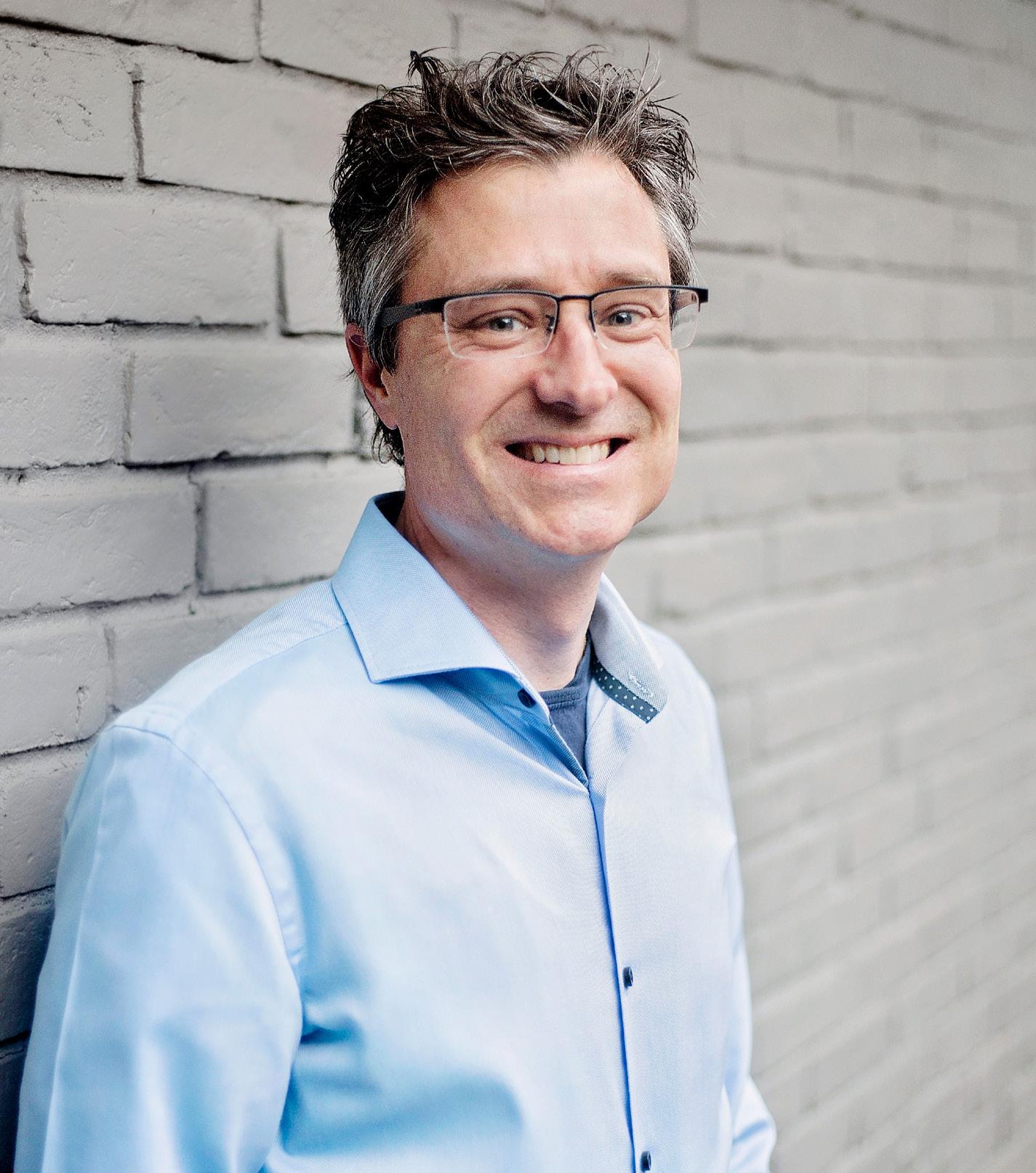
attorneys and to offer contract review and legal support for all non-US global sales team members.


“Working in Germany was definitely different because once I was done with my German day, my US day was just starting,” he recalls. “But it was a great experience, and why not work in Europe when you have the opportunity?”
His second stint in the country lasted a bit longer—March through August 2019—as he took over for the head of legal of an affiliated company who had left the position. It was during this time that he became savvier with the language and the different customs.
Back in the US, Hinderliter now counsels the LSG Sky Chefs’ executive team on complex legal and business issues, such as contractual interpretation, bankruptcy, intellectual property, and antitrust. He also advises them on matters related to the Federal Aviation Administration, Food and Drug Administration, Department of Transportation, Transportation Security Administration, and Department of Agriculture. Additionally, he handles all US transactions and commercial litigation, as well as puts forth recommendations on other legal issues.
COVID delayed one of his big 2020 goals, which was to implement a contract life cycle management system. As the world slowly returns to a “new normal,” Hinderliter has
made it a top priority for 2021 to finish the project. “This year [has been] a lot about continuing to navigate the CARES Act and the new package that was recently passed, while keeping an eye on compliance,” he notes.
Having risen from intern to general counsel, Hinderliter pays it forward by working with his alma mater as a participant in its Corporate Counsel Externship Program, which places approximately one hundred students with one hundred local companies in the Dallas–Fort Worth metroplex for a semester. In fact, both of his in-house attorneys came from SMU’s Dedman School of Law.
“It’s not a typical route to an in-house counsel role, but it’s a great way to give back,” he says. “I want to give that same opportunity that I was afforded.”

Recognized as a top firm for client service, BakerHostetler helps businesses around the world address critical business and regulatory issues. With six core practice groups—Business, Litigation, Tax, Digital Assets & Data Management, Intellectual Property, and Labor & Employment—the firm has nearly one thousand lawyers located coast to coast. bakerlaw.com
Pachulski Stang Ziehl & Jones and Mike Warner congratulate Don Hinderliter. We are proud to partner with Don when the LSG Family of Entities are involved in high profile corporate restructurings. It is always a pleasure working with Don to achieve the best possible outcomes.
“Working in Germany was definitely different because once I was done with my German day, my US day was just starting. But it was a great experience, and why not work in Europe when you have the opportunity?”
DON HINDERLITER II
Corporate leaders often have hard and fast rules that they follow to successfully manage their team—be assertive yet approachable, stern yet understanding, and available yet hands-off. Jefferies Finance’s Daniel Duval credits his successful leadership style to his ability to adapt throughout his tenure with the company.
Duval joined Jefferies Finance—the corporate lending and asset management affiliate of Jefferies, a global investment banking firm—just four years after its inception in 2004. When he first joined, he was the sole lawyer to the recently formed twenty-person middle market lending business.
Over the years and through multiple credit cycles and crises, the business has grown and evolved. Duval began as the
senior counsel and vice president and has since worked his way up to his current position as general counsel, chief compliance officer, and managing director.
“It’s been a transformative experience in which I’ve been fortunate to learn and grow and be continuously challenged to stretch into new subjects and areas of expertise,” he says. “Today, we have close to one hundred employees and we manage more than $12 billion in assets under management. And we have continued to rank number one in the league tables for US-leveraged buyout financings, according to Bloomberg, for the past three years.”
Duval’s role has grown and evolved in response to an ever-changing regulatory environment, gains in market share, and expansion into new products, markets, and geographies. As his legal team has
expanded, Duval has adapted his leadership style to the changing circumstances.
At first, he was an army of one, in which he had to be decisive and very hands on, while working democratically with other divisional leaders. He built standardized procedures and templates, which he adapted and refined as the business evolved.
Duval formed a team of high-performing legal specialists he can rely on to filter and bring him the issues with which they need help. This frees Duval up to lead the firm’s strategic initiatives, setting goals in collaboration with senior management and driving the implementation of transformational projects across divisions. He notes that the process has now come full circle, as he taps junior attorneys to lead smaller initiatives, set goals, and identify needed resources while empowering them.

“It is a pleasure and a real privilege to work with Dan,” say Bjorn Bjerke and Merritt Johnson, partners at Shearman & Sterling. “He has clear strategic vision and a deep understanding of Jefferies Finance’s commercial goals and how to create and identify practical solutions. Dan is really great at communicating his and his teams’ goals and requirements to us here at Shearman & Sterling so that we can more effectively deliver the legal services that he needs and, more importantly, the value-add that is so crucial to Dan and his team’s success.”
Over the past thirteen years, Duval has been crisis tested through the Great Recession and market downturns. At the onset of the COVID-19 pandemic, Duval and his colleagues jumped into action to focus first on employee health and safety and then on transitioning into a virtual office model. They have been working remotely since 2020, while continuing to support Jefferies’ clients day in and day out.
Social distancing measures led Duval to formalize daily communication, with daily management and team meetings to share updates, set goals, and measure progress. The structured communication channel
“It’s been a transformative experience in which I’ve been fortunate to learn and grow and be continuously challenged to stretch into new subjects and areas of expertise.”
DANIEL DUVAL
helps ensure all team members are heard, establishes a core information set from which team members can make better independent decisions, and provides a forum for new or more junior members to learn about the business.

The pandemic certainly tested Duval’s adaptive mindset, but it wasn’t his first test. Duval started his undergraduate degree on the premed track at Cornell, but with an interest in international business, he transferred into Cornell’s world-renowned School of Hotel Administration (now part of the business college). The school provided a strong foundation in business, including prelaw classes, which opened his eyes to the different ways that he could support businesses.
He stayed in Ithaca, New York, and earned his law degree at Cornell Law School. He attributes much of his current success to these pivotal three years, and he tries to give back to this community in any way that he can. “I derive a lot of satisfaction from giving back to that process, and to my alma mater in particular, and mentoring and helping students and lawyers navigate their career in order to help them make better decisions for themselves,” Duval says.
Duval joined the international law firm White & Case after law school. He spent his first three years in the New York office before transferring to São Paulo, Brazil, where he had a broad corporate practice leading finance transactions and debt and equity securities offerings for Brazilian issuers and banks.
When he moved to Brazil, he was one of only four attorneys in the office, and it pushed him to form deep connections with his clients.
“It was a formative experience for me to take real ownership of the transactions I worked on and to really dig into my clients’ businesses to help tailor to both their existing and future needs as well as push me to understand the clients’ work in a deeper, more substantive way,” Duval explains. “I think that was a precursor to my in-house experience. In a way, it was an external in-house opportunity where I was providing a wider range of external advice to our clients.”

His experience in Brazil was influential in many ways, perhaps most notably in that he became fluent in Portuguese and met his wife. The small office feel was also the push he needed to realize what type of law he was most interested in: in-house work. It was with this realization that he learned the importance of adaptability and mentorship.
Duval feels fortunate with the way that his career has turned out, and he feels strongly in advocating for others to pursue a similar path. “My career was built with the help of so many people over the years, and I believe in paying it forward. Throughout your career there are opportunities to help and be helped, to mentor and be mentored,” he notes. “I think it’s important for law students and young lawyers to understand that there are more choices than just working in a law firm.”
To have an influence on young lawyers and inspire them to pursue work as in-house counsel, Duval has made mentorship a key aspect of his leadership style. In addition to being adaptive, he also acts as a role model.
Duval was able to consciously choose his path forward by always thinking several
steps ahead and seeking out the knowledge and experience to be able to build the skills he would need in the future. He encourages junior attorneys to not be passengers but rather active drivers of their career path—setting a destination, challenging themselves, and seeking out meaningful and rewarding experiences.
To empower others to do the same, he founded the Cornell Network of In-House Lawyers, which is a network of Cornell law students and alumni with in-house counsel experience or an interest in starting an in-house counsel legal career. The organization’s mission is to build community among peers, foster professional development, mentor relationships, and share opportunities.
Duval was unsure of what he wanted to do when he first started at Cornell, but his willingness to seek out new challenges and early experiences in his career allowed him to find his passion, and he now hopes to inspire others to find their path. Central to his leadership style is mentorship and an adaptive mindset, and he credits both of these to the success that he has been able to reach throughout his career.
“My career was built with the help of so many people over the years, and I believe in paying it forward. Throughout your career there are opportunities to help and be helped, to mentor and be mentored.”
DANIEL DUVAL

American Airlines leader Thomas Rajan emigrated from Dubai and started his career as a customer service agent—a journey that’s given him a unique perspective in creating growth opportunities for the airline’s team members
By DAN CAFFREYThomas Rajan came back to American Airlines in 2017. But his American story starts nearly thirty years ago in 1992. Rajan was eleven years old, about to immigrate to the United States from his birthplace Dubai with his family, all of whom are from India.
“Back in those days, the airlines didn’t have seat-back digital screens,” Rajan remembers. “So there was a hand-drawn map displayed at the entry door that would show the routing that the flight would take. I remember looking at that map and seeing our path—this line going across this giant body of water.”
After the plane touched down on American soil, one of the flight attendants rolled up the map and as a surprise, gifted it to Rajan. He still has it to this day.
“It’s in a frame, but the ink has almost completely faded,” he says. “I’m trying to figure out how to restore it. I’ve been blessed to have this experience, where my story as an American citizen actually starts with an American Airlines flight.”
Today, Rajan serves as the airline’s vice president of global talent and total rewards, where, in addition to overseeing compensation and benefits, he focuses on attracting great talent and creating growth opportunities for American Airlines team members so that they can thrive.
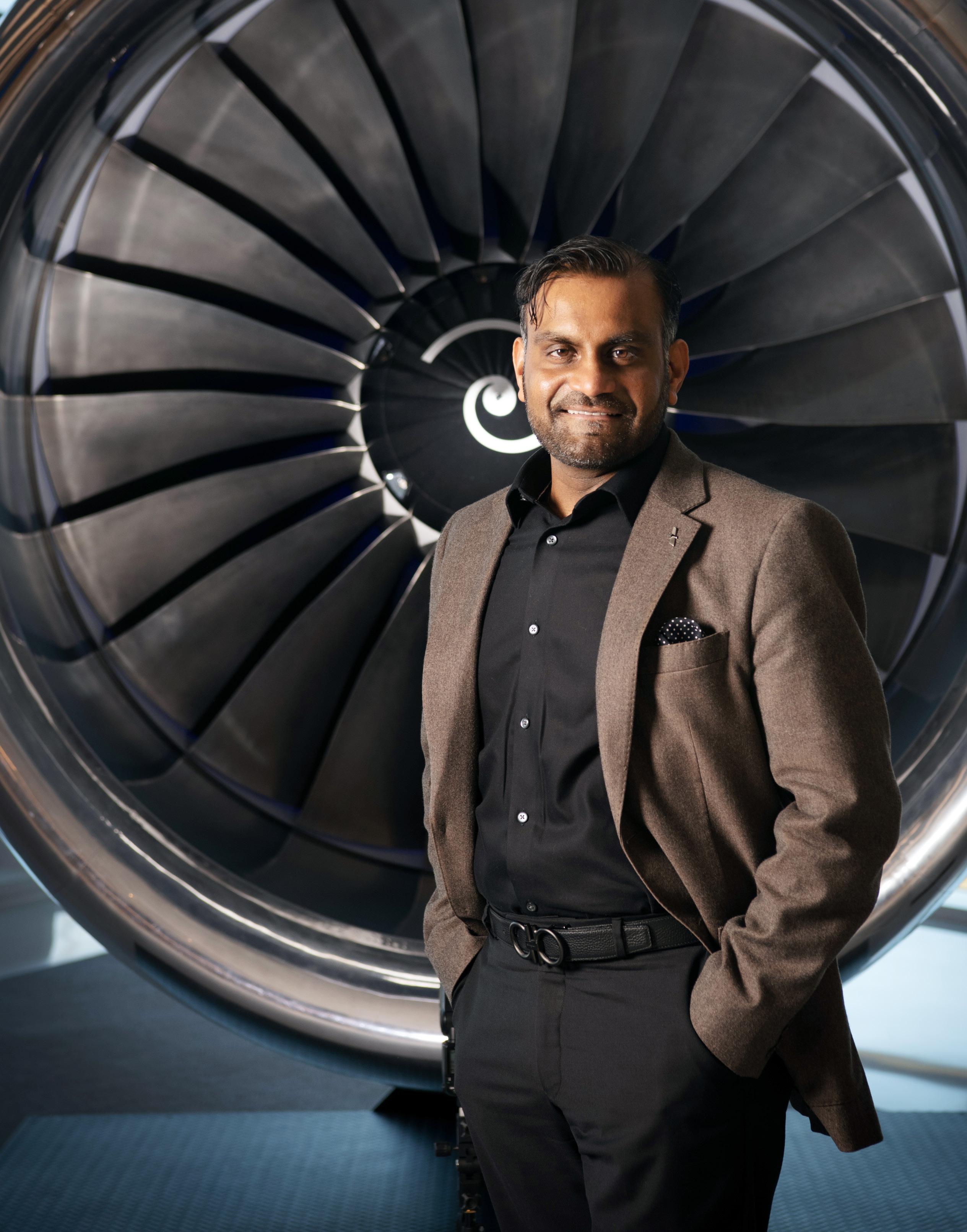
It’s an industry he has a lot of experience in himself, having started as a customer service agent at America West Airlines and British Airways while studying at Arizona State University. As soon as classes ended in the afternoon, he would head to the airport and work well into the night at the ticket counter, gate, and ramp.
“Nothing against the formal education I received, but I learned more in those four years working at the airport than I did in my four years at university,” Rajan says with a laugh. “I was getting to meet so many different people from so many different parts of the world. That was electrifying and inspirational to me.”
In 2005, America West Airlines merged with US Airways, which later merged with American Airlines. Across a career inside and outside the airline, he’s viewed the business from many aspects that have given him an empathetic perspective that continues to inform his work. After all, creating and sustaining an environment where American Airlines team members can thrive is a lot easier when you’ve been in their shoes.
Rajan cites three recent initiatives that have been crucial. First was defining the airline’s purpose with the assistance of the leadership institute Chapman & Co. The massive undertaking involved assembling 150 team members in a room—a crosssection from all departments that represented the organization as a whole. Rajan and the folks from Chapman asked everyone, “Who or what is American on our best day?”
Thomas Rajan VP of Global Talent & Total Rewards
To Rajan’s surprise, most of the answers were expansive and fundamentally human: team members assisting stranded customers in the wake of Hurricane Katrina and a team member whose wife had unexpectedly passed away overseas and needed the airline’s help in transporting her body back home.
“The stories all had the central theme of caring,” Rajan says. “So that’s how our purpose was born: ‘to care for people on life’s journey.’ That became our rallying cry. It talks about our customers—people who are going to a wedding or a funeral or a cancer treatment or a business deal. Whatever your life journey is, how do we as American Airlines care for you on that path?”
“Our purpose also refers to our team members on their career journey,” he continues. “From a ticket agent to a senior leader in the organization, how can we help steward growth?”
Once American’s purpose was in place, the second initiative was providing tangible
tools to help team members foster their own career growth. He and his team connected with Degreed, a learning experience platform that identifies the skills team members already have while also identifying what skills they need for their next career step. It then recommends everything from courses to articles to videos and podcasts. Its social media capabilities can also connect them with others at the organization with similar interests.
Over 15 percent of the American Airlines workforce is already engaging in some form with Degreed, with the goal of growing to at least 30 percent by the end of 2022.
The third initiative sprung from a collaboration with Harvard ManageMentor, a Harvard Business Publishing platform designed to help existing and aspiring leaders expand their skill set and foster the right team environment. Rajan completed his MBA at Harvard Business School and remembers the transformational impact that training had on him. Inspired to
similarly equip leaders at scale, a program developed in partnership with Harvard specifically for new leaders at American is fittingly called Right Start, a term used in the airline business to get that first flight of the day out on time.
Although American Airlines faced a challenging year because of the COVID-19 pandemic, Rajan says that it’s all the more reason to invest in and support the company’s team members.
“Caring for our team took on a whole new meaning,” Rajan says. “From implementing extraordinary measures to ensure our team members felt safe, helping them access the right benefits when they or their loved ones were sick, guiding them through challenging financial decisions, and more recently facilitating access to vaccines for our critical frontline workers, we found new ways to keep living our purpose.”
Rajan’s external partners have seen his drive to care for his team and the American Airlines family. “Thomas’s life and career
“I learned more about working with people in those four years at the airport than I did in my four years at university. I was getting to meet so many different people from so many different parts of the world. That was electrifying and inspirational to me.”
THOMAS RAJAN
experiences, together with his sense of hunger to make a difference in family, society, and communities, honed his mission in leadership to put people first, even in uncertain times,” notes Shane Graham, senior vice president of Aon Health Solutions.
Rajan has been moved by the resiliency and adaptability of the entire American Airlines team, who strives to make every customer’s flight as meaningful as his own was back in 1992. “Before COVID-19, our number-one flier would have been an investment banker or a globe-trotting consultant,” Rajan says.
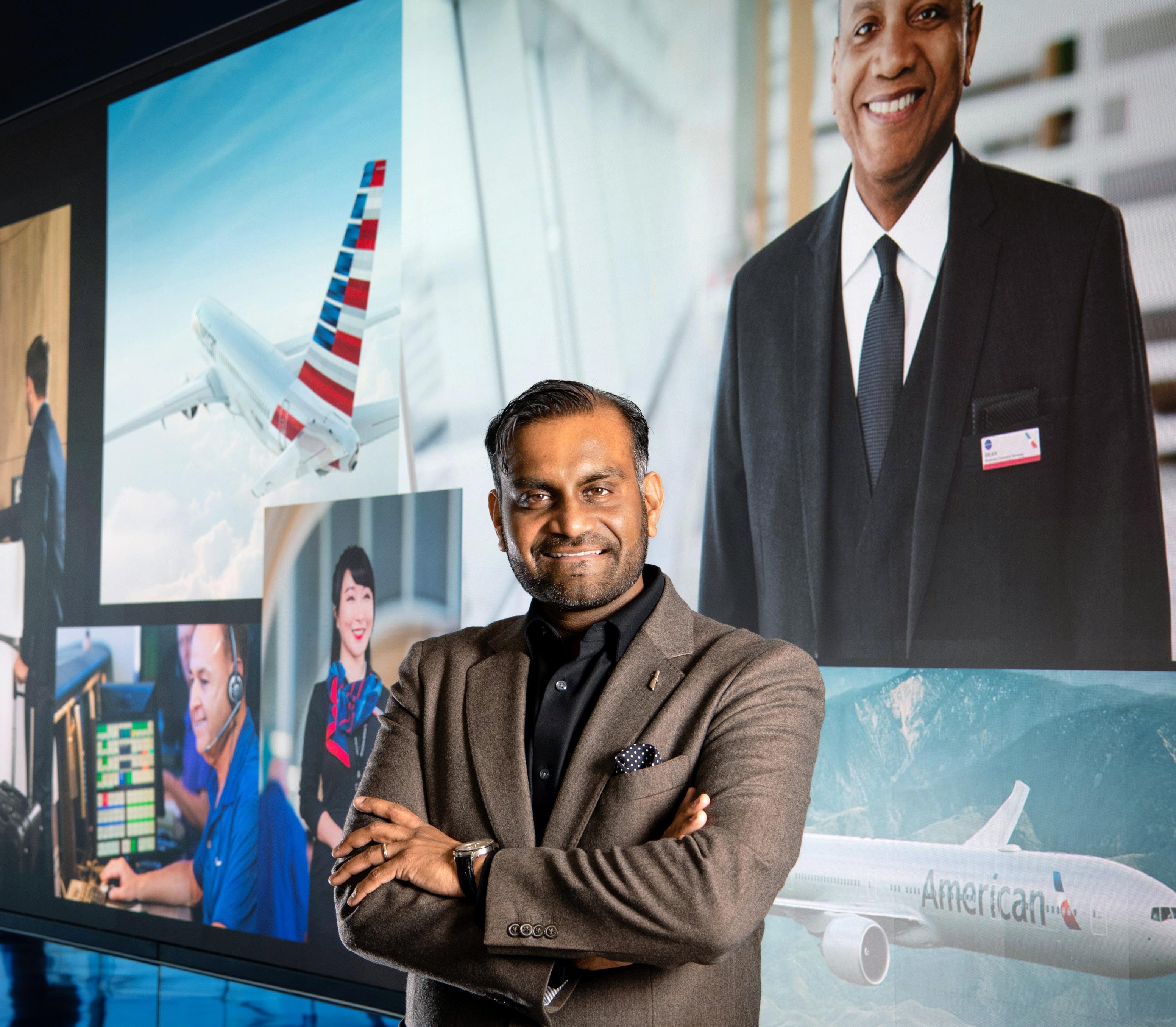
“But while we’ve been in the pandemic, some of our top fliers have been people delivering organs for someone waiting for a transplant, or someone on their way to fix a power plant.
“Essential travel still had to happen, making the clarity of our purpose all the more important,” he continues. “I’m so proud of and grateful for our team members who still showed up every day to take care of our customers, take care of each other, and really help the business pivot to what we all believe will be a new standard of service—a new standard of care.”
“Whatever your life journey is, how do we as American Airlines care for you on that path?”
THOMAS RAJAN
With the celebration of its hundredth anniversary in 2019—and unsurprisingly its most successful financial year—Cummins had one very important message for its employees, partners, and public: challenge the impossible. The company was founded in February 1919 in a Columbus, Indiana, warehouse with four employees. The last century has seen that number balloon to 58,800 across the globe.
Originally founded as a diesel engine producer, Cummins has moved into alternative fuel engines and generators that have helped poise the company to gracefully evolve into whatever the future of energy may be in the next century.
Toni Y. Hickey was part of that centennial celebration—and for good reason. As the chief intellectual property counsel and deputy general counsel, Hickey

is working on the forefront of protecting Cummins’ groundbreaking technology. She is shaping the IP portfolio as the company races to advance clean diesel and natural gas technologies while also developing electrification and other low carbon alternatives to meet requirements in a heavily regulated industry.
Hickey’s pedigree, she says, might seem a bit nontraditional. She spent more than a decade rising through promotions at the US Patent and Trademark Office—including working as an IP Attaché at the US Embassy in Mexico City and serving as deputy chief of staff to the Under Secretary of Commerce for IP—before moving on to a senior counsel role at Foley & Lardner.
Since coming to Cummins in 2012, the attorney has again risen through several promotions to her current role. “With these roles, I performed different tasks, but they have something in common: navigating complexity, direct and open communication, and aligning on a strategic focus,” Hickey explains.
Those experiences have served as a perfect primer for her current position. In a period of rapid technological change, Hickey is well-equipped to help protect the IP interests of the multinational company at a time when Cummins is committed the design of all forms of power solutions, including cleaner, greener diesel technology, battery electric technologies, and hydrogen fuel cells.
“Landing in this role was not by happenstance. The sum of these experiences
has prepared me to tackle issues head-on,” Hickey explains. “My diverse legal background has not only trained me technically as an IP lawyer but also as a business savvy advisor on a range of issues, legal and nonlegal.”
In short, Hickey is a lawyer who can read balance sheets and understand profit and
loss, while feeling comfortable collaborating across a broad spectrum of complex issues in a diverse and multinational setting.
Hickey says she’s also had the opportunity to cultivate her leadership style and engagement in a way she never envisioned. With team members in China, India, the UK, and the US, she says the greatest satisfaction
to our friend Toni Y. Hickey on her recognition in Profile
Taft is honored to work with you.
Taftlaw.com
she gets is when her team or individual teammates are recognized for delivering a solution to a difficult problem.
“Building a team is tough,” Hickey admits. “Building a global team responsible for managing highly complex legal issues is even more challenging.” But it makes the victories even more sweet, as Hickey remarks, “I love being part of a team that collaborates—you arrive at good outcomes.”
The evolving nature of Cummins’ business is a mindset that seems comfortable for the deputy general counsel. “I view change as the opportunity to challenge myself and enrich my interest in lifelong learning,” Hickey explains. “I like to feel like I can add value in different ways and change seems to help me do that. As a leader, I want to role model an openness to change, demonstrating that change opens the doors creating inevitable opportunities for growth.”

Coming to Cummins has also provided Hickey the opportunity to bridge more of her personal values into her daily work. As part of Cummins’ Advocates for Racial Equity, Hickey helps aid the organization’s commitment to fighting systemic racism. “I am focused on increasing the pipeline of diverse women and opportunities for young women to enter STEM fields, as well as IP,” she explains.
In fact, the company’s commitment to these issues was a primary driver in deciding to join Cummins. “I had been in private practice for a short period of time, and contemplating a move, both in my career as well as relocating to a new state, was a big
decision,” Hickey says. “I was initially wary, but Cummins’ commitment to diversity and inclusion was a considerable factor in my decision to join.”
That personal commitment is on full display outside of the critical work she does at Cummins. A former Girl Scout, Hickey served on the Girls Scouts of Central Indiana board of directors, and believes that organization helps cultivate and develop future generations of female leaders. She currently sits on the board of directors with the Indianapolis Urban League, where the organization’s drive for racial equity, fairness, and opportunity is front and center.
And she continues to actively support US Patent and Trademark Office’s initiatives that focus on ensuring that the innovation cycle is diverse, inclusive, and equitable, including its National Strategy for Expanding Innovation.
“I could not be in a better place at the right time to do work that is so fundamentally important to drive innovation while also creating equity, fairness, and opportunity for all people,” Hickey explains. “I hope I can continue to use my position, at Cummins and in the community, to fight for what I believe is right.”
Foley & Lardner is deeply privileged to work with Toni Hickey. Her grasp of the nuances in the complex legal issues that she faces, coupled with her trust and candor while working with our dedicated Cummins legal team, allows us to function as a cohesive and collective workforce.
“As a leader, I want to role model an openness to change, demonstrating that change opens the doors creating inevitable opportunities for growth.”
TONI Y. HICKEY
Kip Emenhiser has always been drawn to numbers.
Growing up in rural northeast Indiana, Emenhiser found success in both athletics and academics— particularly when it came to math. He had opportunities to play baseball and football at a number of small schools, but Emenhiser chose to leave the nest to study at Indiana University. By taking on the challenge of attending a large university, he felt like he was doing something bigger.
With an accounting degree in hand, Emenhiser built a successful career in finance—first at PricewaterhouseCoopers and now as vice president of finance and corporate controller at Lippert Components.
Emenhiser’s first job after graduation was with PricewaterhouseCoopers in Indiana, but he quickly realized public accounting wasn’t what he wanted to do. After four years at PwC, Emenhiser joined one of his clients in healthcare services, Press Ganey.
“The growth of Press Ganey as a company perfectly aligned with my professional development,” remembers Emenhiser, who spent fifteen years at the South Bend, Indiana, company. “When I started there, the founders of the company were still running the business; looking at their daily cash balance was how they managed things. A couple of years into it, they decided to sell to a private equity firm, so I gained a tremendous amount of experience with the due diligence and sale process.”
Once the sale was complete, Emenhiser gained experience with the management style of a private equity firm and learned another way of doing things. This came in handy when the company subsequently went through another private equity deal five years later. Later, he would help Press Ganey go public, learning the ins and outs of the IPO process. And not too long after, it went back to private.
“There were lots of challenges during the IPO process and subsequent move back private, but challenges provide opportunity and that’s what came through for me in my career
trajectory with Press Ganey’s maturation,” Emenhiser shares.
In 2017, Emenhiser had the opportunity to join a former PwC colleague. He switched industries and joined Elkhart, Indiana-based Lippert Components, a leading supplier of components to the recreational vehicle industry.
Day-to-day, Emenhiser leads the corporate accounting team as well as the financial planning and analysis team. He’s also responsible for budgeting, forecasting, analysis, data metrics, and acquisition processes. “The most important thing is to get
the books closed accurately,” he explains. “We have quarterly SEC filings we have to do, and our year-end annual findings.”
His goal is to create a culture centered around positivity and to have people that he trusts, are dedicated, and know when to work hard. That’s why when Emenhiser joined Lippert, he brought two of his own team with him.
“Going through all the changes at Press Ganey, I had to build a team out and have strong support,” Emenhiser notes. “These guys were really critical in helping with some of those processes

and I had great relationships with them, so when the opportunity came to bring them over to Lippert, it was easy to make those calls.”
As a leader, he describes himself as someone who is “supportive and positive,” and he looks for that same positivity in those who work for him.
“I think that’s critical,” Emenhiser says. “Collaboration is important. I’m sort of a hands-off leader, offering support, providing guidance, and communicating regularly the best I can while letting the team have the freedom to figure things out. I’m not going to always tell them how to do something, so I can cultivate an environment of allowing folks to step up and be productive in a positive way.”
He has an open-door policy and appreciates candid feedback. Plus, before he leaves the office each day, he checks in with his team just to see how things are going and if there’s anything they need.
“I’ve had many bosses over my career, and there were times when you wouldn’t speak to your manager for over a week, and that can lead to uncertainty and not being
clear on a particular direction,” Emenhiser explains. “I try to make sure everyone is clear on communication, and that leads to things being done right.”
For the year ahead, Emenhiser has helped design the pillars of what the future of the finance team should look like.

“We want to move from a finance function that’s just a governance function to guidance, where we do what we need to quickly and accurately but then focus on what we can do to improve the business,” he explains, “whether that’s metrics, forecasting, improving our data, or getting information to our leaders and having a seat at the table with them as they’re making their decisions.”
Thinking back to his blue-collar upbringing, with both his parents having worked in factories, Emenhiser feels his strong work ethic comes from watching his family and friends.
“I gained an appreciation of the hard work that goes into blue-collar jobs, and I’m proud of my upbringing,” he shares. “It’s taught me the values that have helped me succeed in my career.”
Duff & Phelps congratulates Kip Emenhiser and wishes him continued success.
“Collaboration is important. I’m sort of a hands-off leader, offering support, providing guidance, and communicating regularly the best I can while letting the team have the freedom to figure things out.”
KIP EMENHISER
Orlando, Florida-based Massey Services, one of the country’s top five pest control companies, offers residential and commercial pest and termite prevention and landscape and irrigation services. But what really bugs Adam Scheinberg, Massey’s vice president of information technology, is the budgetary short shrift given to arts and music education and the precarious financial instability of arts organizations— especially during a pandemic when theaters are shuttered, concert stages silenced, and in-person classes canceled.
Scheinberg serves as a board member with the Orlando Repertory Theatre—the company that first inspired his young daughter to try acting—and with the Mockingbird Foundation, a charitable organization run by fans of the cult favorite jam band Phish.
Scheinberg’s passion projects align with Massey’s commitment to giving back to the community. “Harvey L. Massey, our founder and CEO, and his son, Tony, our president,

Adam Scheinberg may be vice president of IT for Massey Services, but his passion project lies outside of the organization: keeping arts programs relevant and thriving
have said that being good to your community isn’t just good for the community—it’s also good for business,” Scheinberg says. “And it’s true. Most people would prefer to choose a company that is making an impact in their community.
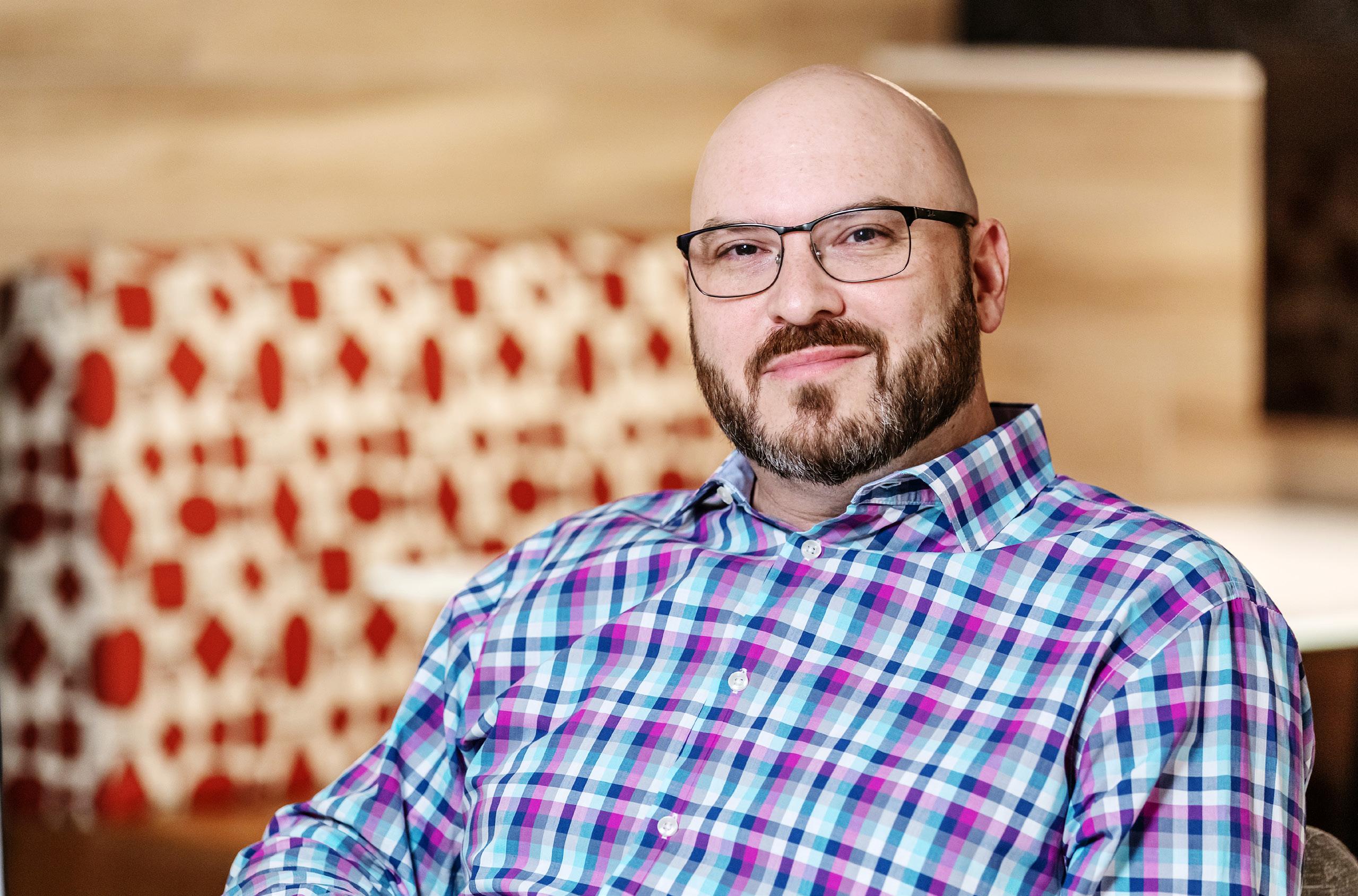
“You wouldn’t think that avidly supporting the arts was a good match for our business,” he continues with a laugh. “But the Massey family has always been a huge supporter of the arts and education and they encourage all team members to get involved. My company was excited for me to serve on these boards. Ours is a match that feels like it belongs on Love Connection with Chuck Woolery.”
The arts loomed large in Scheinberg’s life even before he landed the starring roles in his first, second, and third grade plays, including the plum roles of Sylvester McMonkey McBean in Dr. Seuss’s The Sneetches and Tom Sawyer in the stage adaptation of the classic Mark Twain tale.
“My parents were big into music,” he recalls. “There are pictures of me from when
I was eighteen months, wearing big headphones and listening to my parents’ Beatles albums.” Now forty-five, with a thirteenyear-old daughter and a ten-year-old son, he has a music room in his house stocked with drums, a piano, guitars, bass, and “all kinds of percussion,” he says. “The rule is that the kids have unfettered access. I want them to have that creative freedom.”
Creative freedom is one privilege that many are denied. Scheinberg’s association with the Mockingbird Foundation is driven by his determination to ensure that worthy programs, usually those run on a shoestring and owe their survival to dedicated teachers, do not fall by the wayside.
“The entirely-volunteer Mockingbird Foundation’s primary purpose is to raise money for music education,” Scheinberg says. “It has a competitive grant process; we get hundreds of proposals and fulfill approximately two dozen a year. But we may also receive a fairly informal application from, say, an elementary school teacher running an after-school program, who says, ‘I’m in
Adam Scheinberg VP of IT#1 Microsoft Cloud Deployment Partner
#1 Microsoft Azure Partner
a room and we have nothing but our voices and a thirty-five-year-old piano. If I don’t get money, it goes away.’ It is so great to be able to reach out to organizations out of the blue and say, ‘We found you, we love what you do, here’s a check.’ It is super satisfying.”
There is a quote attributed to Winston Churchill, who, when asked to cut arts funding to support the war effort, is said to have replied, “Then what are we fighting for?” Turns out Churchill never said those exact words, although he was vociferous in his support of the arts. Scheinberg has his own quote: “There has never been a successful society that didn’t value the arts.”
Creativity has played a large role in the evolution of the tools Scheinberg and his team use at Massey, which is approaching four decades of service. “The technological landscape has moved in seismic shifts,” he marvels. “We’re talking generations of modifications. When I started here in 2003, the IT team was me and another guy and our job was to keep a couple of servers running on a limited budget. Now I have a team of more than twenty. We write our own applications. The company has grown dramatically. I remember gathering in the conference room celebrating breaking $30
million in revenue. In 2020, we were on track to do $300 million.”
Just as Massey Services is considered “an essential business” and operated during the pandemic, so does Scheinberg consider the Mockingbird Foundation and the Orlando Repertory Theatre essential in their own ways. The former is having a banner year in donations, he says. Roughly $1.7 million in more than four hundred grants have been distributed across all fifty states.
While the theater company was forced to cancel its latest season, the pandemic prompted it to accelerate its strategic plan to invest more into education and virtual classes and programs. “The need for what we do has not diminished,” Scheinberg said.
Scheinberg is also the inaugural chair of the Orlando Tech Council, which was founded a year ago. Its participants serve in executive technology or innovation roles within their organizations and have charged themselves with raising Orlando’s global profile “as a leading community for entrepreneurship and innovation,” according to its website.
“Orlando has been generous to me, and I want to be generous back to Orlando,” Scheinberg says.
As one of North America’s leading technology solutions and managed services providers, we are trusted by businesses to help them perform and transform when it matters most.
“[Massey’s CEO and president say that] being good to your community isn’t just good for the community—it’s also good for business. And it’s true. Most people would prefer to choose a company that is making an impact in their community.”
ADAM SCHEINBERG








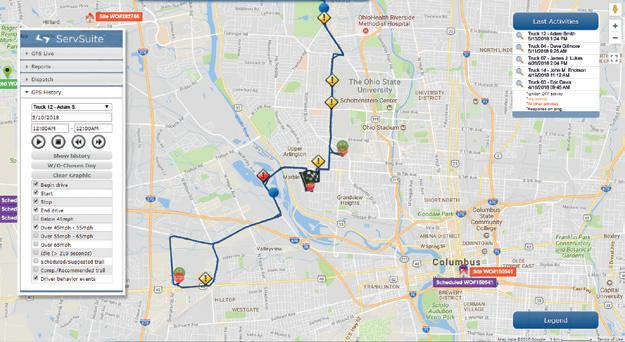

A career in law was not something that Heath Galloway aspired to coming out of college.
“I wasn’t 100 percent sure what I wanted to do, but I was very into outdoor sports and ended up getting my first job out of college with a little outdoor sports magazine in Virginia,” he recounts. “It was a small outfit, and I was doing everything from writing to ad sales to product testing.”
But before leaving college, Galloway took the LSATs and wound up scoring very high, so he knew law school could be an option.
“I enjoy writing and I enjoy the analytical side of practicing law. I also thought I would
enjoy having to ‘think on your feet’ in court and depositions,” Galloway shares. “So, there was an appeal, but it wasn’t something I was dead-set on. I stayed at the magazine about a year and a half, which was a ton of fun but not very lucrative.”
So, when Galloway started thinking more about his future and starting a family, he decided to go to Washington & Lee Law School and liked it more than he thought he would. His wife, whom he met in college, joined him for law school at W&L, which added to his enjoyment.
Upon graduating, Galloway looked for a position in litigation, with labor and employment being an area that particularly appealed to him.
“I liked labor and employment because it touches all aspects of a business and it requires an ability to communicate across all levels of an organization,” he explained. “To be an effective labor and employment lawyer, you have to be able to see perspectives from management as well as the folks on the ground. I quickly felt that I was well suited for that type of practice and began my career search.”
Galloway found a position at Richmond, Virginia-based firm Williams Mullen, where he eventually made partner and remained very happy during his nearly ten years with the firm. Though he wasn’t looking to leave private practice, in 2013 an opportunity arrived at Owens & Minor (O&M),
a healthcare solutions company based in Mechanicsville, Virginia.
“I had done work for O&M in my private practice for about a year, and the company is well known in the Richmond area. As it happened, a long-time friend worked in their legal department, and told me their general counsel was interested in meeting me to talk
about possibly joining Owens & Minor,” Galloway says.
The role offered plenty of what Galloway had experience with, but also a lot of transactional responsibilities that were new to him—that piqued his interest enough to give it a shot. That was eight years ago, and today Galloway serves as the company’s associate
Heath Galloway Associate General Counsel Owens & MinorDuring the pandemic, Heath Galloway didn’t just work; he found some time to discover a new hobby.
At the rear of his backyard, he has a shed that, until this past spring, had just been a repository for odds and ends. While cleaning it out, Galloway decided to build a coffee table for his patio, and much to his surprise, he was able to do it.
With a new passion instilled, he went on to tackle a number of other projects, including what his wife calls “the world’s most expensive Adirondack chairs” because of all the tools he needed to buy to make them.
“I really enjoy it,” he enthuses. “I’ve been working from home for almost a year, and I was going a little bit stir crazy. Having something to do with my hands, where I can see a tangible outcome, is really therapeutic.”
general counsel, managing a team of eight attorneys based across the globe.
When Galloway joined Owens & Minor, the legal team was relatively small. Within the first few years after he arrived, he was charged with helping to build a new and expanded legal team that had the talent needed to support the growing and transforming company.

“I helped to build the team from the bottom up,” he says. “Over the past several years, we have built a team of exceptional people who all bring a unique skill set, sound judgment, and a pragmatic approach to practicing law in an in-house environment.”
He also commends the team’s ability to adapt, explaining that since he joined in 2013, Owens & Minor has experienced
significant leadership changes as well as changes in the company’s service offerings. Owens & Minor had primarily been a medical distribution company, but now, it has expanded into a number of areas, including home healthcare and personal protective equipment (PPE) manufacturing.
“Being able to ensure that our team can support all of these new elements and acquisitions, and managing the change that goes along with integrating companies, has been something of which I am very proud,” Galloway shares. “Supporting the company’s mission and our over fifteen thousand teammates is extremely rewarding. What we do really does matter, not just in the pandemic, but all the time.”
The COVID-19 pandemic has really proved just how well the O&M legal team can adapt. “We are manufacturers of PPE and we distribute medical supplies to healthcare providers, so we have been uniquely impacted by COVID-19 and we have played a vital role in fighting the
pandemic. We’ve performed very well in challenging circumstances,” Galloway says. “We pride ourselves on being resilient and flexible, and we’ve been able to swiftly address the circumstances that we face and figure out how to best serve our customers, both internally and externally, even when those circumstances could not have been foreseen.”
Owens & Minor President and CEO Edward A. Pesicka frequently reminds the company’s teammates of O&M’s mission: to empower customers to advance healthcare.
“We all try to use that as a guidepost to focus us on what we can do to deliver on that mission,” Galloway notes. “That could be creating a contract to cover something that hasn’t been done before or helping our HR and safety teams keep our distribution and manufacturing teammates healthy and safe. In the end, our job is to make sure we do everything we can to support our customers who are on the front lines, fighting the pandemic and caring for patients.”
King & Spalding proudly supports Heath Galloway and the Owens & Minor legal team for their vision and industry leadership.
“Over the past several years, we have built a team of exceptional people who all bring a unique skill set, sound judgment, and a pragmatic approach to practicing law in an in-house environment.”
HEATH GALLOWAY




 By Billy Yost / Portraits by Mathew Scott
By Billy Yost / Portraits by Mathew Scott
Patagonia is everywhere. The company was founded in 1973 by rock-climbing enthusiast Yvon Chouinard and began with selling pitons, rugby shirts, and other outdoor gear. Its primary market may be lovers of the outdoors who prefer a rugged and durable fit and who can pass down their favorites down for generations, but the
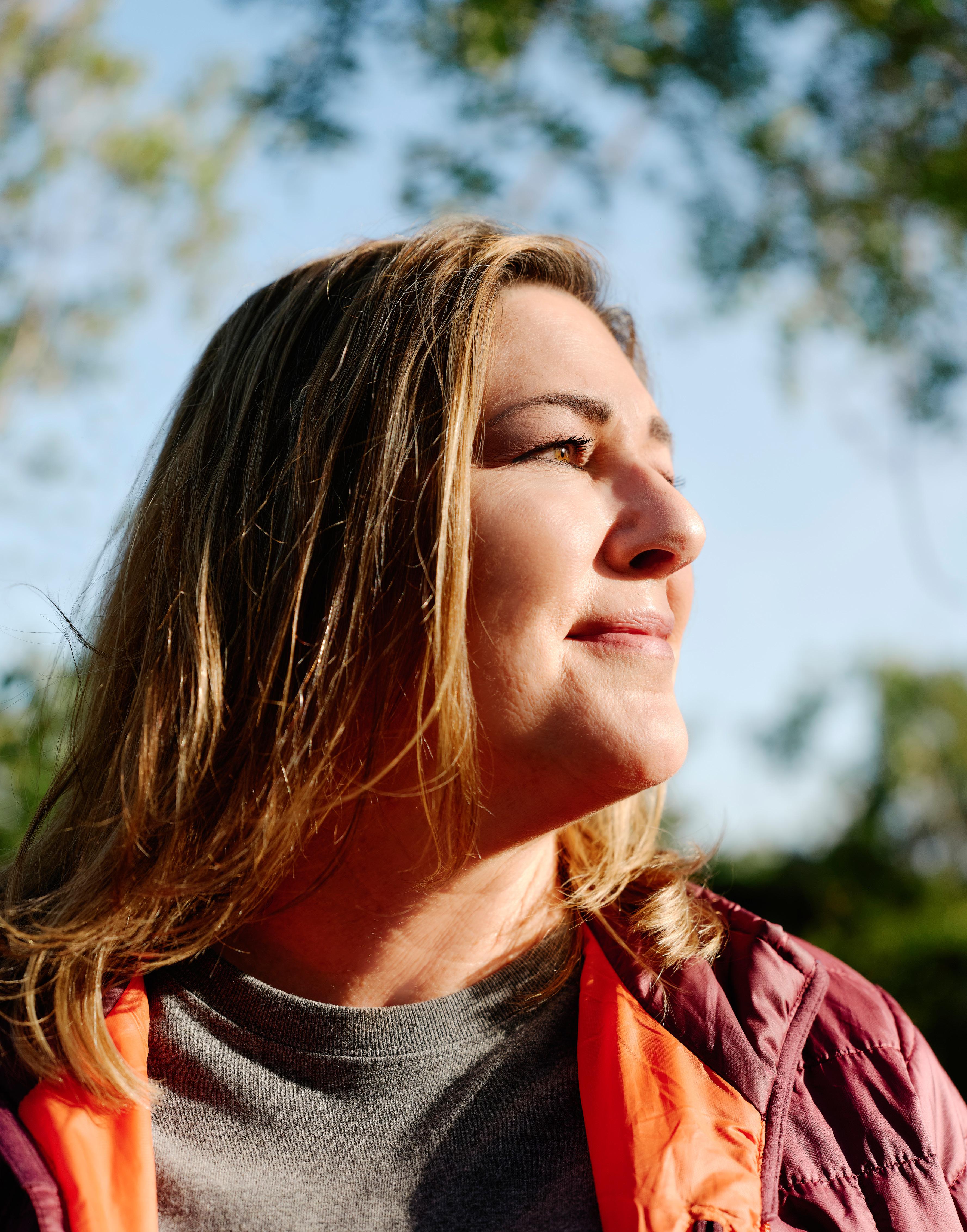
brand has gained traction among consumers of all stripes.
What recently made an outdoors brand a staple? Why was a company that famously ran a 2011 ad that read “Don’t Buy This Jacket”—an ad that detailed the environmental toll just one of its sweaters required and suggested, instead, buying secondhand Patagonia products—suddenly the coolest of cool? Nobody really knows.
The way Shelley Chase speaks about the culture at Patagonia might help shed light on why the brand has shot well outside of its traditional popularity in the last few years. The senior tax director says the leadership structure functions much flatter than most would think for an organization of Patagonia’s size. It offers everyone a chance to have an impact and a voice, and perhaps no clothing brand has made its voice clearer when it comes to the environment.
Patagonia continues to endure because while the culture may be relaxed, its efforts outside of pure retail are anything but.
Chase is at the intersection of multiple avenues of Patagonia’s mix of laid-back culture, environmental activism, and generous philanthropy. The snowboarding enthusiast came to Patagonia in 2015 after senior tax roles at WFS Financial and swim/ skate/surf lifestyle brand Volcom. Chase was able to tackle international tax work at Volcom but within the confines of a smaller company prior to its acquisition by the Kering Company.
That international piece of her tax role at Patagonia has been a dream come true.
“Traveling and meeting with our teams internationally has been one of the greatest things in my career,” the senior director says. “It’s provided amazing growth for me personally and to experience all of the different cultures and traditions has been incredible.”
Chase was able to implement a hedging strategy at Patagonia based on her experience in her previous roles. “Patagonia had been sort of naturally hedged just based on where they were doing business and the way those different currencies fluctuate against each other,” she explains. “When I got here in 2015, there were a lot of things going on in the world, and the company recognized that they had some exposures that needed to be addressed.”
After getting the hedging strategy up and running, Patagonia implemented a dedicated treasurer. “Fortunately, things have grown here that required me to hand off those duties, but I still am obviously involved from the tax side,” Chase says.
There are so many environmental commitments that Patagonia adheres to that the list may seem exhausting, but Chase says that is precisely the point. Patagonia remains hugely successful because of its outspoken commitment to the environment and other issues. Tax may not be the first place one might think it’s aiding the fight, but Chase disagrees.
The senior director helps oversee Patagonia’s charitable activities including its 1% For The Planet commitments that require it to
"The culture here tends to be if things have always been done one way, we’ll try it another. My job is to support that creative thinking and still keep us compliant."
 The Patagonia headquarters, located in sunny Ventura, California, is near a variety of outdoor parks to enjoy on lunch breaks, such as the Surfers Point Dunes and the Emma Wood River Trail.
The Patagonia headquarters, located in sunny Ventura, California, is near a variety of outdoor parks to enjoy on lunch breaks, such as the Surfers Point Dunes and the Emma Wood River Trail.
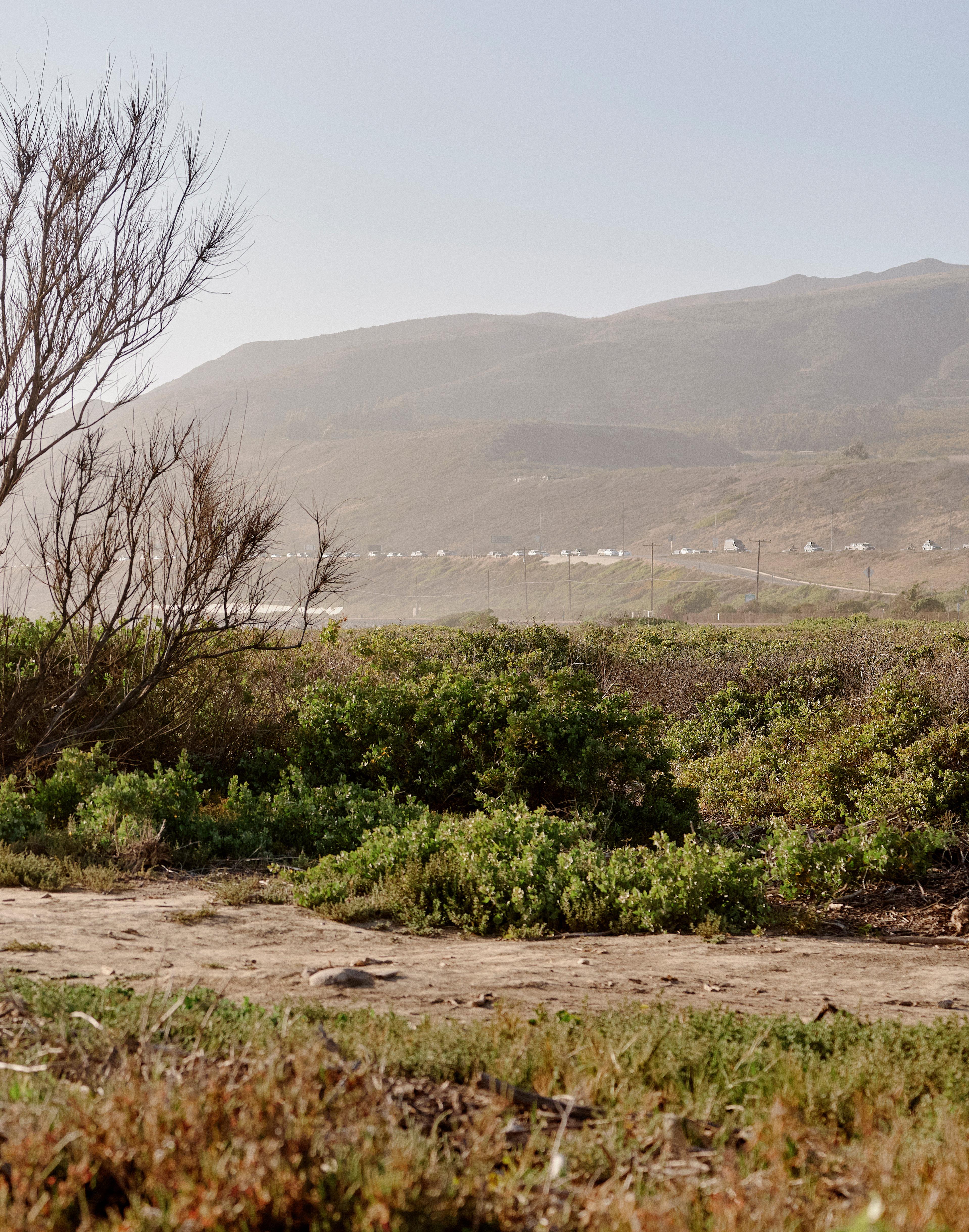

donate one-percent of its sales to environmental organizations. “Since its inception, Patagonia has given over $140 million to environmental organizations and supported countless campaigns to stop climate change and preserve wild spaces,” Chase says.

And there’s more—so much more—outside of its 1 percent commitment. Chase says that during her six-year tenure, the company has given over $10 million on three separate occasions. First in 2016 when it donated 100 percent of Black Friday sales, then after the 2017 tax rate for companies was slashed, Patagonia donated another $10 million to charity. Then over the holiday season in 2019, the company matched up to $10 million in customer donations, and the max was hit in just ten days, resulting in $20 million going to environmental organizations.
Most of this giving is done through Patagonia’s private foundation, one that is focused on environmentally conscious messaging. “I’ve been really excited to partner with our environmental team to tackle every new idea,” Chase says. “The culture here tends to be if things have always been done one way, we’ll try it another. My job is to support that creative thinking and still keep us compliant.”
Chase’s skills have been recognized outside of Patagonia as well. Moss Adams Partner Bill Sturges speaks to many of the qualities that enable Chase to be effective on so many different fronts. “Shelley’s leadership, insights, and collaborative approach have made her and her team an integral part of the strategic processes and initiatives at Patagonia,” Sturges says. “Her positive energy and commitment to excellence provide an inspiration to others and make working alongside her a pleasure.”
Patagonia’s strong stance, Chase says, is hopefully a sign of things to come from others in the industry. “I think Patagonia realized they were a strong, profitable company and that if they took environmental stances, they could be a model for other companies, and they have definitely done it,” Chase says.
Sustainability experience, the senior director says, is an increasingly important skill for any tax professional to have. “I think utilizing tax incentives based on sustainability are an arrow in our quiver that tax professionals need,” she explains. “We need to be able to help support these particular issues since it’s becoming an important part of all consumer goods companies because
"I think Patagonia realized they were a strong, profitable company and if they took environmental stances, they could be a model for other companies, and they have definitely done it."
customers are demanding more responsibly produced products.”


Despite all of these strong efforts, Patagonia remains a place where there are closets for wet suits and shelves for surfboards. A laid-back environment with an assertive voice for the environment. Employees may be able to enjoy their free time, but Patagonia remains at the front of the pack when it comes to acting on its beliefs and staying true to the principles that made it great in the first place.
Deloitte provides industry-leading audit, consulting, tax, and advisory services to many of the world’s most admired brands, including nearly 90 percent of the Fortune 500® and more than seven thousand private companies. Our people come together for the greater good and work across the industry sectors that drive and shape today’s marketplace.

The US Tax Desk specialists at Mazars convey their special thanks to Shelley Chase at Patagonia for the inspiring and constructive cooperation over the years. It has been a pleasure working together and watching how your inspiring leadership brings Patagonia further into the future. Many congratulations on your achievements.

Erin Wiggins is in a rather unique position compared with other in-house lawyers. He navigates a delicate line between his duties as general counsel at TS Tech Americas and his placement within the human resources department.
TS Tech is an automotive company that specializes in the manufacture of seats and other interior components. As TS Tech’s first in-house lawyer, Wiggins has learned to strike a balance between working within HR to build a unified company and not crossing important lines that could create conflicts.
By LUCY CAVANAGH“HR and legal are naturally aligned in most companies,” Wiggins notes. “They are forces aimed at the same goal. HR is looking out for the associates’ well-being and balancing benefits, and legal is really about approaching all of those initiatives within the law.” Because Wiggins technically acts as one of the company’s HR managers, he knows he occasionally needs to separate his functions so as to not preclude himself from fulfilling his legal duties.
Erin Wiggins prioritizes hearing everyone’s voice through the standardization and alignment process as TS Tech Americas’ general counsel
The Ohio native pursued a law career after earning his bachelor’s degree at Case Western Reserve University, moving to New York City to complete his law degree at Columbia University. Wiggins landed at Weil, Gotshal & Manges doing patent litigation before following one of the partners to Paul, Weiss, Rifkind, Wharton & Garrison in 2011.
It was around this time that he and his wife were building a family, and they knew they eventually wanted to move away from New York. They both found new positions in Ohio and within a couple years of moving back to his home state, Wiggins was offered the opportunity to join TS Tech Americas in Reynoldsburg, Ohio, near Columbus.
Erin Wiggins General Counsel TS Tech Americas“I always wanted to be in-house,” Wiggins reflects. “I think it just suited me better than the law firm lifestyle. I like being part of a team that’s growing towards something together. So when that opportunity came up, I took it.”
Since joining TS Tech, Wiggins and his colleagues have faced the challenge of standardizing and aligning the company. Though the company has been around for decades, it has largely operated as independent factories that were located across North and South America, near the various auto manufacturers in order to easily supply their products to them. It wasn’t until recently that TS Tech established a true headquarters in Ohio and embarked

on the homogenization of the company that would allow the company to be more efficient and unified.
“We’re trying to create more policies that apply across the entire group,” Wiggins explains. “We want all the locations to feel like one company even though they’ve grown up as separate companies.”
It has been no easy task, especially when factoring in that TS Tech operates not only across state lines but also international borders—TS Tech has seventy-two different operations in fourteen different countries and the Americas region, which Wiggins is responsible for, has operations in Canada, Mexico, Brazil, and the US.
This standardization process has allowed TS Tech to establish a firm value system and work towards a unified diversity and inclusion initiative. “The automotive industry can be a very white male-dominated industry. While the production level is very diverse,
the management generally is not,” Wiggins states. “To try to change this, we want to find those diverse leaders that can help us have the discussions we need to have.”
Throughout the alignment efforts of the company, Wiggins and his colleagues consider the input from the different factories a major priority when it comes to making decisions that will affect them all. “What I have tried to do is be very inclusive in the discussions and try to vet things through everyone involved,” Wiggins says. “Though, at the end of the day, somebody still needs to call the shot and say, ‘this is what we’re going to do.’”
This type of leadership allowed TS Tech Americas to stay fully operational throughout the COVID-19 pandemic. In many instances, as restrictions and regulations varied and changed in different regions and countries, TS Tech had to find a way to set singular standard policies that would keep
“What I have tried to do is be very inclusive in the discussions and try to vet things through everyone involved. Though, at the end of the day, somebody still needs to call the shot and say, ‘this is what we’re going to do.’”
ERIN WIGGINS
its associates safe—many of which Wiggins drafted himself.
“Basically, we tried to take the strictest of all of the requirements and apply those across all of our locations,” he explains. “So we built a combination of all of the best practices from around all of our countries and said that’s what TS tech is going to do.”
This approach worked incredibly well for TS Tech, which now is able to boast that it was able to maintain full operations and a largely healthy workforce while many others in the automotive sector experienced production stoppages and outbreaks.
“It’s a huge gold star for TS Tech, and I think it’s due to the fact that we did take it very seriously very early on,” Wiggins says. “It was an effort because we had to consider many different viewpoints and we wanted everyone to be heard but we also were firm when we did make a decision.”


A tailored approach to your insurance Insurance is complicated. Especially for companies with a global presence. To help you protect your business, we invest the time to understand it. Partnering with you, we uncover the nuances that make it unique, exposing you to risk. We get to know you because we aren’t protecting just any business. We’re protecting your business.

To learn more, visit us at hylant.com
Vorys is proud to work with Erin Wiggins and support the work he is doing at TS Tech to modernize and align their legal, business, and HR strategies.

“HR is looking out for the associates’ wellbeing and balancing benefits, and legal is really about approaching all of those initiatives within the law.”
ERIN WIGGINS
The game goes that you try to find six degrees of separation from Footloose legend Kevin Bacon. Any entertainer can eventually be linked to the actor in six moves. To anyone from the Great Plains region, the local version of the game can seem like overkill, with so many connections between any two people.
“Out here, it’s usually only about one degree,” jokes Sarah Nupdal, Fargo resident and Bell Bank senior vice president and banking legal manager. When Nupdal sat down to chat with another attorney at what would become her future employer, the two realized that the Bell attorney
Sarah Nupdal finds a perfect fit at Bell Bank, where she leads with vulnerability and civic engagement
and Nupdal’s mother had attended middle school together.
The region may have a reputation for Midwestern nice, an utterly pleasant disposition and the downplaying of emotions, but during the interview the Bell attorney was uncharacteristically frank with Nupdal. “I had been working long weeks in private practice with a six-month-old at home,” she remembers. “He said he could tell that I was unhappy, and that, even though we’d just met, I belonged in-house at Bell.”
Nupdal may be early in her legal career, but she has found the perfect fit for her emphasis on culture, community involvement, and a vulnerable brand of leadership that made her a perfect addition to the local United Way’s “35 Under 35” leadership program.
While her introduction to Bell reads like a dream scenario, Nupdal was initially wary about making another career change. After leaving her federal clerkship with the encouragement of her judge mentor, she hadn’t yet found a place where she truly belonged, nor an organization where she had spent extensive time accumulating experience.

“I had been in private practice for less than a year, and so making another move was somewhat painful for me,” Nupdal explains. “I had spent a lot of my career up to that point questioning whether or not I was making the right decisions, but coming
to Bell and being here the last five years has made me feel fortunate it happened this way and solidified my decision to take the risk.”
For Nupdal, it all comes down to the culture. “It’s hard to explain our culture, but that’s almost all you’re going to hear about from anyone that works here,” she says.
“Your first instinct is to think that it has to be too good to be true—I wanted to experience it first-hand before I bought in.”
One of Bell’s defining differentiators, Nupdal says, is the bank’s commitment to the message that they preach. From community involvement to all the ways employees are taken care of, Bell’s culture commitment truly comes from the top-down—and Nupdal has the perfect example.
When the COVID-19 pandemic hit, employees were left scrambling finding a way to move their work home and were inundated, like the rest of the country, with headlines of unemployment and businesses going under. Bell employees received an email from Bell Bank president and CEO Michael Solberg with the board of directors copied on the message.
“It thanked us for our commitment during such a scary time,” Nupdal says. “And it gave all employees $1,000, just like that, for whatever it needed to be used for. They gave us another $1,000 to use in our Pay-It Forward program that allows us to go out in the community and support causes that are close to our hearts. Just imagine the
Working together, we help build exciting futures.
Andrew Steil
701.232.0730
andrew.steil@lathropgpm.com
uncertainty of that time and then receiving that email, it was incredible.”
LEADING WITH VULNERABILITY
Nupdal says she has been able to evolve her own leadership in a way she’d never even thought of before, in part thanks to the resources she’s been given access to at Bell. “One thing I’ve learned over the past few years is the effectiveness of vulnerable leadership,” Nupdal explains. “It’s about being in the trenches with your people, whether that’s work or things they’re dealing with in their personal lives.”
lathropgpm.com
This is an advertisement. The choice of a lawyer is an important decision and should not be made based solely upon advertisements. Neither the highest state courts nor state bar associations review, recognize, or approve certifying organizations, certifications of specialties or specialist designations in the practice of law. The certificate, award or recognition is not a requirement to practice law. Lathrop GPM LLP, 118 Broadway, Suite 506, Fargo, ND 58102. For more information, contact Andrew Steil at 701.232.0730.
In a company culture that so obviously commits to a family atmosphere, it makes sense for Bell to encourage this leadership style, but it’s not one that Nupdal was accustomed to. “Whether it was going to management school, minoring in business, or watching my parents run a business, this wasn’t something that was really on my radar,” she admits. “For a lot of years,
it was work, work, work—asking someone about their weekend was taking away from the bottom line.”
The shift away from Nupdal’s comfort zone has been essential in developing a larger leadership perspective, she says. It also lends itself to her work priorities, which include finding the right cross-functional teams to deal with issues. When the job is bringing people together, vulnerability can go a long way.
Nupdal’s leadership has also extended into the larger Fargo community. She sits on the board for Bio Girls, a nonprofit whose mission is to raise the self-esteem of adolescent girls through empowerment of self and service to others. The lawyer also volunteers for the local United Way.
“I’ve learned some things in my thirties that I wish I’d known much earlier in life,” Nupdal says. “I just hope I can use my position to motivate future leaders and be a positive influence in their lives.”
Lathrop GPM is proud to support client industry leaders like Sarah Nupdal of Bell Bank.
“It’s about being in the trenches with your people, whether that’s work or things they’re dealing with in their personal lives.”
SARAH NUPDAL
Some parents might fumble when their children ask where they came from. Curious adults can really drill down into their ethnic and racial make-up—sometimes with surprising results—through advances in DNA technology.
23andMe offers a range of related services, from an “ancestry and traits” rundown to a package that includes genetic health risk information, including more than sixty personalized health reports and features, and a subscription to nearly a dozen additional genetic reports.
That’s quite a lot of personal data—and it’s the reason 23andMe is so focused on maintaining its customers’ privacy. “A constant internal tagline has been ‘Privacy is in our DNA at 23andMe.’ Our customer relationships are based on trusting that we’ll provide a safe and private place to explore this information,” says Jacquie Haggarty, 23andMe’s vice president, deputy general counsel, and privacy officer. “Every data point represents a human being. It’s important to unlock the
potential of the human genome, but we must also keep each individual in mind.
“Some tech companies offer services for free, but then monetize your personal information,” she adds. “We simply don’t do that.”
Haggarty’s interest in law grew from her fundamental sense of justice and advocacy. She holds a minor in public policy from the University of California–Berkeley, a master’s degree in public policy from the Harvard Kennedy School, and a JD from Georgetown University Law Center. “Going into law school, my intent was to impact policy through legal practice,” she said.
Following terms at Latham & Watkins and Genomic Health, she joined 23andMe in 2015. “Now I work to enable our customers to be their own best health advocates,” she says. “No one cares about your health more than you do; having access to that genetic data empowers you to be your best advocate.
“I’ve heard that 50 percent of Americans don’t know that there’s a genetic component to their health,” she adds. “But such data can inform you about predispositions to certain medical conditions, or illnesses you have or

may develop, or that you might pass along to your children.”
Additionally, customers can choose to participate in 23andMe’s research program, which includes studies targeted to serious medical conditions. These studies rely on de-identified, aggregate information, and informed consent is required before any customer information is used for research.
Haggarty’s responsibilities cut across all aspects of the business. “It’s an extremely diverse organization from a business operations standpoint,” she says, “and I work to ensure that we’re in compliance with our legal and contractual obligations— especially privacy, of course. I also advise on government affairs, business development, compliance, and other matters. It keeps things lively!”
Naturally, security is paramount at 23andMe. “We have physical, technical, and administrative measures in place to guard information, and my privacy team works closely with the security team to prevent unauthorized access or disclosure and to maintain data integrity,” she affirms. “We’ve invested heavily in security and have ISO certifications against three different privacy and security standards. It’s one of the ways we hold ourselves accountable.”
A key challenge is the fact that there is no comprehensive federal privacy law, so 23andMe, like other companies, must comply with a patchwork of state regulations across the country. “And it can be even more complex because customers are mobile—they move to a new state, or may regularly move between states,” she says. “Which set of rules applies, and when?” Compliance with international laws, including the European Union’s GDPR, adds another layer of complexity.
Haggarty heads a “small but mighty” team of fifteen. “They come from varied
professional backgrounds,” she says, “about half of them are attorneys. I work closely with them as they interact with our internal business partners across various subject areas—intellectual property, marketing, data protection, corporate governance, tax, human resources, and many others.”
Her approach to leadership is simple: lead by example, empower from behind. “I enjoy working behind the scenes with my team members,” she explains. “It’s rewarding to push their professional growth and development, as my own managers and mentors did for me.
“It’s important to support team members in presenting their work product and let them be recognized for their work,” she adds. “That aspect is often overlooked.”
Haggarty offers some essential advice for those in positions like hers. “Keep an open mind and listen to different perspectives. Remember to maintain the highest standards for your work product and your reputation and keep growing your network—they’ll be real assets when doors of opportunity open. And be prepared to catch curveballs; I’ve never had a day that unfolded exactly as planned,” she said.
That flexible attitude carries over to her home life as well. With three daughters (nine, twelve, and fifteen years old) at home full-time during the pandemic, most activities have been put on the back burner.
“But we’re still quite busy at home,” she says. “I’ve come to rely on the ‘mute’ and ‘video off’ buttons at times during remote meetings—as have my colleagues—and 23andMe has embraced that sense of flexibility to support its employees. It’s been challenging for all of us, but I also recognize we are extremely fortunate and so are focused on the silver linings.”

“Every data point represents a human being. It’s important to unlock the potential of the human genome, but we must also keep each individual in mind.”
HAGGARTY
As both general counsel and human resources director at Precision Resource Inc., Joe Tristine recognizes that he has an unusual role.
“I get a lot of upturned heads and furrowed eyebrows,” he says, laughing. “The idea was to have somebody with a legal background be involved at an early stage in any employment or HR-related issues that might percolate into larger legal issues. The president at the time thought I had the personality, demeanor, and interpersonal skills to handle both sides.”
Prior to arriving at Precision Resource more than seventeen years ago, Tristine earned his JD at the UCLA School of Law, then returned to his hometown of Shelton, Connecticut—where Precision’s corporate office is located—to clock in six years at Wiggin and Dana. His work at the law firm tended to focus on mergers and acquisitions, commercial issues, and corporate governance, all of which would come into play at Precision Resource. It was the HR
half of his job where Tristine needed a bit of an education.
“Performance management, employee engagement, compensation, and benefits are all straight-up HR responsibilities that I had no experience with before coming to Precision Resource,” Tristine explains. “Those were all areas of the job that I had to learn.”
While there are occasional areas where HR and legal do overlap—namely compliance matters such as data privacy, HIPAA, and OSHA—the GC explains that his role really is two jobs in one, meaning that his day-to-day involves a lot of compartmentalizing and flexibility.
“You cannot combine both of these roles without having a high degree of versatility and a willingness to learn new things,” he says. This adaptability is even more critical given the work that Precision does to provide component solutions for manufacturers across the globe, in a variety of industries. On the legal end, Tristine’s day may involve negotiating customer contracts, maintaining corporate governance
As both the general counsel and HR director at Precision Resource, Joe Tristine leverages a wide skill set to ensure the safety and well-being of the employee baseJoe Tristine General Counsel and HR Director Precision Resource Inc.
for more than twenty member companies, leading an M&A or financing transaction, or developing a compliance manual that adheres to International Traffic in Arms Regulations.
For HR, that same day might involve handling a delicate employee issue, drafting a new policy, or updating the company’s pay grade systems. In both areas, he gets involved in technology, having worked to expand the company’s HR and benefits information systems and implementing a document management system for contracts.

The convergence of Tristine’s skills was put to the ultimate test in March 2020 when, like the rest of the world, Precision Resource suddenly found itself having to conduct business during the onset of COVID-19. He had the ill fortune of being at Disney World with his family at the time.
“The headlines were getting worse and worse every day,” Tristine remembers. “I was on the phone constantly during that vacation trying to keep track of everything. By the time I got back, it was an ominous
day, Friday the 13. I was on the phone with the corporate directors all the way back from the airport and just jumped right into it. That weekend, I did the research and prepared employee communications so we could establish initial protocols. At that point, it was just ‘Don’t travel. Don’t enter the workplace if you’re sick or have symptoms. All company travel is canceled.’”
The following two months saw twelveto sixteen-hour workdays where Tristine executed a flurry of tasks to ensure that Precision Resource could stay safe, open, and operational. He expanded those initial safety protocols into a comprehensive Pandemic Safety Playbook, which complied with public health guidelines from the Centers for Disease Control and Prevention and included temperature checks, daily deep cleaning, and strict mask and social distancing policies.
Tristine researched and interpreted the nonstop avalanche of new executive orders and relief packages coming from the various governments in all the states and countries where Precision does business,
“You cannot combine both of these roles without having a high degree of versatility and a willingness to learn new things.”
JOE TRISTINEMarli Ciccarelli
including closure orders, unemployment laws, the Families First Coronavirus Response Act, and anything else that might apply to the company. He also had to stay abreast of additional legal regulations related to furloughs and layoffs, issues of force majeure in regard to supply disruptions—the list goes on.
Production shut down at all Precision Resource global locations for two weeks in April (longer for the company’s facilities in Canada and Mexico) before reopening with a skeleton crew to keep manufacturing moving forward. By July 1, the entire company was able to come back after an audit to ensure that the safety protocols in Tristine’s playbook—not to mention laws and CDC guidelines—were being followed. The legal and HR teams also implemented a contact tracing system that could track any potential
outbreaks of the disease without breaching any employee confidentiality obligations.
While Precision has seen a handful of COVID cases here and there, none occurred within the workplace and all were caught before any kind of spread, and the company has stayed fully operational. Automotive sales have also rebounded sharply since spring 2020, meaning that the company will still have a profitable year in 2021. While going to work may not look exactly the same as it did pre-COVID, Tristine is happy and grateful that there’s a workplace to come to at all.
“Back in July 2020, one of our employees in Canada said, ‘Other than my home, this is where I feel the safest,’” he says. “That was great to hear, because that was the goal. We didn’t rest until we were confident that we could keep our people safe.”
“Back in July 2020, one of our employees in Canada said, ‘Other than my home, this is where I feel the safest.’”
JOE TRISTINE
When Allison Wetsel was hired in 2003 as one of the first salespeople for the Family Coppola, she didn’t exactly have a typical onboarding process.
By DAN CAFFREYUpon flying from Boston into San Francisco late one night, she made her way to a bucolic estate in the Napa Valley. In the late 1970s—after the success of groundbreaking films such as The Godfather, The Conversation , and The Godfather Part II —Francis Ford Coppola had purchased the remote property as a weekend retreat where he and his growing family could get away and maybe make a little wine. Wetsel slept in an old cow barn that had been converted into a kind of dormitory for actors, writers, and other visitors. After HR training the next day, there was a knock at the door.
It was Francis’s wife Eleanor, a filmmaker in her own right.
“She said, ‘We hear that you were staying here tonight,’” Wetsel remembers. “Francis had been writing all day, and they wanted to know if I’d like to sit down and
Allison Wetsel reflects on her eighteen years at the Family Coppola and what the word “family” means for the dynasty’s wine, spirits, and company culture
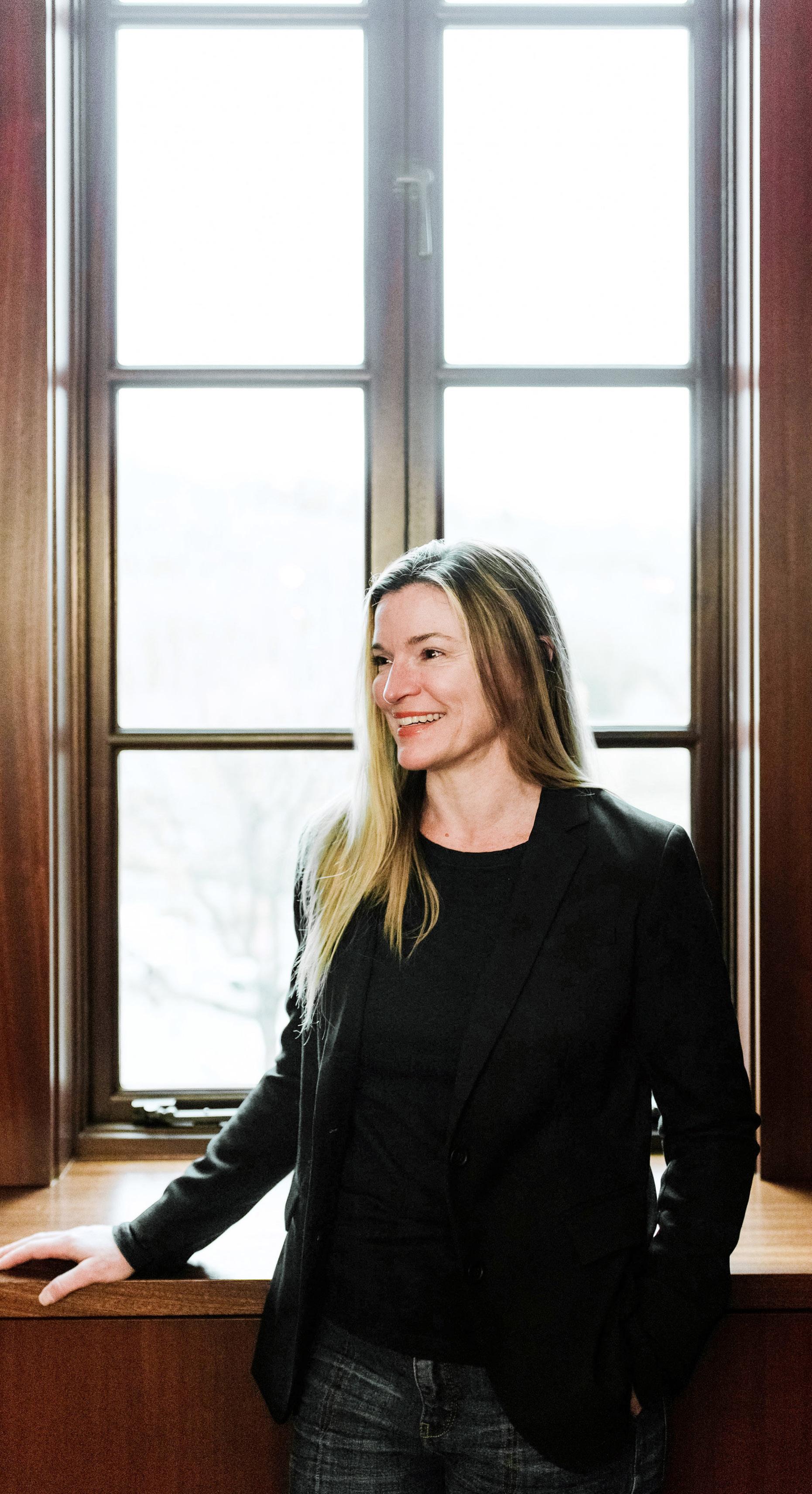
have dinner with them that evening. Eleanor made a cabbage soup, and I did dishes in the kitchen with both of them.”
What was most striking about Wetsel’s introduction to the Hollywood legends—and eventually the rest of their family dynasty— was how warm and approachable they were. “It was like being at my parents’ house,” she says.
A lot has changed in the eighteen years since. Wetsel now oversees a field team of sixty-five salespeople as president of sales and wholesale operations, the winery has expanded to a production facility and administrative office in Sonoma, and there are now three generations of Coppolas sitting on the board of the organization.
But despite the growth, it’s the word “family” in the business name that still drives everything the company does. For Wetsel, working there still feels communal. It still feels like coming home.
“Our mission statement sums it up,” she says. “‘Quality, authenticity, and pleasure.’ When we created it a few years ago, Francis was very adamant that we weren’t creating this big, informal ethos that felt a little bit blank. We really try and integrate those three words into everything we do.”
On the workplace end, that means creating a family-driven environment through amenities such as an onsite restaurant and pool, as well as a creative reimbursement program for employees’ children. This allows their kids to take art, music, and dance classes for free.
And then there’s the familial angle of the product itself. All of the concepts for the company’s wine and spirits come from the family, with many of the bottles named after individual members. Wetsel’s personal favorite is the Eleanor Red Blend, a robust combination of fruits from both the Napa and the Sonoma properties, brought

together in honor of the Coppolas’ 50th wedding anniversary.
Francis and Eleanor’s only daughter— visionary filmmaker Sofia Coppola—served as the inspiration for the canned Sofia Minis back in 2005 (a blend of Pinot Blanc, Riesling, and Muscat), and their granddaughter Gia is the latest of the Coppola clan to lend her vision to winemaking.
“She’s got a really young perspective that’s really disruptive—just totally outside the box,” Wetsel says. “Each wine comes in a one-liter bottle with a crown cap. All of the labels feature her photography.” One of Gia’s most striking collaborations with her grandfather is her Orange Riesling, an informal, summery wine whose unique color comes from fermenting white grapes with the skin and seeds still attached.
Regardless of the creation being dreamed up, Wetsel describes her role at the Family Coppola as ushering something creative into something viable.
“I feel like a translator in a lot of ways, taking the idea, and asking ‘How do we make this a reality in a way that’s authentic and comes across as something meaningful?’” she says.
As a recent example, Wetsel cites Great Women Spirits, a collection of five (soon to be six) spirits each honoring a different woman from history whose story often gets overlooked. First came a gin inspired by Ada Lovelace, the nineteenth-century mathematician whose work on the analytical engine led to her being credited as one of the first
computer programmers. Rather than just slap a label with Lovelace’s portrait on the bottle, Wetsel and the Coppolas connected her story with the women in their own family.
“All of the botanicals are grown on the estate in Eleanor’s rose garden,” Wetsel says. “The Meyer lemons are grown on the estate. The water comes from the Napa Valley spring water on the estate. We put a piece of the property in each of these spirits. We’re working with a master distiller who’s also a woman—Natalie Dale.”
In addition to Great Women Spirits, Wetsel and the Family Coppola have a lot of other prospects on the horizon—including Pool House, a line of low-alcohol, low-calorie wines reflective of a healthier lifestyle Francis has adopted as he’s gotten older.
“Allison is the kind of business partner you always hope to work with,” said Bob Hendrickson, chief operating officer for Republic National Distributing Company (RNDC), one of the largest alcohol distribution companies in the United States. “She leads with passion, is generous with her expertise, and brings out-of-the-box thinking to her interactions. She truly embodies all the Coppola brand stands for.”
The company’s growth never subsumes its culture, which remains as inviting as it did eighteen years ago when Wetsel first arrived at the cow barn.
“Whenever we get on Zoom, you have three generations of Coppola there with all the grandchildren,” she says. “It’s still very much a family operation.”
“I feel like a translator in a lot of ways, taking the idea and asking ‘How do we make this a reality in a way that’s authentic and comes across as something meaningful?’”
ALLISON WETSEL

You’re already wellacquainted with the Burton Snowboard brand. You might just not know it. The day of the 2021 presidential inauguration, the online shop at the Vermontbased company was almost brought to its knees by a meme. Bundled up in mittens and a Burton Edgecomb down jacket, sitting socially distanced in what seemed like his own little world, Vermont Senator Bernie Sanders was suddenly photoshopped into album covers, movie posters, and any other viral picture that has existed, from this century all the way back to The Last Supper. The particular color of Sanders’s coat sold out overnight.
No one can ever plan for a meme-based sales onslaught, but Chief Information Officer Kyle Wierenga has no doubt ensured that the lessons learned by one of the most popular names in snowboarding will be applied to the future. Wierenga has been at Burton since 2019 after accumulating extensive data and analytics leadership experience at Bloomingdale’s, Aimia, and Costco. His global team is spread throughout the globe including Austria, Japan, and Australia.
He embraced the transition from his pure computer engineering days to data and analytics while at Costco. Big data technology was just coming onto the scene, and Wierenga saw the opportunity to help the organization embrace the burgeoning technology.
infor.com/fashion

“I saw it as an opportunity to dive into something my business was struggling with,” Wierenga told Analytics & Data Science Pulse podcast in 2020. Wierenga would utilize the technology and analysis to overhaul accounts payable, adding adjustment incentives to bring in more revenue. Based on his track record, Costco was willing to invest in huge initiatives around supply chain and marketing as the data and analytics team continued to show value for its programs.
Wierenga would help take Aimia from fifth place to second place in the Gartner Magic Quadrant rankings. At Bloomingdale’s, Wierenga would oversee huge projects centered around customer personalization in their online shopping. It wasn’t just offering products based on a user’s profile, which it did; it also integrated real-time calculations on what the customer needed at the moment.
If a user appears to be looking for a suit but they’ve only ever purchased or saved shoes to their wish list, the system would recognize that showing related products in the suits, not shoes, categories would make the most sense. It may seem like old hat now, but it was cutting edge at the time.
In coming to Burton, Wierenga saw a challenge. The snowboarding giant didn’t
have much of a focus on analytics, so the new hire got to work. ERP and front-facing systems were upgraded. New data and analytics capabilities were built out including new customer analytics. A new marketing platform went online in 2021. The CIO is focused on helping tech support the business of Burton, replacing marketing stacks and helping increase Burton’s role in the digital marketplace.
Wierenga’s transition to leadership was aided by a feat most would find utterly terrifying. The CIO spent three years in the club basements of Seattle performing stand-up comedy. He told Analytics & Data Science Pulse that it helped prepare him for a world where he would be required to translate often difficult concepts to non-IT business professionals.
The sometimes-difficult evolution from “pure tech” to communicator is a role Wierenga clearly takes seriously. If he’s going to hire a data scientist with a pure tech pedigree, he takes it on himself to help grow his teammate into a more well-rounded professional. “My job is to educate them in the business knowledge and help them learn to communicate their ideas,” Wierenga told Analytics
The CIO recounted a story of calling up a client who had just finished a presentation with a data scientist. While the information was helpful and the ideas intriguing, the data scientist’s pedantic and off-putting communication style shut down the entire room. Having the right answer isn’t the end of the deal. If it’s not communicated in a way that demonstrates the building of a relationship, it’s not going to get very far.
While Wierenga is willing to help build those important soft skills, there is an Xfactor he looks for in those he hires. “Grit is my secret ingredient,” he told Analytics & Data Science Pulse. He asks about difficult projects that took months, were painful, and required commitment. “I want to know they didn’t give up. That’s who I want to hire.”
Putting your brand at the top of the game doesn’t happen without leaders who know what their customers want—and how to inspire their teams to make it happen.
Infor congratulates Kyle Wierenga at Burton Snowboards for his passionate leadership and embrace of cutting-edge innovative technology.

Growing up, Tasker Generes learned several vital lessons from his parents. As the eldest son in an Asian family—his mother is from Shanghai and his father’s family is from Toulouse, France—he learned the importance of responsibility and taking care of his family. Generes has extended both that responsibility and care to those he serves as global head of strategy and transformation at ServiceNow.
By Billy YostBefore he started building elite-level transformation experiences for enterprise, he started his first lawn mowing business at twelve and evolved it into a landscaping company focused on quality and beauty.

That business would help put him through college. That drive hasn’t diminished.
Since that time, Generes has lived in forty-six states and numerous countries across the globe, familiarizing himself along the way with countless cultures, traditions, and ways of life. This is perhaps why he has accumulated so much success in bringing new perspectives, practices, and organizational success throughout his career.
Generes spoke with Profile about the complexity of digital transformation, the leadership qualities needed to necessitate that transformation, and the value of “the pen exercise.”
Could you talk about some of your prior experiences taking on digital transformation for enterprise and how you feel it helped impact your efforts at ServiceNow?
My focus has always been on the customer. Do right by the customer and your team will be successful. The digital part of transformation is easy. Anything can be done with technology, but you also must think about the outcomes of the transformation. Are they human-centric? If they
are not, those transformations will tend to fail. Transformation is the hard part.
Think about how hard it is to change yourself, and then think about changing someone else. At IBM, I learned that many of the projects I consulted on, while being technically successful, weren’t always fully adopted because of the organizational agendas that didn’t always mesh.
So when I came to ServiceNow, my focus was ‘How do we help empower everyone to understand that everything is a service?’ Service is a table with four legs: people, process, technology, and information. Take one of those legs away and the tabletop becomes shaky. Take two away and the table collapses.
This focus on the customer and the end-to-end service has helped my efforts at ServiceNow because it isn’t about my agenda. It is about how we can help our customers have a better journey, helping them solve for moments that matter, delivering outcomes they care about.
What creates challenging complexity when it comes to digital transformation? There are really three things that drive complexity: lack of leadership and pur-
“Service is a table with four legs: people, process, technology and information. Take one of those legs away and the tabletop becomes shaky. Take two away and the table collapses.”
Throughout the Strategy section, read commentary from Tasker Generes on how the featured executives are implementing change with future growth in mind.
pose, miscommunication, and personal agendas. If you don’t have leadership and purpose, it is a “science project” that may or may not ever come to fruition. And if there is miscommunication, the value of your project may never reach its full potential. Finally, personal agendas that don’t align to the purpose always end up unsuccessful.
I’ve been lucky to learn from some great people along the way, and the value I feel I’ve been able to bring is transparency. This transparency really cuts through the complexity to what we are doing, why does it matter, and how can we help each other to find success.
How do you enable technological transformation while also focusing on leadership components that are essential to making a transformation stick?
The only way to enable any transformation is to focus on servant leadership. I build teams that contain many leaders, but those leaders are also all individual contributors, adding their diversity to create a better outcome. And when you are innovating, you can’t serve your customer if you don’t know them. You can’t understand what level of change
they are trying to overcome in this transformation if you just focus on the features or capabilities.
I usually run an exercise that helps all to look at the different levels of change one may encounter. Pick up a pen and write, “I am going to be great today!” Now switch pens, write it again. Now switch hands and write it again. Then take off your shoe and write it with your foot. Switching pens is just a “technology” change, switching hands is a “process” change. Switching to your foot is a “language” change. Then now add people that have disabilities, then you must realize that their level of change is “cultural.” If you don’t realize that level of change, your transformation will never be successful. That awareness is part of the soft leadership skills that are so important and help you communicate and gain success.
What does it take for a transformation leader to head a global organization?
My top three are: understand the change and be willing to learn; meet your team where they are to build a bridge together; and actively listen to invite open and safe communication. Additionally, when you are leading a
global organization, you also need to take the time to learn about the cultures of your teams. I recommend the book The Values Compass by Dr. Mandeep Rai. It takes you through what 101 countries teach us about purpose, life, and leadership.
At this moment in time, what challenges do you look forward to as you continue to build out this transformation at ServiceNow?
Working at a company that is as successful as ServiceNow is a blessing but also creates challenges along the lines of “if it’s not broken, don’t fix it.” People can be protective of the wall they have built even though they know it is impeding progress.
Many companies have done the “right” thing for too long. Take Nokia, for example: great phone, but then the iPhone came out and we all know the result. I feel particularly blessed because the team I work with is such a diverse set of individuals with a common purpose: to help our company’s ambition of being the defining enterprise software company of the 21st century. This is transformation you can sink your teeth into!
Dr. Michael Sardaryzadeh has seen cybersecurity transform industry after industry. Today, he leverages all of those experiences as an executive leader at Texas A&M University.
By Billy YostDr. Michael Sardaryzadeh has a perspective that places him in an elite tier of cybersecurity leaders. Currently the chief information security officer (CISO) at Texas A&M University, Sardaryzadeh has garnered experience in higher education research, manufacturing, healthcare, finance, and government. But his expertise is also informed by his varied experiences that have provided a wider view of cybersecurity and its effect on those industries.
“Security maturity comes in waves,” Sardaryzadeh explains. “Over twenty years ago, the finance industry’s IT was being done in a somewhat distributed manner. It’s nothing like it is today. But
as government regulations and oversight increased and as they were targeted more and more by malicious and sophisticated actors, they realized that the financial and reputational damage just wouldn’t be worth not taking serious action. Now, financial institutions are one of the most secure places from a cybersecurity perspective.”
Sardaryzadeh joined some of the largest healthcare providers and payers in the country right around the time this wave was beginning to form in that industry. In addition to federal and state regulations and fines, healthcare providers were becoming increasingly targeted by cybercriminals and nation states. “Now, the healthcare industry can really write the book on security,” he reflects.

It’s an interesting metaphor because, at present, Sardaryzadeh is working on his own book CISO 365, which is intended to help get new CISOs through their first year on the job. But before the last chapters could be written, Sardaryzadeh had to focus on yet another new field bracing for high security tides: higher ed.
Texas A&M is an ideal fit for Sardaryzadeh for many reasons. “This is one of the finest research institutions in the country,” the CISO says. “I hope to be
DR. MICHAEL SARDARYZADEH CISOI love how Dr. Michael Sardaryzadeh looks for balance, especially “between security and conducting research through a degree of purposeful openness,” as he states. This focus on being a mindful servant leader provides more than just transformation results; it creates a culture of autonomy that enables his team to become powerful “tinkerers and thinkers.” It is also about how you deliver outcomes and experiences based on the needs of users to “plant seeds that will grow to change the world.”
I recommend that everyone take this into account when starting their own transformation journey. Each one of us may be experts in our own areas but as Dr. Sardaryzadeh understands, it takes all of us working together!
able to do some of my own cybersecurity research and come up with new methods, new processes, and new tools to use in the space. But first I needed to secure the organization and it’s enterprise.”
Higher education has provided its own unique challenges when it comes to maintaining information security. Not because a university—its assets, systems, and data—can’t be properly secured but because there must be a balance between security and conducting research through a degree of purposeful openness.
“An interesting and important thing about higher ed and research institutions is what one would call ‘academic freedom,’” Sardaryzadeh explains. “The [cybersecurity] concept of locking everything down or implementing the same high level of security for all assets and data doesn’t always align with the nature and mission of higher education.
“You might want a hundred researchers across the globe to have access to some research, to add on it, and to peer review it,” he continues. “Although, ensuring that the right access is given to the right data and research is another topic altogether and equally as important.”
The last few years have helped Sardaryzadeh evolve his own approach, making sure his security organization understands the important balance between security and accessibility to research and information. “The key is to make sure that security is conducted properly with the right depth and breadth of controls while never losing sight of the needs of faculty and researchers, and the mission of the university,” he says.
Motivated by these and other experiences throughout his career, Sardaryzadeh aims for his forthcoming book to be more than a technical manual for other IT leaders to navigate through their first year. He has a very clear vision of what has helped him lead successfully across such a diverse set of industries, and he wants to share those insights with others.
“People who work in this highly cognitive type of field often have similar themes that, as a leader, you need to be aware of,” Sardaryzadeh explains. “One of the most important of these needs is autonomy. Micromanaging experienced security professionals will have an effect that is usually the exact opposite of what you’re trying to accomplish. They need to have a certain degree of autonomy that comes from the organization and their leaders having the right level of trust, knowing they will do great work.”
The onset of the COVID-19 pandemic served to underscore Sardaryzadeh’s philosophy. His team has been able to maintain a constant level of support to the university, but the CISO believes they’ve actually become even more effective, thanks to the additional time they’ve had to analyze, design, and architect for the near and long-term future.
When it comes to cybersecurity, Sardaryzadeh has found that servant leadership is critical. The essence of the model is for a leader to be working for the betterment of their employees. “Growing your employees to a point where someday they lead you is what servant leadership is about,” Sardaryzadeh says adamantly. “When you feel that your leader is fo-
“Growing your employees to a point where someday you’re reporting to them is what servant leadership is about.”
cused on your growth and has your best interests in mind, you feel more like a true part of that team and that organization. Inclusion and trust are very important.”
The inverse is also true. “These are highly intelligent people that you’re managing,” the CISO says. “No matter how much you keep saying ‘teamwork, teamwork, teamwork,’ it’s hard to create that environment if it’s not actually ingrained into the culture. As an executive leader, it’s your job to truthfully and sincerely do your part in weaving trust, inclusion, and the concept of one-team into the organizations culture.”
Having spent the past few years creating what Sardaryzadeh believes is now a “much higher level and mature” cybersecurity structure for Texas A&M, the CISO and his team are focused on the increasing security innovations, deepening the level of security at the application layer, and securing cloud services and cloud platforms. They’ll also be automating processes that allows the IT team to focus on moving quicker into the bright and innovative future and begin stepping away from time consuming and very error prone
home-brewed applications that have to be continuously tweaked.



“All truly effective security organizations are made up of tinkerers and thinkers yearning to create, to improve, and to plant seeds that will grow to change the world,” Sardaryzadeh says, “and that’s the kind of security organization I believe we now have at Texas A&M University.
“Whether it’s the cloud-providing software or cloud-providing platforms, each has their own security challenges,” he adds. “But I’d rather share that challenge with the countless security experts at Microsoft, Google, and Amazon than do it all by ourselves.”

That is, the more experts with eyes on glass, the more quickly they’ll see what’s coming.
“While Texas A&M, like many other similar institutions, has seen a drastic rise in phishing attacks across the board, Proofpoint has enabled us to drastically improve email security by increasing our visibility and blocking capabilities. Given that more than 90 percent of malware is distributed via email, Proofpoint has proven to be a vital resource and toolset for us.”

—Michael Sardaryzadeh, Chief Information Security Officer, Texas A&M University
“All truly effective security organizations are made up of tinkerers and thinkers yearning to create, to improve, and to plant seeds that will grow to change the world.”
Mutual of America Financial Group’s Senior Executive Vice President and CFO Chris Festog was majoring in accounting and minoring in finance, real estate, and English at the University of Colorado at Boulder when he took a masters-level information technology class. It was there he learned early computer programs like WordStar and SuperCalc.
By Keith Loria“That was very significant, ultimately, because when I went to Arthur Andersen in 1983, no one else had those skills, and they had just gotten their first PC,” he explains. “I would run those PC applications because I was the only one who knew how to do it.”
That class and the computer work he handled set the stage for his career.
“It’s always fascinating when you look back on your life,” Festog says. “My technological mindset was shaped early on in my career. At first, I ran simple programs and eventually started teaching classes about those programs. Then, I started testing software, which quickly evolved into much more.”
As Mutual of America’s CFO, Festog is involved in day-to-day operations and long-term financial strategies. Key to his work is teaming up with Chairman, President, and CEO John Greed and providing direct and essential support to Greed as he leads the organization.

“Mutual of America is focusing on transformation,” Festog explains. “I’m helping to drive and support that work.”
The defining attribute of his leadership philosophy is taking on the role of steward. “I have been given an opportunity to play a significant role in the company’s life,” he says, “so I’m invested in uplifting those around me to come together and make Mutual the best company it can be.”
Passionate about his work, Festog is determined to pursue practices that can both innovate Mutual of America and honor the company’s long-held traditions. “Every day, there is an opportunity to build something new using the strong foundation and successes that have always existed at Mutual,” he says.
I respect and admire Chris Festog’s approach to enterprise transformation. It isn’t simply to transform the analog into digital—it is the ability to be strategic as well as focused on outcomes that matter both for the company and the people the company serves. This suggests the ability to leave this world a little better than we found it. The fact that Chris not only eliminated complexity, taking the sales and reporting process from thirty days to one day, but also built new forms of intelligence and set the tone for how the company can drive innovation while being a socially conscious enterprise. Kudos to Mutual of America!
“I take great care to build and maintain a skilled team that is dedicated to continuing to get better every day.”
Something that goes hand-in-hand with innovation is Festog’s work in embracing and encouraging transformation.
“The reason that I have such a strong technology background is because I took the basic technology skills that I learned in that IT class, and I kept adding knowledge and taking on new responsibilities, learning how to integrate that year after year,” he explains. “Embracing transformation and change is at the heart of technological advancement. Technology is changing at the speed of light, and you have to be comfortable with continuous change. It’s essential to success.”
One transformational initiative was the task of building out a data warehouse and layering businesses intelligence tools around it, which allowed the company to learn more about its sales and customers. The sales and reporting process went from thirty days to about one day.
Festog describes himself as “strategyoriented,” adding that before he does anything, he thinks about how any given action may affect the broader picture.
“That’s really essential when you’re helping to lead a company or working with people—the company needs to know where it’s going and so do people,” he ex-
plains. “And in order to bring the technology, people, and processes together, you need to prioritize the company’s strategic purpose and vision both for the short term and long term.”
Festog first worked at Mutual of America from 1999 to 2000. He returned in 2009, serving in several capacities before taking on his current role in May 2017. There are myriad reasons as to why the company is the right fit for him, including its work providing retirement products, related services, and investments to nonprofits and small businesses.
“Mutual of America captures the best that the United States has to offer,” he says. “The nonprofits we serve embody the charitable heart of the nation and the small-to-midsized businesses that make up the core of our for-profit clients truly exemplify the entrepreneurial and can-do spirit of America,” he declares.
Festog is also thinking about Mutual of America’s future and is playing a role in building a diverse, capable, and innovative team.
“Change does not happen on its own,” he says. “True change happens when you have people who respect the past and look forward to the future. One of the legacies I want to leave behind is a leadership team that is empowered to use their skills to really take the company to the next level.”
“Embracing transformation and change is at the heart of technological advancement. Technology is changing at the speed of light, and you have to be comfortable with continuous change. It’s essential to success.”
MYR Group’s Russ Hinnen continually looks for areas of process improvement and employs new software to drive efficiency and growth
By Keith LoriaSince joining MYR Group in 2008, Russ Hinnen has seen the company, and his role within it, change significantly.
“We saw quite a bit of growth organically in my first six years, but then we saw a shift where we stopped focusing so much on organic growth and started focusing more on acquisitions,” explains Hinnen, who serves as vice president of corporate accounting for MYR Group, headquartered in Rolling Meadows, Illinois. “And as we were looking at acquisitions, the CFO quickly realized we didn’t really have a ton of acquisitions experience within the finance team.”
So, when the CFO asked Hinnen if he was interested in doing acquisition work, he quickly said yes, excited by the opportunity.
MYR Group is an electrical construction company, and considering its lead-
ers are always looking for areas of improvement, Hinnen is an excellent fit for the firm. He describes himself as a “process improvement person,” and one way he has fulfilled that role is by embracing new software technologies.
In his position, Hinnen has oversight of the entire corporate accounting function, including monthly financial reporting, technical accounting guidance and implementations, all SEC reporting requirements, and tax compliance. He is also responsible for corporate merger and acquisition activity, internal reporting, external reporting, diligence, special projects, and tax accounting.
One key initiative Hinnen and his team have made contributions to is using robotic process automation (RPA) technology to the company’s benefit.
“The theory behind RPA really is you want your accountants to think,” Hinnen shares. “And that’s how our
approach to technology works: let’s think about areas where people are mindlessly doing tasks. As long as there’s no thought process involved, we can program a bot to do it for them so that now they can concentrate on thinking.”
He and his team brainstormed ideas, which led to the creation of bots that clear check files from the bank, match them to outstanding check files, and then clear those checks without an accounting entering information.
“It would take a person three days to type in all those cleared checks each month,” Hinnen notes.
His team has also broadened reporting of the numbers of hours that are worked on various subsidiaries.
“We’ve been able to automate that technology and we’re putting the finishing touches on automating our monthly financial package,” he adds.
Hinnen grew up in a small Illinois town, and his career path started at the University of Illinois. His junior year classes stressed public accounting as a strong background, so after graduating, he focused his job search on public accounting firms and began his career at Crowe, which he credits for getting him to where he is today.
“During those six years I had a lot of exposure to acquisition work, helping to run acquisitions and making sure we were focused on the right areas as we did the work,” he says. “I also leveraged a lot of the audit work I did there to help me prepare for the role of head of corporate accounting.”
Another aspect of the job was tax work, which has contributed to the baseline knowledge that has led him to his current position.
By 2008, he landed at MYR, which at the time was a $550 million contractor. And it was an interesting time to join the company, to say the least.
“They were just in the process of starting to go public in 2008,” Hinnen re-
members. “I came in on board a couple of months before we issued the IPO, so I was able to see the tail end of the registration process and all that work. I really spent my first year and a half at MYR getting the company ready for Sarbanes-Oxley compliance, which is a big deal when you publicly traded—especially the first time.”
Helping people at a firm that has been around for one hundred years understand public company requirements was particularly challenging.
“I spent a lot of my time talking with the business to explain the reasons for the change and not just telling them what they needed to change,” Hinnen explains. “Really sitting down and explaining the why and partnering with the business to reach the point where we were Sarbanes compliant.”
Hinnen has also been assigned with finding savings related to corporate taxes.
“I’ll credit my tax manager. She’s done a ton of work over the last couple of years to identify some specific areas of savings,” Hinnen contends. “We’ve gotten to the
Normally when you think of process improvement you think of Lean, Six Sigma, or a host of other methodologies that help organizations create efficiency. Russ Hinnen may be a “process improvement person,” but his focus isn’t just on efficiency—it’s on driving human-centered operational excellence. In that vein, his work with robotic process automation (RPA) is about not only eliminating mindless tasks but also empowering people to do what they do best. Even then, it’s hard to strike the right balance in a change effort, and trust is hard to earn. That’s why Russ’s approach focuses on connecting the purpose to the impact and benefits it will have on the human experience. Ultimately deepening ownership in, and commitment to, a new way of working that helps accelerate meaningful change and growth.
point where we’re saving $90,000 annually just based on how we’ve reapplied our overheads across the company.”
They have also been able to find a couple of hundred thousand dollars on past filings, simply by amending filing.
“It’s pretty interesting, as I’ve learned more and more intricacies, especially around the state tax area,” he says. “Our state tax system in the United States is so incredibly convoluted, it’s impossible for one person to know it all. So, I think a lot falls through the cracks at a lot of different companies. Having somebody on the team who has the ability and the interest to look this stuff and do the leg work, has saved ourselves a tremendous amount of dollars.”
That kind of thinking has kept Hinnen a vital member of MYR Group’s team.
Milliman congratulates Russ for this well-deserved recognition. It has been a pleasure to work alongside him to enrich MYR’s workers’ compensation, general liability, and auto liability programs. We are proud to provide MYR with actuarial expertise and look forward to contributing to their ongoing success.
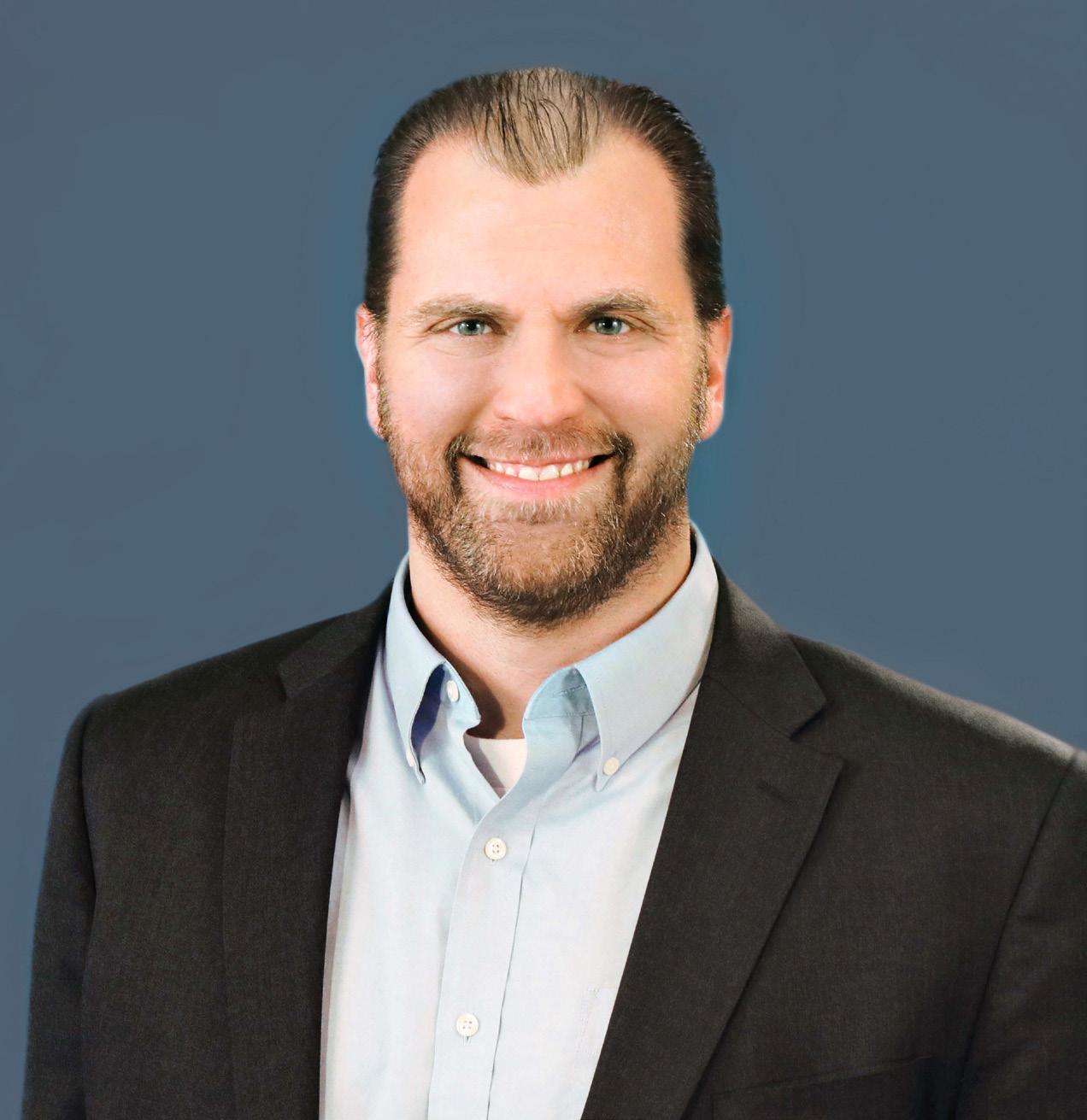
Brandon Covert oversees the introduction of ingress technology to make the in-stadium experience seamless for Cleveland Browns fans
By Russ KlettkeIf there was any benefit from the pandemic era, it might be seen at FirstEnergy Stadium, home of the Cleveland Browns. During the 2020-2021 season, when in-stadium attendance was limited to 12,000 people (about 18 percent of capacity), it was the moment for the team’s IT folks to test out advanced technologies that enhance the fan experience—not just at football games, but if all goes well, for anyone attending large sports and entertainment events in the future.
Brandon Covert, vice president of IT for the Cleveland Browns, is pretty enthusiastic about those technologies and what they can do. One is Evolve Express, which is a touchless security screening system that greatly speeds
up the stadium ingress process (i.e., more than 90 percent of ticket holders do not need an individual check). The second platform, Wicket, uses facial recognition in place of digital tickets for entry, and in a future date it could also replace cash and cards for concession transactions.
These are game-changing technologies to be sure. But it was because of reduced COVID-era game attendance that the organization was able to test them under real game-day conditions on a small scale. From that experience, Covert’s IT crew was able to see the possibilities of its post-pandemic implementation.
So how would the fans respond? Does this conjure privacy concerns that might be off-putting? And how did
that work in 2020, when facemasks were required of all attendees?
Those were questions the team had to answer for Haslam Sports Group, which among its entities includes ownership of the Cleveland Browns and operating rights to Major League Soccer’s Columbus Crew SC. “This took a willingness to be leaders,” says Covert, adding that the technologies will also be employed at the New Crew Stadium, the 20,000-seat home for Crew SC that was completed in the summer of 2021.
Approval of this, particularly the facial recognition component, was ultimately up to the football and soccer fans.
But the technologies had almost zero sports stadium experience to draw from, so Haslam Sports Group embraced the opportunity to run a pilot
Truly a great article showing how innovative seamless game day experiences really raise the bar. It is all about the experience, whether it is a frictionless entry or the ease of purchasing concessions. Customers are customers, as Brandon Covert states, whether it is banking, healthcare, sports, or some other industry. By creating a fan experience that focuses on removing complexity you make it easier for all involved to provide and access the services they want, all the while increasing productivity, profits, and customer satisfaction!

program. They sent an email invitation to ticket holders, expecting perhaps a couple hundred would opt in. About eight hundred fans signed up—more than enough for a solid first season test.
“I was at the gates the first time we used it,” Covert says. “You could see the excitement on their faces, never having to pull out their phones to show an electronic ticket. It was like they were saying, ‘That’s it?’”
The Evolve Express touchless security checkpoint system is hardly visible to the person entering the stadium other than if they pass through two columns similar to those used in airports and retail stores. Each person is scanned by this technology, which is sensitive to the thickness, density, and shape of objects. This distinguishes car keys and steel-toe shoes from
prohibited items, including nonmetallic objects of interest.
Each station is capable of handling 3,600 people per hour (one person per second), and it also identifies individuals, the object, and location on them that will require a closer inspection.
The faster means of entry with the combination of Evolve and Wicket is a huge selling point. “Whether it’s twenty thousand or one hundred thousand people, a surge of fans often arrives about fifteen minutes before the game or event starts,” Covert says. “Ticketing was always a bottleneck, in addition to security checks of bags and pockets. The fastest entry is the most frictionless entry.”
Covert and Haslam Sports Group’s management knew they were entering
brave new world territory with the technologies, particularly with the biometric information links to concessions transactions expected in a later phase. The organization made a commitment from the start to keep all such data private and protected—property of the organization and not for sale. That promise is in both the fine print as well as boldly stated in communications to ticket purchasers who opt in.
During the pandemic, ticket purchasers electing to participate in the Wicket test submitted two photos, one with a facemask on and the second without. “This was a big concern,” Covert says. “But we had zero false positives in the first year.” The payment system application, allowing a fan to purchase food and beverages, will be rolled out when facemasks are not as prominent.
Covert is the right person to introduce these kinds of new technologies. He cut his teeth on Y2K programs at the turn of the millennium, and after consulting on IT and cybersecurity for banks and hospitals, he was hired into
the Browns organization. He finds that working in the sports industry allows business agility.
“Sports is a competitive business, like any other,” he shares. “But the ownership structure supports what we do in the interest of fans. They are customers, just the same as banks and hospitals.”
Axess is extremely excited to be partnering with the Haslam Group at the new Columbus Crew Stadium on contactless access control technology. Brandon Covert is known to be an industry technology leader and an out of the box thinker. Working with the Crew team on delivering next generation contactless access solutions for their new stadium is very exciting, as is getting to partner with Wicket and Evolve to deliver an innovative integrated facial recognition and security checking solution.
Wicket is a software company that develops facial authentication solutions for ticketing, payments, access control, and crowd measurement, allowing live venues to deliver a touchless, speedy, and safe guest experience. The Wicket Platform integrates seamlessly into existing infrastructure allowing guests and staff to use their face as their credential, and crowd measurement to ensure social distance compliance.
“You could see the excitement on [fans’] faces, never having to pull out their phones to show an electronic ticket. It was like they were saying, ‘That’s it?’”
For any lawyer, information is key. Bilzin Sumberg trusts Chief Knowledge Officer Paul VanderMeer to leverage technology and uncover efficiency to help the commercial firm stand out from the crowd.
IsThe Golden Gate Bridge is 8,980 feet wide. New York City was the capital of the United States from 1785 to 1790. The gestation period of a giraffe is fifteen months.
Most people take the ability to find facts for granted, but Paul VanderMeer doesn’t. VanderMeer remembers spending countless afternoons in his elementary school library as a young student, where he pored over books about ancient history.
“Reading about things like the Trojan War and Pompeii enriched my life,” he recalls.
“And I realized I could have that experience at the library only because someone at some point had organized facts and in-
Paul VanderMeer’s to-do list for chief knowledge officers (CKOs) new to the game is simple. In fact, his “list” contains just one key piece of advice: play the long game.
While CKOs are always pursuing exciting innovations and demonstrating the latest digital tools, attorneys are often busy with other demands and responsibilities; testing out the latest technology is not their top priority. CKOs who are willing to play the long game can avoid overwhelming busy attorneys and instead look to implement (and then later build upon) smaller solutions that are easy to use and understand. Keep all shareholders receptive, do your research, and be ready to step in with the right tool when the time is right.
formation in a way that made it available at my fingertips.”
VanderMeer later went on to study library science in college. He started his career gathering information for an ad agency, and later managed library operations staff and developed a performance management system for Microsoft. He served on a public library board in his local community. Twenty years later, VanderMeer is the chief knowledge officer at Bilzin Sumberg, a commercial law firm based in Florida.
One might assume that librarians at law firms retrieve dusty leather tomes from large oak shelves and search for antiquated Latin terms that somehow relate to a modern trial. VanderMeer, however, explains that legal chief knowledge officers play a vital role at the intersection of business and technology. “Information powers a law firm,” he says. “Whoever can innovate and find new ways to leverage information has an undeniable competitive advantage.”
As chief knowledge officer, VanderMeer leads a team of eight employees (including three lawyers and three library scientists) dedicated to developing solutions and implementing technologies to increase efficiency and enhance profitability. Together, they are responsible for new business research, due diligence, competitive intelligence research, and developing and maintaining a robust intranet.

Paul VanderMeer’s note that CKOs are a vital role at the intersection of business and technology is so true! Increasingly we see that innovation is driven not just by the “five forces” (threat of substitute products/ services, bargaining power of suppliers and customers, threat of new entrants, and current rivalries of existing competitors) but through the experiences people cannot live without. My dad, a retired lawyer, helped me get to know the profession well as I spent countless hours in the law library. Getting the right information easily is a lawyer’s dream. But when you challenge someone to learn something that requires change, which most are not willing to do. I admire Paul’s success in a tough but awesome job of delivering innovation as well as experiences that matter.
VanderMeer, a self-described tech and gadget junkie who pits Amazon Alexa and Google Home devices against each other in his own home office, is constantly pushing his team to innovate and expand on key technological advancements. “Our goal is to identify and eliminate our client’s pain points so they can work better, smarter, and faster,” he says.
While many firms talk about efficiency and innovation, Bilzin Sumberg has invested the necessary resources into making real improvements, and VanderMeer’s track record of producing results has won him credibility.
Soon after he joined the firm, he volunteered to take over an important intranet project from another department. VanderMeer brought in a Microsoft Sharepoint expert, added data sources, and built a variety of successful integrations. More recently, his team built out and deployed a matter management platform that gives lawyers a 360-degree view of their cases. The system centralizes all relevant information pulled from many sources so users can search by judge, jurisdiction, case name, and other hyper-specific fields to get immediate results.
These and other tools liberate employees from low-level, monotonous work. A new AI tool VanderMeer developed with a website business partner automatically tags related information on the Bilzin Sumberg website. Now, internal marketing employees who once performed the task manually can work on highervalue endeavors.
But perhaps VanderMeer’s most impressive recent achievement is the digital dashboard his team built for the firm’s capital markets group. The custom tool— loaded with notices, alerts, and reports— gives attorneys a real-time look at where each of their matters is in the process cycle. The dashboard has reduced reporting time by about two weeks.
In normal times, having all employees in one office helps VanderMeer uncover new opportunities for innovation. Collaboration is key, he says, and he refuses to slow momentum in the digital and remote world of COVID-19. His team is pushing forward with virtual happy hours, weekly group chats, and important one-on-one meetings.
The period has also produced at least one positive indirect result—lawyers, who are notoriously reluctant to adopt new technologies, have had no other choice. Many have tried new solutions for the first time.
With his colleagues more receptive, VanderMeer is looking to seize the opportunity in a post-pandemic world. “We have more ideas and are always hearing the need to create something new,” he says. “That makes my work interesting each and every day.”
“Our goal is to identify and eliminate our client’s pain points so they can work better, smarter, and faster.”
Anissa Elsey lives loyalty, empathy, and compassion both as CHRO at Nazdar and cofounder of nonprofit In the Name of GRACE
By BILLY YOSTAnissa Elsey has been at Kansas City-headquartered Nazdar for twenty-two years. For all intents and purposes, she would probably have been at her previous job just as long had it not been for a conflict of interest. The then-director of human resources met her husband on the clock. “It’s a good story because we’re still together today,” Elsey says, chuckling. “Along with my husband, it gave me the opportunity to come to Nazdar.”
Loyalty, empathy, and compassion aren’t just mainstays in Elsey’s leadership over two decades at Nazdar, and currently in the role of vice president and chief human resource officer at Nazdar. It’s a practice she and her husband have dedicated their lives to outside of work by founding—in tandem

with close friends Nancy Whitworth and Doug Ballou—the nonprofit In the Name of GRACE, whose stated goal is to “provide a safe and sober environment for those who are recovering from addiction to drugs and alcohol.”
During a short conversation with Profile in March 2021, Elsey spoke on the multiple initiatives underway at Nazdar on behalf of its employees, the transformational impact of being named one of the Kansas City Business Journal ’s twenty-five “Women Who Mean Business” in 2014, and the work she and her husband are doing on behalf of a daughter struggling with substance use.
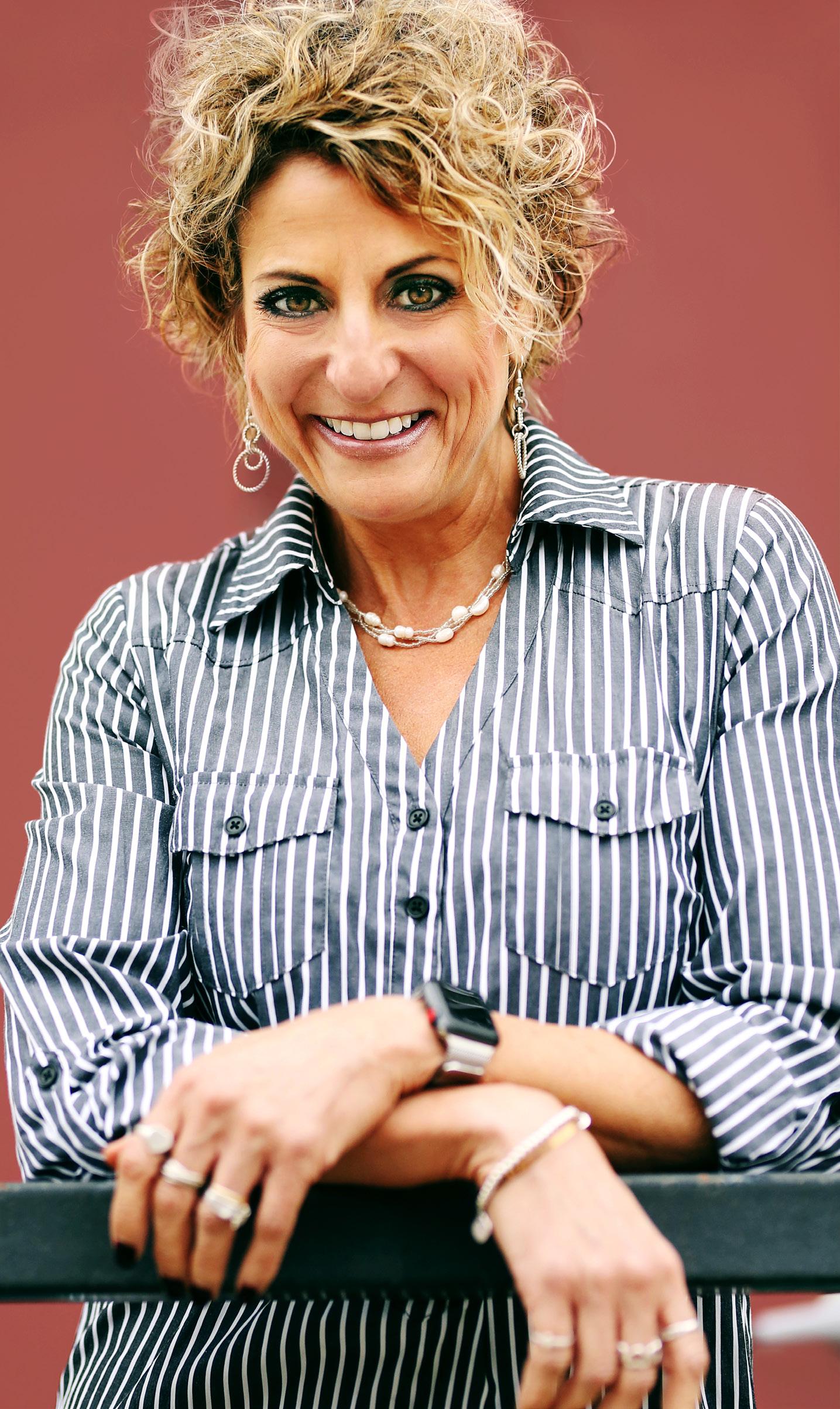
In all things, Elsey’s grace is what sets her apart.
While trends and taglines have come and gone, Elsey’s goal has remained consistent. “One of the most important things about being here has been building a culture and environment where employees want to come to work, they want to stay engaged, and they bring their full selves to work every day,” Elsey says. “It’s just the basic idea that each person and their contributions create the whole that is greater than the sum of its parts.”
With just two presidents during her tenure, Elsey says leadership at Nazdar has always been strong in backing her team. It’s emblematic of a wider two-way communication initiative that is prioritizing an intentional effort to make sure that leadership understands the needs of its larger team. In some cases, that includes confidential communication, and in others it means a chance to talk with the entire organization at monthly company-wide meetings. With over four hundred employees across the globe, it’s a chance for Nazdar to come together and get on the same page.
The company is also working to cultivate its next generation of leaders from inside with its Learn, Emerge, Accelerate, Develop (LEAD) program. Nazdar has identified three cohorts of prospective leaders with all varieties of experience.
“These may be people currently in management, or they might be up-and-comers from our emerging cohort,” Elsey explains. “We’re identifying and continually
reevaluating our high-potential employees through succession planning reviews and hoping more employees, along with new hires, may be brought up in the future.”
Nazdar has also sought to make employees feel part of the family-owned organization in meaningful ways outside the office. Every employee is allowed two days of volunteer time off every year to be put toward a 501(c)(3) nonprofit. The Thrall family, who owns Nazdar, also matches any employee donation to a 501(c)(3) of their choice up to $250 annually.
Nazdar is also expanding their Corporate Social Responsibility program to incorporate a focus on diversity, equity, and inclusion (DEI). Elsey is confident that an intentional focus on DEI will create a more innovative, positive environment and a broader, global perspective within the organization.
When it comes to nonprofits, Elsey is no stranger. As a founder of In the Name of GRACE, Elsey works with friends and colleagues to offset the funding pulled by the state of Missouri for its direly needed Oxford House substance abusing recovery facilities. The group hasn’t just acted as a bandage. It’s acted as a blessing.
The nonprofit was able to hire an outreach worker to begin the process of improving houses that were in desperate need of overhaul. Since 2017, of the original ten houses, four houses were closed and five were restructured or relocated. By 2020, In
the Name of GRACE had opened an additional thirteen houses—all done without the aid most other states offer.
The herculean effort is incredible, but the origin is heartbreaking. Elsey and her husband are now new parents at fifty. They adopted the two children of their daughter, whose substance use disorder continues to impact her life despite double-digit stints in and out of recovery facilities. It’s an experience that many have shared with family, friends, or workmates, but one so often swept under the rug.
The years of hardship motivated Elsey, her husband, and friends to try to create more recovery success stories. “It’s ugly, and there is a stigma that comes along with this fight,” Elsey says. “But I’ll tell you this: Every single one of these people is a human being. No one would choose addiction. It is a disease that ruins lives, and the only cure is hard work and complete devotion to staying clean for the rest of one’s life.
“GRACE is an acronym for Giving Recovering Addicts a Chance to Evolve,” she continues. “Our hope is to help get our residents to a place where they can do the hard work of putting their lives back together so they can evolve from dependence to independence through safe, sober living. That’s why we love Oxford House.”
Elsey’s experience of loss and hardship isn’t uncommon. But in sharing it, in using it to motivate such a positive impact for countless other people, Anissa Elsey is the way we all hope to respond to adversity.
“One of the most important things about being here has been building a culture and environment where employees want to come to work.”
ANISSA ELSEY
A short conversation with Ryan Oliveri makes it crys-
tal clear why Moody’s Chief Human Resources Officer
Melanie Hughes was able to quickly rope in her senior vice president and chief of staff when a then-potential pandemic made its way onto the radar of global businesses in early 2020.
Oliveri is no stranger to life-changing career events. While he admits that responding to the COVID-19 pandemic has been the greatest challenge of his professional life, there are a few line items in his résumé that provide healthy competition.
Before Oliveri was helping lead one of the world’s most well-known credit rating agencies through an unprecedented pandemic, he was a college graduate with a degree in physics. “There aren’t many options available to folks with a degree in physics unless
they want to go down the path of doing research or teaching,” Oliveri says. “I didn’t really have interest in doing either.”
After a brief stint at a software development company, Oliveri’s hope to work on Wall Street landed him a job at PaineWebber, but in the HR function as a project manager. “I had no experience in human resources whatsoever,” the SVP says, laughing. “I was leaving a company of forty-five people in northern New Jersey to join a company of twenty thousand across the US.” But Oliveri liked the challenge.
Almost immediately after arriving, UBS bought PaineWebber and that workforce became seventy-two thousand people spread all over the globe. Oliveri responded in kind. He moved to the company headquarters in Zurich, where he remained for five years, developing a love and appreciation for the variety of backgrounds, workstyles,
approaches, and ideation born of a truly global company. It was also where he met his wife, another expat in Zurich.
Oliveri has kept that experience close. “Ever since, I’ve always thought globally,” the SVP explains. “There is a lot of New Yorkbased thinking in this industry, and I think it’s so important to keep everyone else’s perspectives in mind.”
After coming to Moody’s in 2013, Oliveri’s success in rolling out a new global shared services function made him an ideal candidate for a recently vacated operational role. Another challenge. “I didn’t realize how difficult the step can be from managing people to managing leaders,” Oliveri admits. “But it was a truly wonderful experience.” He was promoted again in 2018—his third in five years—to his present role.
Responding to the COVID-19 pandemic has provided Oliveri with his
greatest challenge yet. But it’s how he and the Moody’s team are using the opportunity to plan for the future that makes their response even more impressive.

“I think one of the most important things we did initially was to make sure that our leaders were out there talking with our employees,” Oliveri says. “When we started having sessions with our CEO, all of our people saw him sitting at home in a regular chair with a wall behind him. There are meetings with dogs or kids in the background. It reminded us that we were all going through this thing together and acknowledging that we all have our own unique struggles.”
Oliveri and his wife, an immigrant from China, certainly had their own. His wife’s parents still reside in Beijing, and the two had to watch from afar as China endured the first brutal wave of the pandemic. Perhaps it’s why Oliveri threw himself into his work with such fervor.
Moody’s conducted a number of surveys to continually track employee morale and gauge the emotional well-being of its people. As numbers began improving in Asia, Moody’s enacted a reopening protocol that had to meet specific criteria before the conversation to reopen could even be had.
But it also remained important that the business that operates in one hundred cities in forty countries allow more local

leaders to have a voice. “It’s led to a healthy dialogue about the right approaches to take,” Oliveri explains. “This process helps make sure we’re all aligned and comfortable with the approach.”
The massive shift in workplace strategy, employee safety, and employees working from home led Moody’s to examine the issue from a much wider scope. The Workplace of the Future initiative is the company’s search to figure out not only what the “new normal” may look like but also what the traditional office space even means.
“Broadly speaking, the vast majority of our employees expect a lot more flexibility when they return to the office,” Oliveri explains. The organization brought in EY to help draft what that future of work might look like for Moody’s.

With the possibility that employees may only be spending part of their week in the office, the entire notion of “What is an office for?” comes into question.
“Our plans are to transition that space into much more of a collaborative space environment, not that traditional idea of coming into the office to close your door and just work,” Oliveri says. “Our whole effort here is about giving employees the flexibility that they want while also having them in the office to drive that collaboration and innovation that are core to this company.”
“There are meetings with dogs or kids in the background. It reminded us that we were all going through this thing together and acknowledging that we all have our own unique struggles.”
RYAN OLIVERI
At a recent onboarding presentation, Kristy Swegheimer asked new hires how they had first learned about Power Grid Engineering (PGE) and CE Power Engineered Services, the two subsidiaries that make up Qualus Power Services. One employee had been following PGE since attending a seminar led by the company’s CEO—five years ago.
“Five years had gone by, and that person is now our employee,” says Swegheimer, the executive vice president of human resources at Qualus. “This type of story is a constant in what I do.”
The reason why such stories are so common at Qualus is due to the company’s unique approach to training and development. In her role, Swegheimer spearheads efforts to recruit new talent and to help existing employees refine their skill sets. Underlying those efforts is a company-wide
commitment to putting people first that Swegheimer extends not only to Qualus’ own employees, but also to talent across the power industry.
Although the power industry was new to her when she joined PGE in 2017, Swegheimer likens her current landscape to the HR outsourcing space where she got her start as a recruiter. She worked her way up to sales and management roles until one of her financial services clients, Newport Group Inc., invited her to build out the company’s in-house recruiting team and later the full HR department.
As director of HR at Newport Group, Swegheimer helped the company navigate tremendous growth, achieved both organically and through mergers and acquisitions.
The M&A growth presented Swegheimer with the challenges of preserving company culture and laying out all HR elements in advance of a deal. “The aspects that people don’t always think about, like the basic structure of benefits and the payroll, are components that make employees feel secure,” she explains.
When Swegheimer decided to leave Newport Group after eleven years, PGE proved to be a perfect fit for her. “I fell in love with the owners’ commitment to people,” she elaborates. “The culture was extremely important to them, so I knew that I could really make a contribution.”
Swegheimer’s level of contribution only increased when PGE merged with CE Power, forming Qualus Power Services, in
Kristy Swegheimer EVP of HR Qualus Power Services2018. She transitioned to the EVP at Qualus, where she now oversees an HR department serving roughly 780 employees between the subsidiaries.

But first, she needed to integrate the two companies’ HR systems and processes, drawing on her prior M&A experience to bring the halves together into a cohesive whole.
Throughout the merger, Swegheimer focused on the company’s employees—a people-first attitude that remains at the heart of Qualus’ operations. Indeed, Swegheimer’s meetings with company leadership center around the impact of changes on employees. “Every decision that we make, we think about how it will affect our people,” she says.
Putting people first has mattered all the more to Swegheimer since the onset of the COVID-19 pandemic. “As a company, we took a step back to regroup, assess the situation, and create a plan that would safeguard employees,” she says.
Despite the unanticipated nature of the pandemic, Swegheimer believes that Qualus implemented a successful response. The company already practiced openness in employee communications, but Swegheimer leaned in even further to keep employees in the loop as updates emerged in real time. “Our communications helped ensure that our employees felt connected,” she says. In fact, Qualus has continued to grow and gain new employees throughout COVID.
(248) 822-8000
mma-mi.com marshmma.com




























































While industry training methods changed due to COVID, the demand for training and internal expertise stayed the same. QualU, the company’s training department, is an established leader in industry training, offering courses both internally and externally.
“Our philosophy has been to help train the industry, not just our own employees but those we work with, work for, and even compete with,” Swegheimer notes. She sees this philosophy as critical to building long-term relationships and to being seen as an organization that knows the importance of internal knowledge and continuous development.
“The trainings that our teams deliver allow the company to forge relationships with other companies in the power industry and to attract talent to Qualus based on the company’s dedication to growing employee skill sets and competency levels,” she says. Swegheimer speaks passionately about hoping to expose more young people to the industry as part of Qualus’ work to lead talent development in the field. She also hopes to increase opportunities for current employees to step into higher-level
roles as the company expands. To that end, she champions maintaining visible career paths within the company and promoting effective top-down communications to reinforce employees’ connection to Qualus’ overarching goals.
Whether reminding employees of their essential contributions to Qualus or encouraging them to take their careers to the next level, Swegheimer will always have her employees’ best interests at heart. “Our business is based on people, and people who have a strong impact in the industry,” she says. “It’s vitally important to the company and to me that our employees are taken care of.”
Through industry training for both those inside and outside of Qualus, Swegheimer is always encouraging, putting people front and center.
A dynamic HR leader, Kristy Swegheimer has an innate ability to build consensus, successfully aligning cultures and HR policies while integrating vendor relationships and administrative platforms in pursuit of a clear mission. Marsh & McLennan Agency is pleased to partner with Kristy and Qualus in developing an employee benefits blueprint to achieve their strategic initiative goals.
Working with the right partner can make goals more achievable and the future less unknown
Marsh & McLennan Agency works closely with CHROs and business leaders to foster strategic partnerships and develop thoughtful employee benefits solutions that support your business in the moments that matter.
“Our philosophy has been to help train the industry, not just our own employees but those we work with, work for, and even compete with.”
KRISTY SWEGHEIMER
“An engaged workforce is way more productive than a disengaged one,” says Rashmi Wadhwa Gupta, CHRO and global head of human resources at PRO Unlimited. This fact serves as one of the tenets of Gupta’s philosophy in her approach to HR for the global professional services and technology company—she is committed to ensuring that PRO Unlimited’s employees, who are located all over the world, feel engaged and taken care of.
Gupta studied to be a software engineer but then swiftly made the switch to marketing research and communication, graduating from MICA. Her first job was at the Gallup organization, which has a substantial consulting practice that
instilled in Gupta the importance of a strength-based approach.
“That philosophy has been the foundation of my beliefs as a HR professional,” Gupta explains. “They really believe in unlocking the potential of people by focusing on their strengths.” Gallup has published studies that prove the claim that employee engagement improves productivity, which, of course, leads to benefits on the bottom line.
After Gallup, Gupta went on to VMware, a computer software company located in Palo Alto, California, where she put her knowledge to work running their employee engagement surveys. “VMware had twenty thousand-plus employees and was, in a lot of ways, a typical Bay Area tech company— which meant that they were very employee focused,” Gupta says. “Amazing perks, big
Rashmi
Unlimited’s close-knit culture to improve not only employees’ sense of well-being but productivity as well
campus, celebrity events, philanthropic focus. All of the things that come with being a big tech company. So it was a very different environment.”
Gupta took on various roles during her time at VMware, including global talent development manager, director of people development, and director and HR business partner. After about six years with the company, she decided that she wanted a broader experience of the HR spectrum and moved on to PRO Unlimited—a smaller company that offered Gupta the chance to make a more focused impact.
“It was a very conscious move on my part,” Gupta explains. “I had always envisioned going to a smaller company and leading an HR department through organic organizational growth.”
Though PRO is a smaller company, it presented new and exciting challenges to Gupta. Given the nature of PRO Unlimited’s services, a majority of their 1,400 or so employees are located on-site with their clients, which means that they need to be much more robust and outward focused with their company culture.
When Gupta arrived at PRO in 2018, the company had just reached the one thousandth employee mark and benefited from a naturally close-knit, familiar environment. “I realized that we needed to formalize that spirit and that culture because you have to

“When people feel acknowledged and accepted, and know that someone is watching out for them, they will be more engaged.”
RASHMI WADHWA GUPTA
scale it to all the new employees that have been coming in,” Gupta says.
Gupta and her team initiated this formalization through the “PRO Promise,” a simple statement of who they are and what they do as a company. “It was important to us because so many of our employees sit on client sites. It’s important we strike the balance between internalizing our culture and aligning to our clients’ cultures,” Gupta points out. “So having a ‘PRO Promise’ and the attributes of success really gave us the grounding in the binding we needed.”
Then the COVID-19 pandemic broke out. Gupta and her team doubled down on the company mission to ensure that the staff felt engaged and valued. “With the unprecedented stress that came with COVID, I saw it as a time for us to rise up to the occasion as an employer and show up for our employees,” Gupta explains. “A lot of people were struggling with parental, medical, and economic pressures of what was happening. So, among other things, we decided to move to an unlimited PTO policy. It felt like the right
time to give our people more liberty to take time off as needed.”
PRO Unlimited and Gupta’s HR team also decided to support their staff by shortening meeting times so that employees could check on their kids with more flexibility. They also granted each employee a $600 bonus to invest in their wellness and make sure their at-home workspaces were comfortable for them.

Gupta stresses that part of engaging staff comes through valuing a sense of community. She and her team strive to build and celebrate diversity, which impacts both employee well-being and the company’s financial success.

“As we know through various research studies, greater diversity is strongly correlated with higher profitability and value creation,” she says. “In addition, it helps us build an inclusive, accepting culture integrated into the strengths-based philosophy. When people feel acknowledged and accepted, and know that someone is watching out for them, they will be more engaged.”

Businesses today need an advisory firm that’s built to deal with the complex challenges they face. We are that firm.
Our purpose is to help our clients play their role in society more successfully
The world’s leading critical issues firm.
“I saw it as a time for us to rise up to the occasion as an employer and show up for our employees.”
RASHMI WADHWA GUPTA
On her way to working as chief human resources officer at VTG, a Virginia-based leader in defense and intelligence force modernization and digital transformation solutions, Elizabeth Alston made one really long stop on her career journey at Vistronix (later called ASRC Federal).
working, Alston was attracted to the company, especially knowing she would be able to come in and make an impact across the entire organization.
By KEITH LORIA“As far as finding HR as a field, I feel like I was meant to find Vistronix,” says Alston, who worked at Vistronix for nearly nineteen years. “Over my time there, I was able to grow my career and make my path the way I wanted it to be. I was able to engage with managers and executives throughout that tenure at so many different levels in the organization.”
This depth of experience helped Alston advance her career, thanks to a number of different merger and acquisition opportunities. Eventually Vistronix was acquired by a larger organization, and she got to see the other side of an acquisition and how the HR department works during a transition.
Having worked with VTG’s CEO John Hassoun at Vistronix and being familiar with his leadership style and way of
In her job, she has full oversight for all HR functional areas, including employer relations, compliance, talent acquisition, and more. Alston prioritizes employee experience and is proud of the overall cultural shift and focus of the organization that she has been able to be a leader of—especially the employee benefits programs.
“Over the past couple of years, we have spent a heavy focus on improving the employee experience by adding new things to the benefits package and taking the time to learn more about what our staff needs,” Alston explains. “That involves being able to reply to those needs in a positive manner, listening to the team and understanding their pain points.”
With team members spread out nationwide, and some who travel internationally and in different types of work locations, Alston must make sure the needs are met for all employees, as well as their eligible dependents.
In 2019 VTG acquired two companies, and it added another at the end of 2020. That
As chief human resources officer for VTG, Elizabeth Alston curates a welcoming culture and builds trust across the company with a customer-centric mindset
means Alston has had to onboard a number of people and get everyone on the same page as far as the HR functions.
“When you acquire an organization, we’re not buying boxes of stuff,” she says. “We’re in the service business, and these are people. It is their professional skills and experiences for which our government customers come to us. We take very special care to understand how their culture fits with ours. People aren’t always great with change, so taking the time to listen to what the special things about them are and making sure you protect those things is important.”
While Alston is in charge of the HR component of the company, she credits her team with making the department top-notch and allowing her the time to build the partnerships and trust of everyone involved.
“I have really strong colleagues who are thinkers, who take care of all the day-to-day tasks and give me the bandwidth to focus on the specialized merger and acquisition integration activities,” she notes. “As a leader, I let them own their particular areas and tasks and let them go and do it.”
That’s something Alston learned from her very first HR manager, who taught her how to do something and explained why it was done that way while also giving her the freedom to carry through. And thinking back to her upbringing, Alston credits her dad for instilling in her a customer-centric mantra, which has helped drive her vision for serving employees.
“I was raised in a customer service kind of household as my dad spent his entire
career with Delta airlines, which is all about hospitality,” she recalls. “And when I think about government contracting, it’s also about customer service.”
As a mission-essential business, VTG has continued to work throughout the pandemic, with half the company working at home and the other half on-site. However, the company needed to learn how to work remotely practically overnight. This naturally created some challenges for Alston.
“For the HR team, our biggest impact surrounded information, being able to communicate to people, and providing support right out of the gate,” she says. “Our goal was to help managers as well as employees navigate these challenging times and keep people focused and positive.”
She quickly leveraged Microsoft Teams and emphasized having face-toface conversations and getting employees comfortable with participating in team meetings from home.

The company also sent out care packages to all employees with items such as face masks, gloves, hand lotion, and a deck of playing cards to let them know they were all in this together in these uncharted waters.
“Government contractors do important, critical mission kind of work, and we needed to help our customers drive toward that and keep everyone focused,” Alston says.
Looking ahead, Alston hopes to continue to improve on the processes for employment engagement, highlight the value of teams, and improve employee diversity activities within the organization.
HUB International is the world’s largest privately owned insurance broker with more than 12,000 employees in 475 o ces globally. HUB is a full-service global insurance broker providing: Business Insurance, Risk Management, Bonding, Employee Benefits, Executive Benefits, Retirement Services, HR Support Services, and International Insurance through HUB’s vast network of specialists. HUB provides clarity to a changing world with tailored solutions and unrelenting advocacy. HUB focuses on niche Insurance and Total Rewards Solutions for employers of all sizes.
brett.ho man@hubinvestmentservices.com hubinternational.com
“Over the past couple of years, we have spent a heavy focus on improving the employee experience by adding new things to the benefits package and taking the time to learn more about what our staff needs.”
ELIZABETH ALSTON
Company culture is usually defined as a shared set of values, goals, and practices that characterize an organization. But when LendUp launched Ahead Financials, a new banking platform for the underserved, they looked to Chief Operating Officer Kimberly Morgan to build a vibrant and personal company culture rooted in service and the celebration of diversity.
“Culture is at the root of how we work together to successf ully serve our customers ,” Morgan explains. “Celebrating diversity enables us to understand each other’s unique background and experience, helping to shape our understanding of the

diverse population we serve and equip our teams to communicate more clearly with each other, make decisions, and move forward together.”
Morgan initially began working with LendUp, a fintech company that guides its clients toward healthier finances via loans, educational resources, and access to credit reporting, as a consultant before being brought on full-time as vice president of people operations in 2019. At that point, LendUp had gone through a series of structural, leadership, and locational changes that had left the company culture in a state of fatigue and exhaustion.
The following year, Morgan became the company’s first African American COO, and
she made the celebration of culture a cornerstone of the company. Morgan invited the team to purposefully honor every culture across the organization. Rather than form traditional employee resource groups, Morgan invited ambassadors from within who had a passion for shaping the company’s internal messaging and cultural connections.
“We started with ‘What does culture look like?’” Morgan remembers, explaining that cultural celebration shouldn’t just be about any one area, such as celebrating a country’s cuisine.
For instance, when LendUp celebrated Chinese New Year throughout February 2020, the Oakland headquarters building
was decorated with imagery associated with the holiday. They went even further with the celebration by gifting the employees a red envelope inscribed with a virtue for them to embody throughout the year. It is a culturally significant part of the holiday that many companies tend to look past.
To honor Women’s History Month in March, the ambassadors interviewed every woman in the office, then broadcast the footage onto a big screen in the office typically used for all-hands meetings.
“They saw their face and they saw who they were and what inspired them on the screen,” Morgan says. “And it was an opportunity for their coworkers to see the same thing. As they were navigating their

workday, they were compelled to stop, look, and digest the lives of some of the people that they work with every day.
“ It allowed coworkers to stop, pause, and digest a little more about their coworkers,” she continues. “It captivates the imagination. Imagery normally stays with people longer than text.”
Morgan and her team applied the same comprehensive, audiovisual aesthetic to Diwali, Pride Month , and every other cultural touchstone at the workplace throughout the year, even as the COVID-19 pandemic moved day-to-day operations to a remote setup. At the time of her January 2021 interview, Morgan revealed that LendUp employees had already planned how they
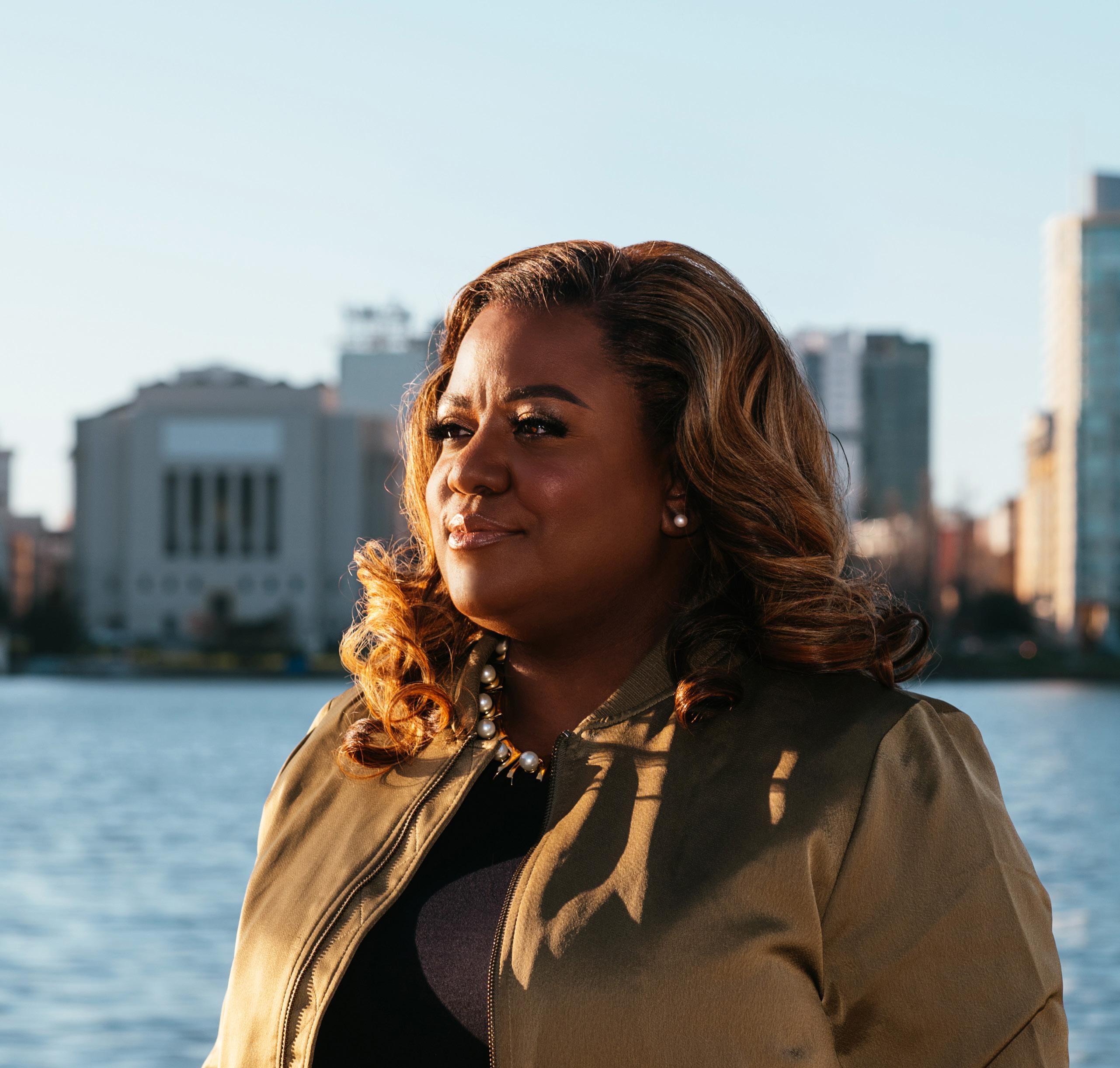
would celebrate cultural holidays while not in the same building.
“Because we have set the foundation, the expectation is already there from the workforce,” Morgan says. “The pillars that we set up in a pre-COVID environment have set us up for continued engagement.”
There have also been opportunities for LendUp employees to gather safely in person during COVID with the goal of helping the community around them. Spearheaded by Morgan and dubbed Lending a Hand, the initiative helped clean up nearby Lake Merritt and partnered with the East Oakland Collective for a clothing drive on Martin Luther King Day.
The launch of Ahead Financials, LendUp’s new digital banking platform for the underserved, has been a culturally immersive experience. Morgan has been an instrumental catalyst for the brand to implement cultural marketing campaigns that lean into social media and gaming.
For example, two recent campaigns held on Twitch fueled important conversations about financial inclusion and education, ultimately helping Ahead attract new customers and distinguish itself from other financial institutions. Ahead customers have been largely ignored by mainstream banking, and Morgan has made it a point to

build the brand around a culture of inclusion and access.
Morgan credits her passion for giving back and melding different cultures together to her own unique background. Although she was raised in the Central New Jersey beach community of Neptune, both of her parents hailed from Alabama, and her childhood was split between the South and the Northeast.
“One of my nicknames is Jersey Belle,” Morgan says, laughing. “Growing up in the South, my parents knew everyone in their community and treated everyone like family. My southern heritage, and my position to embrace my peers and colleagues from a familial perspective, has always been a core tenet to my outlook on life, especially living and working in the hustle of New Jersey.”
Morgan’s parents also prioritized community service through a variety of activities, primarily through the Boys & Girls Clubs of America, where her father sat on the board. Morgan herself sits on the board today, in addition to being involved with the organization’s Youth of the Year program and volunteering with local food banks to help prevent child hood hunger
Her mother was a teacher in an underserved community in a nearby town and
“Celebrating diversity enables us to understand each other’s unique background and experience, helping to shape our understanding of the diverse population we serve.”
KIMBERLY MORGAN
always went out of her way to make sure her students had breakfast. Her parents’ penchant for service extends into Morgan’s leadership style. “Like my parents, I lead by serving others,” she says.
Morgan’s leadership style aligns servant leadership with a multidimensional approach. In addition to being of service to her team, Morgan leads dynamically across the organization.

“Everyone on the executive team serves at the pleasure of our amazing CEO Anu Shultes,” she says. “But I serve my peers as well and always take their perspectives into consideration when making my decisions. We collaboratively solve problems through a sense of community and understanding.
“That is how I’ve navigated and approached obstacles throughout my career,” she adds. “The celebration of community, culture, and service is paramount to who I am, which is why I love what I do.”
“We collaboratively solve problems through a sense of community and understanding. That is how I’ve navigated and approached obstacles throughout my career.”
KIMBERLY MORGAN
Companies with steady growth like Sprout Social are seeking ways to hire vital technical talent. John Colburn’s management approach helps make this possible.
By PETER FABRISWhile rapid growth in a company is a good problem for executives to have, it can present challenging opportunities to find and scale top talent. That’s certainly the case for engineering leaders at Sprout Social, a provider of social media listening and analytics, social management, customer care, and advocacy solutions for more than twenty-five thousand brands.
Sprout Social has been fortunate to grow through the COVID-19 pandemic. For John Colburn, vice president of IT, security and compliance, the past year has only intensified his need to staff up and cope with the company’s swift progression. Founded in 2010, Sprout Social now numbers more than seven hundred employees.
Hiring technical talent has been an imperative for Colburn since he joined the company in 2017, after four years with financial services firm Morningstar. The market for technical professionals has been tight during this period—especially in security and engineering roles, which
are critically important to Sprout Social. Colburn’s employee-centric management approach has been effective in this tough hiring environment.
His staffing strategy aims to overcome a circumstance that no manager can change: soaring demand for technical talent in all industries. “All senior technical folks are difficult to find and recruit,” he says. “Every department in the corporate world leverages software, integrations, and automation to make their teams more efficient.”
To fill some key roles, Colburn is working to build a pipeline of junior-level people with certain intangible qualities. He provides them with a supportive management environment and coaches them up to take on greater responsibility. He’s patient enough to let them grow into their roles. It’s a philosophy that Colburn has experienced in his own career and passionately believes in.
“My management style is informed by my past experiences,” Colburn says. “I’ve worked with both great and bad managers, and you develop a style rooted in observing what works well and what doesn’t.”
To find people who will thrive at Sprout, Colburn looks for qualities that don’t necessarily jump off a résumé. “I look for things that go beyond technical experience during interviews,” he says. “I want to learn about their life story. Do they have grit? Do they have examples of being innovative, empathetic, courageous?”
For example, a recent recruit had a unique response to a standard question
that caught Colburn’s attention. A typical answer to the question, “What is the most important thing you have accomplished?” consists of a narrative outlining a particular work project or personal achievement. In this case, the recruit spoke of an experience teaching disabled children how to swim at a summer camp.
This experience is indicative of a high emotional intelligence and empathy, Colburn says. It demonstrated the person’s ability to go beyond typical boundaries of the question, indicating confidence in their technical and advanced interpersonal skills. These qualities are vital, Colburn says, to devising one’s own ideas and being able to develop them in collaborative teams.
After new employees get acclimated, managers help them define career goals and set them on a path to achieve them. Colburn’s team uses a classification system consisting of multiple career bands to track the progress of team members from junior to senior level. Twice a year, each employee goes through a review process to see where they are and what they need to do to reach the next career band, Colburn says.
“Sprout has developed an open and transparent review process,” Colburn says. This way, employees and managers clearly understand how performance is assessed. “When you align expectations, these conversations are a lot easier.”
“Some people have specific goals such as earning a certification or gaining a particular experience,” Colburn says. Others want
“I look for things that go beyond technical experience during interviews. I want to learn about their life story. Do they have grit? Do they have examples of being innovative, empathetic, courageous?”
JOHN COLBURNJohn Colburn VP of IT, Security & Compliance Sprout Social
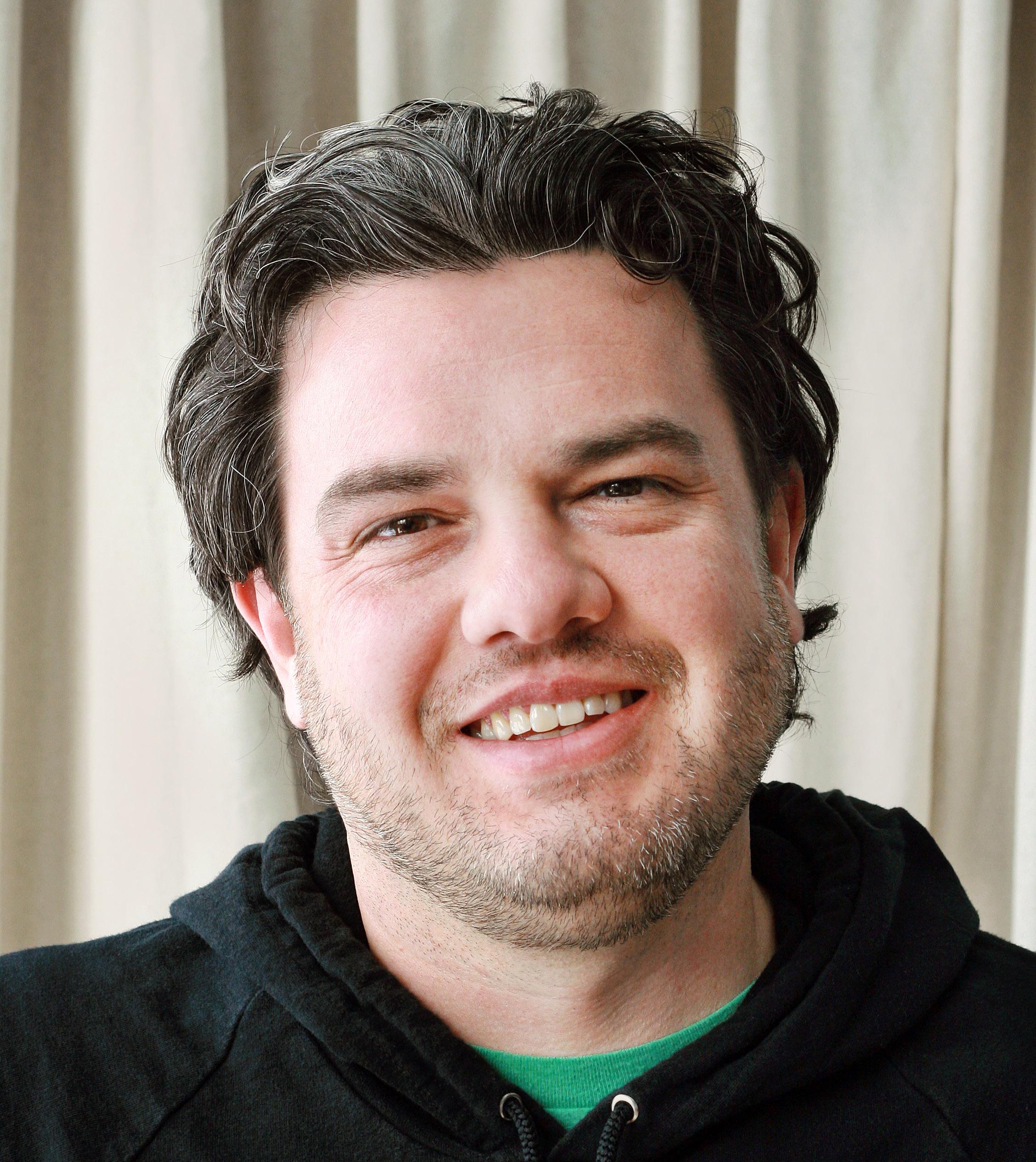
to work on specific projects—a wish that is typically granted. Being able to select a particular assignment gives them a sense of ownership, Colburn explains.
COVID presented some unique challenges in addition to managing increased business volume. “We have an increased focus to find talent with new skill sets,” Colburn says. For example, before COVID, the company did not have much need for people who knew how to provide technical and production support for large virtual meetings. With staff largely working from home, that capability suddenly became essential.
“What we’re building at Sprout is a once-in-a-career opportunity for folks to build and exercise new problem-solving skills,” Colburn says. “And our team has really stepped up.” Colburn’s team will be able to take on more responsibility while Sprout Social’s business continues to boom.
Colburn tracks this growth, looking out several years to forecast future staffing needs. But shorter-term metrics guide specific hiring decisions. “I look at the projects that we are working on and what impact they will have a year from now,” he says. “If a certain project will lead to a need for more support staff, for instance, I will schedule time to recruit in that area.”
“Understanding the potential his topnotch team could reach with the right tools, John recently managed a successful implementation of Salesforce Revenue Cloud that is transforming Sprout Social’s quoting and billing process, delivering significant value to his organization,” says Gary Benson, regional vice president of sales at Salesforce. “The outcome is a solid testament to his hiring and successfully building a very strong team.”
Colburn’s team is nearing twenty people. “After you hit about fifteen, you can’t lead as much from the front,” he says. “You have to be more hands-off and let the teams accelerate.” As a result, he’s adjusted how he takes the pulse of activity and progress. Now that his staff is more seasoned, he’s able to trust his managers to exercise more oversight day to day and rely on them to update him on the progression of projects.
Colburn is having less frequent interactions with junior staff, focusing more on strategy and planning. It’s a necessary step forward that indicates the maturity of his team. It’s a part of the job that he misses, but given the rewards of building a team in a fast-growth company, it’s also a good problem to have.
“My management style is informed by my past experiences. I’ve worked with both great and bad managers, and you develop a style rooted in observing what works well and what doesn’t.”
JOHN COLBURN

Barbie Winterbottom understands that HR can’t prepare for the future without becoming business leaders first. Getting them there is her mission.
By FREDERICK JERANTSometimes, a successful career grows in an orderly way: graduate, find a job in your field, and start climbing the ladder. At other times, though, the process isn’t quite so deliberate. Barbie Winterbottom, CEO of the Business of HR, is in the latter group.
Winterbottom started studying voice in seventh grade. “I come from a musical family,” she says. “Both of my grandmothers were classically trained pianists, and one great-grandfather was a member of the Philadelphia Orchestra and played on the soundtrack to Walt Disney’s Fantasia .” She
followed by studying vocal performance at Florida State University.
While her love of music and performing is definitely in her DNA, the idea of being a lonely “starving artist” while pursuing a Broadway career was daunting. After a stretch of waiting tables and tending bar, she took the oft-repeated parental advice and registered at several local temp agencies with the goal of finding a “real job.”
One agency was so impressed with her off-site performance they offered her a job at the agency as a recruiter, and so was the start of Winterbottom’s career in the world of talent acquisition and HR. “I was so fortunate that at this time, one of our biggest clients, Capital One, was expanding in the Tampa market like crazy,” Winterbottom recalls. “They were building a huge campus and were looking to hire approximately five thousand employees to populate it.”
Her great client relationship with Capital One paid off when they offered her a position to work with them and build out their management recruiting function and team. Over the next twenty-odd years, Winterbottom held increasingly responsible positions at HSN, Advanced Aesthetics, Health Plan Services, Amazon, and Sykes Enterprises Inc. before joining BIC Graphic North America as its chief people officer in 2018.

Then, in 2020, the pandemic hit.
Much of the company’s client base had been dedicated to providing promotional products for concert tours and other events.
When those events dried up, Winterbottom soon found herself laid off.
Rather than seeking another corporate spot, she took a leap of faith and in May 2020 launched the Business of HR, a coaching and consulting firm for HR professionals and teams. “My five-year plan had included starting my own consulting and coaching business,” she says. “COVID-19 just shortened the timeline.”
Winterbottom began to realize that most training, certification, and education available to HR professionals focuses on the tactical elements of HR. She would be energized by keynote speakers at conferences but return to her desk to realize the speakers had only talked about the end result.
“Literally no one ever talked about how you get there,” she says. “The programs available focus on about 10 percent of the

“The future of work is now, and we have to provide folks the skills and knowledge to understand the how and the why.”
BARBIE WINTERBOTTOM
work we actually do in HR and nothing about how to do it.”
She has set out to change all of this and provide HR professionals with not only a resource to learn how, but also a community of like-minded business leaders who work in the people space. “It’s time we stop merely talking and start doing,” she says. “The future of work is now, and we have to provide folks the skills and knowledge to understand the how and the why.
“I concentrate on improving effectiveness in this space,” she continues. “I coach and teach people how to transform culture, how to create leaders versus managers, and how to stop chasing chaos.”
To do so, Winterbottom developed a set of key concepts called the “Five Imperatives to Transform HR Professionals into Business Leaders,” which support her mission to turn HR into a business function and investment center:
1. Be a business leader first, and a functional leader second.
2. Be agile and adaptable—no more HR policy police.

3. Influence and inform, using data, experience, and intuition.
4. Create practical solutions, which must be simple and meet the business need.
5. Have courage.
Her company offers one-on-one coaching, small group coaching, and retained and project-based consulting, as well as coaching entire teams on developing processes and systems that let values and culture thrive.
A central factor in her work is a twelveweek Masterclass offered quarterly to



groups of individuals or entire departments. “We meet one hour each week,” she says, “and deep-dive into the five imperatives—what they mean and how they can be incorporated into real-life situations.” The class is also offered as two day-long sessions for in-tact HR teams.
Additionally, she’s established a vibrant online community with a virtual network of over four hundred HR professionals who can support and provide resources to people working in the HR/People space.

Winterbottom’s target market is broad, and she brings her vast experience of working with private equity firms, publicly traded organizations, start-ups, and the nonprofit sector to all she does. While she has worked for some of the world’s largest organizations, she enjoys working with smaller organizations. “They often don’t understand how important it is to have clarity and consistency around values in the organization and its people, and even a company of one hundred people or less can benefit from understanding how to operationalize your people systems.”
The young company appears to have found its niche—and Winterbottom hopes to quadruple its size throughout 2021.
“I coach and teach people how to transform culture, how to create leaders versus managers, and how to stop chasing chaos.”
BARBIE WINTERBOTTOMLooper Insurance is proud to partner with Barbie and The Business of HR, to help provide businesses with employer/employee benefits they deserve. Looper Insurance specializes in employer benefits and has over thirty years of benefit expertise. We’re your difference makers! Email Carla@looperinsurance.us now or call 1-352-540-0119.
 Junko Swain
Chief Accounting Officer
Upwork
Michael Scorsur
Junko Swain
Chief Accounting Officer
Upwork
Michael Scorsur
Junko Swain made the decision to emigrate to the United States on her own. The first-generation American left Japan because of what she saw as a limitation on her career ambitions after working in the fashion industry there.
“I think most women were expected to serve tea, get married, and quit,” Swain explains. “I really wanted to see what I could do and what I was capable of.” Swain would cross the Pacific, study accounting, earn her CPA, and see if she were up to the task.
Thus far, Swain’s accomplishments include helping two companies go public, the top of the mountain for any chief accounting officer—and she’s done it twice. Swain spent five years at eBay in the early 2000s, whose valuation is most easily characterized by a hockey-stick graph. In those five years, the company jumped from $1.2 billion to $8 billion in net revenues, requiring exponential internal growth and stretching by the company’s finance team. It was Swain’s most valuable proving ground and provided the foundation for the rest of her career.
After her second successful IPO, Swain says it might seem odd that she remains at Upwork, where she has spent the past five years leading its accounting function, initially as its corporate controller and now as its chief accounting officer (CAO).
“If I wanted to just take another company public, I have plenty of other opportunities, but I just love the mission of this company,” she says. “Upwork aims to create economic opportunities so people have better lives, and that’s why I’m still here.”

Upwork’s work marketplace helps connect freelance talent with businesses. That includes business functions at Upwork. When Swain joined, she had only full-time employees. Even through the company’s IPO process, she extended her team by utilizing Upwork’s network of independent talent and continued to grow her team with freelance talent even for critical functions like payroll and Security and Exchange Commission reporting. Upwork supports engaging independent talent in a variety of ways to fit every need it has, from short-term consulting projects to ongoing employment relationships through a staffing provider.
“I think one of my biggest accomplishments at Upwork has been helping to achieve the mission our company was founded on,” Swain says. “You can utilize a hybrid workforce and get everything done that you need to get done and done well.”
Finding ideal independent talent is made easier, not harder, by the fact that geographic lines no longer matter. “When you used to go looking for people, those people had to be in proximity of your offices,” the CAO says. “Independent talent on Upwork thrive on the fact that they can be anywhere to do their work. My team is global.”
The value that Upwork has added to freelancers globally can be hard to quantify, but Swain remembers the exact moment when she understood the lives her company is able to improve.
The CAO says an email from a freelancer working for her team one Christmas left
an indelible mark on her own mission. “This person told me that before Upwork, they were in danger of losing their home,” Swain says. “Now they’ve been able to put their child through school and have found some security. It was a beautiful moment I’ll never forget.”
The Upwork platform also means engaging and hiring independent talent incredibly quickly, so the average time an independent talent onboards is about a week. Given the company’s massive growth, Swain’s team is now evenly split between full-time employees and freelancers. Swain says that Upwork has helped create a truly equal playing field for talent who can opt for rewarding work with top companies regardless of their location, their ethnicity, or their gender.

Diversity is important to Swain for many reasons that can be understood by her decision to emigrate to the United States. “When you think about minorities, I’m a first-generation minority who speaks English as a second language; I’m a wife and mother and working professional. If there is a list, I think I probably mark off most of
the boxes,” Swain says, laughing. “I feel privileged to be able to talk about these issues that are important to me.”
The CAO says she is passionate about helping develop talent because of the opportunities she was presented early in her career at her former employer. “At the time, eBay was really focused on developing its next generation of leaders,” Swain says. The CAO is the very product of that focus, and her acknowledgment of those who have helped her along the way has made gratitude a daily exercise.
She says that if she sees motivated talent, she’s going to get involved. “This doesn’t come down to race or background or orientation,” Swain says. “I want to provide an equal opportunity to help lift up whoever wants to get to the next level. There were people early in my career who did that for me, and I’m now at the point in my career where I can do that for someone else.”

Swain crossed an ocean, learned a new language, and took on the world. She wanted a better life, and now at Upwork, she’s making the same happen for millions of the world marketplace’s users.

“I think most women [in Japan] were expected to serve tea, get married, and quit. I really wanted to see what I could do and what I was capable of.”
JUNKO SWAIN
The fact that H.W. Kaufman Group has recently won awards for both talent development and official recognition and certification as a Great Place to Work shines a light on a HR program that is committed not only to getting good talent in the door but also to keeping employees inspired and motivated to come to work. The intentional focus on the company’s people has earned them a handful of hardware along with differentiating Kaufman from its competition.
As chief human resources officer, Christine Tricoli has spent the past three years building on the progress of that effort while leading her own transformation along the way.
Transformation isn’t a new venture for the CHRO. Tricoli spent fifteen years in Buffalo, New York, in international law publishing, banking, and plastics manufacturing before becoming the senior vice president of global talent for the New York Stock Exchange in the heart of New York City.
“There was a lot of doubt in taking on a role that big,” Tricoli admits. “I think there are a lot of people who are afraid to make that jump, but it’s not something they should be afraid of if they have meaningful experience.”
Prior to moving to the Detroit area, Tricoli helped guide companies through multiple mergers and acquisitions—a
Christine Tricoli transforms an already successful HR group into an award-winning powerhouse
significant bonus for Kaufman, whose appetite for acquisition is extensive. She’s built out HR experience on a global level, but her philosophy is much more localized.
“Forming connections is really what my role is all about,” the CHRO says. “I think what probably transcends multiple organizations was my ability and willingness to talk to the people doing the work. Early in my career, I didn’t understand why I wasn’t being asked about decisions impacting me. Now, that is what I spend so much of my day doing—talking with people about what they do.”
Connections, Tricoli says, play out in multiple ways in her role. She says that 2020 was a year spent encouraging leadership to partner with HR in identifying talent.
“We’ve been doing more in the last year to make sure our senior leaders are aiding our candidate searches,” Tricoli says. “We want them to leverage their networks and feel empowered to talk about their work and the insurance industry with potential talent.”
While the past year hasn’t allowed for much gathering in person, the HR team has still managed to excel in their recruiting efforts. “The focus on extending our networks have really paid off this last year,” Tricoli says. “That communication has helped our leaders find outstanding talent who are a great fit here.”
Despite the difficulties of the pandemic, Kaufman decided it was the year to
benchmark their company’s culture performance against more than themselves. Kaufman was recognized as a Great Place to Work and Burns & Wilcox, a leader in wholesale insurance brokerage and underwriting and Kaufman’s flagship company, was named one of Insurance Business America’s “Top Insurance Workplaces” for 2020. “It’s nice to know it’s not just us thinking that we have the best employees,” Tricoli says.
The HR team has worked to improve employee experience by utilizing tech to make work easier. Integrating a new CRM system, the CHRO says, helps employees connect to clients easier and spend more quality time serving them. It also provides more clear data and information that helps the organization plan for the future. Other tech innovations were necessitated by the pandemic. The HR team had to completely overhaul its onboarding process, and it has been met with resounding positivity.
The CHRO says that driving transformation in the insurance industry presents its own unique challenges. “The industry itself tends to exist in a little bit of a bubble,” Tricoli says. “We’ve worked hard to bring in high-level executive talent to help drive change and bring in new perspectives to the company to move our industry forward.
“We have great respect for people that have come from different backgrounds,” she continues, “and we look to that experience to help us navigate our future.”
“Early in my career, I didn’t understand why I wasn’t being asked about decisions impacting me. Now, that is what I spend so much of my day doing—talking with employees about what they do.”
CHRISTINE TRICOLI
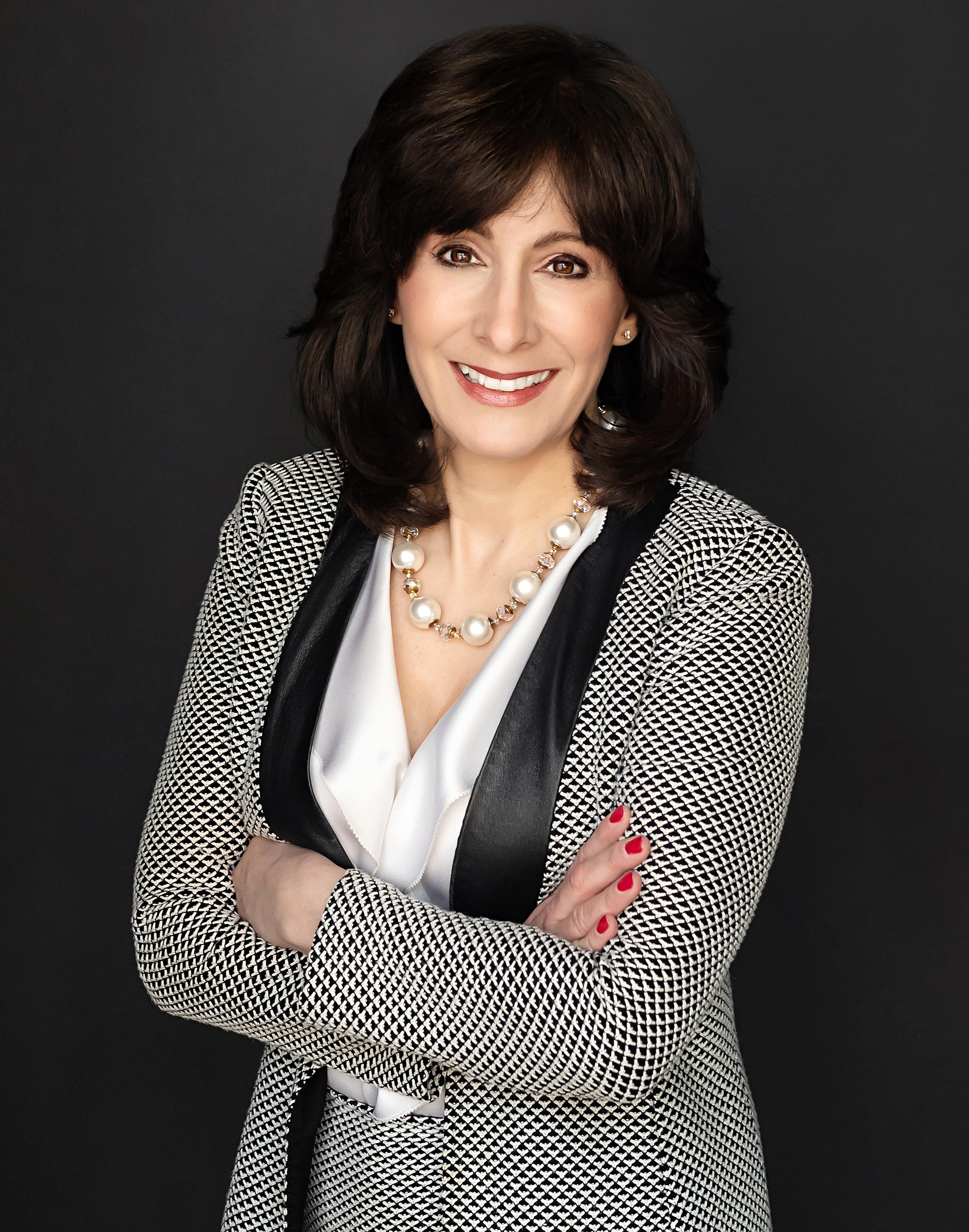 Christine Tricoli CHRO
H.W. Kaufman Group
Melissa Tremblay
Christine Tricoli CHRO
H.W. Kaufman Group
Melissa Tremblay
Tricoli’s decades of HR experience have amassed a winning strategy, but the CHRO says other HR professionals shouldn’t be worried about knowing every facet of a new industry before taking it on.
“If you have good experience, you can adapt and learn quickly,” Tricoli says. “You have to be smart enough and confident enough to surround yourself with people who are experts in their area and trust them to make decisions. Add them to your cadre of senior leadership to help you be successful, and it makes them feel good, too.”
The idea of connections is the one that drives Kaufman’s CHRO. Whether it’s connecting her team, her leadership, her employees to clients, or talent to the
organization, the themes remain the same: stay transparent, stay focused on those doing the work, and don’t be afraid of a change, because it’s always coming.
Gerent is proud to provide Salesforce consulting and implementation services to H.W. Kaufman. Gerent is an early implementor of Salesforce Financial Services Cloud and Salesforce Insurance and strives to drive transformative change throughout the insurance value chain. The Kaufman team and Gerent embarked on the first phase of a digital transformation initiative in 2020. With a “Digital First” mantra, the solution will dramatically improve the agent user experience, streamline operations, and enable business growth.
With over 130 consultants dedicated to delivering remarkable digital transformation experiences across the insurance, manufacturing, travel, healthcare, and education sectors, Gerent is among the most trusted partners in the Salesforce ecosystem.

“You have to be smart enough and confident enough to surround yourself with people who are experts in their area and trust them to make decisions.”
CHRISTINE TRICOLI
Ryan Nayar wants to make a difference. That’s a big part of why he went to law school.
“Even though I’ve worked at large law firms and companies, I still believe I’ve been able to make a difference, but perhaps not in the way one might think,” says Nayar, who is now vice president and assistant general counsel for ENGIE North America Inc. (ENA). “Whether it’s been through pro bono work while in private practice, or now working at a renewable energy company fighting climate change and promoting diversity, equity, and inclusion (DEI), I’ve always tried to make a positive impact.”
As a first-generation American who grew up in a Texas border town, Nayar knows firsthand just how complex conversations around DEI, socioeconomics, and the environment can be.

At ENGIE North America, Ryan Nayar found the perfect ideological fit for his views on environmental issues and a career-long passion for DEI

“I grew up in El Paso, Texas, which has a sister city across the border—Juárez,” he says. “It’s a poor area. The Rio Grande separates the cities; you can see the housing situation on the other side. It gave me an awareness of socioeconomic disparity from a very early age, and it shaped me.”
That awareness of disparity is not the only thing that Nayar’s upbringing instilled in him. Border refineries primed his awareness of environmental issues. He remembers unique pink sunsets in the summer and wondering what caused them, only to later learn this was in part due to a result of chemicals released into the atmosphere.
His awareness of environmental issues grew at Claremont McKenna College, where he spent a semester studying in Washington, DC, and interned for an energy and environmental consulting firm. Nayar’s studies included motor fuel formulation and, specifically, methyl tertiary-butyl ether, an additive that has been the subject of litigation involving contaminated groundwater supplies.
This interest continued when he went on to earn his law degree from the University of Texas School of Law, where he took a course in environmental law and spent a semester as a research assistant for Wendy E. Wagner, one of the leading authorities on the use of science in environmental policy.
Nayar began his legal career working for large law firms and primarily working for traditional oil and gas companies, but in 2018 he joined ENA, which is the US subsidiary of the French multinational energy company that’s accelerating the transition toward a carbon-neutral world. Nayar’s role encompasses major litigation and risk management, crisis management, overseeing the sale of traditional power generation assets, supporting human resources on labor employment and policy issues, environmental compliance, and health and safety.
His crisis management and health and safety skills were put to the test during the COVID-19 pandemic. ENA quickly formed a coronavirus task force, with Nayar stepping up as lead legal counsel.
“Our initial concern was the safety of our employees and contractors,” Nayar remembers. “That meant effectively shutting down certain offices other than critical personnel,
securing personal protection equipment, and taking other measures.”
ENA also addressed a variety of commercial questions. “For example,” he offers, “does COVID constitute force majeure, and how does that affect our contracts?”
The coronavirus task force isn’t the only people-focused group Nayar supports at ENA. He’s also a proud member of the company’s inaugural DEI Committee.
“Earlier in 2020—in the wake of the death of George Floyd and others—ENA wanted to respond and be a leader within the industry,” Nayar explains. “The resulting industry response was incredible: around twenty-five other clean energy organizations banded with ENA in this cause. The fact that we led the charge is a testament to the company.”
As chair of the DEI Committee’s Corporate Strategy and Policy subcommittee, Nayar has been responsible for supporting a team charged with drafting a DEI charter and identifying a diversity and inclusion expert. Nayar previously served on the diversity and inclusion committees of two AMLAW 100 law firms, and his DEI efforts at ENA have not gone unnoticed. Earlier this year, he was recognized as both a Top 50 General Counsel and a Top 100 Diverse Leader in Energy by the National Diversity Council.
While in private practice, Nayar also worked on a variety of pro bono legal matters helping those less fortunate, including representing several women seeking asylum on the basis of persecution.
“A lot of people around the world don’t have the opportunities we have,” he says. “So I view pro bono work as an ethical obligation in the legal profession.”
His pro bono work has been recognized by the State Bar of Texas, which presented him with the Humanitarian Award. Since moving in-house, Nayar has shifted his focus to community service. At ENA, Nayar has spearheaded projects with local organizations including Habitat for Humanity and the Houston Food Bank.
“ENGIE has been very supportive of community service initiatives, both in encouraging us to participate, but also by generously offering financial support,” Nayar says. “That’s a real testament to who they are as a company, and another reason why I’m proud to work for this organization.”
Whether it is fighting against climate change, supporting DEI initiatives, pro bono work, or helping charitable organizations within his community, Nayar has built a career that makes a difference.

“I still believe that I have been able to make a difference, but perhaps not in the way one might think.”
RYAN NAYAR
Sam Raghavachari, senior vice president of enterprise solutions at the Howard Hughes Corporation, did not know much about the infamous Howard Hughes growing up in India. “I heard the name, but did not know his impact,” he says. “After I came to the United States, I learned more about him. He was so many things: aviator, movie producer, director, engineer, investor, and philanthropist. Despite that, it’s human nature for people to remember you more for your struggles and failures than your talent and what you have achieved.”
Raghavachari has been with Texas-based Howard Hughes Corporation for little over three years. He came to the United States in 1991 to pursue his master’s degree at South Dakota State University. Since then, his career took him to Cleveland, Milwaukee, and finally to Dallas—he does not miss the thirteen-degree temperatures, he jokes.
Real estate was not on Raghavachari’s radar growing up. His father worked for India’s largest life insurance company. But
he does recall that in the medium-sized city in which his family lived, the tallest building was fourteen stories. “My father used to work in that building,” he recalls, “and when I was young, I used to take my friends to the top floor. I felt a lot of pride showing them the view of the city. That was my first ‘skyscraper’ experience. Little did I know at the time I would be working for the Howard Hughes Corporation, which builds these wonderful buildings and condos.”
The Howard Hughes Corporation owns, manages, and develops commercial, residential, and mixed-use real estate throughout the United States. Its assets include master planned communities and operating properties like the Seaport in New York City; the
Woodlands, Bridgeland, and the Woodlands Hills in the Greater Houston area; Downtown Columbia in Maryland, Summerlin in Las Vegas, and Ward Village in Honolulu.
Raghavachari oversees applications and integrations teams for the ten-year-old company. “The most important part of my job is developing a strategy and plan to help execute on the business goals using technology,” he says.
The challenge is that many of the company’s existing assets were previously under different ownership before they were all brought together under the Hughes umbrella. The data in the various systems were several years old and data consistency was a challenge.
Sam Raghavachari SVP of Enterprise Solutions The Howard Hughes Corporation“The systems weren’t talking to each other,” Raghavachari says. “There was confusion on the source of truth, so it was important to design systems in a way to bring these data flows across systems and maintain that data consistency. Data integration is one of our biggest challenges in IT, and we are always looking for ways to improve the integration platform and enhance our talent base, so we are ready to face the future head-on.”
During his tenure, he says, IT has rebuilt the company’s cloud integration platform, which enables the building of connected systems across the organization; redesigned the entire leasing process on Salesforce, which further helped streamline the business process and maintain data quality across the platform; and helped implement Snowflake, the cloud-based data platform in partnership with the data analytics team.
“The Howard Hughes Corporation team exemplified collaboration,” says Dan Vonsover, vice president of industries for Fortimize. “With strong executive support, they partnered with Fortimize to build a

At Fortimize, we provide technology consulting and best-in-class Salesforce solutions for banks, lenders, real estate and asset management rms. From strategy sessions to implementations, managed services and more, we solve business problems with technical expertise from years of being in your shoes.
fortimize.com

robust Salesforce leasing solution. Sam was the glue of the project, balancing the business and technology while ensuring we all work in concert.”
Raghavachari credits partnership and communication in helping him achieve these and other goals. “When there is miscommunication, things will go wrong,” he says. “It is important to bring people together to move forward, and here, fortunately, people want to move forward. I aim to balance the fast-paced momentum with a thoughtful, well-designed system to make sure we are staying in-sync with one another and proceeding correctly.”
Another challenge in bringing different departments and stakeholders together, he says, is addressing resistance to change when things have been done a certain way out of habit. Raghavachari devised a strategy he calls, the three Is: identify all stakeholders and clearly communicate how the new process will benefit them; involve early and don’t surprise anyone with a new system or technology; and introspect often to build consensus.
The important thing, Raghavachari emphasizes, is to pinpoint any problems, determine the different options for a solution, and identify the benefits of a particular solution.
Raghavachari credits playing competitive sports when he was young with instilling in him the necessary mindset to succeed in a forward-looking company such as Howard Hughes. “I always liked playing some form of sports,” he says. “I liked to be
outside most of the time; if a friend asked me to play, I wouldn’t think twice.”
He recalls a time when he was running an errand and a friend asked him to shoot an impromptu game of hoops. “I did not have the right footwear and so ended up going barefoot. I remember how after thirty minutes, I was surprised by how my feet were so sore and covered in blisters. My commitment to sports taught me about making quick decisions, being persistent, and winning without compromise—values that continue to drive me today.”
The COVID-19 pandemic has reinforced in Raghavachari that companies cannot take how they operated before for granted. “Prior to COVID,” he says, “real estate companies were looking to create spaces with a lot of meeting rooms. Now, companies are thinking more of hybrid models that allow for flexibility and adaptability as companies consider new options for remote collaboration.
“Executing an IT project now involves spending more time with the end-users early in the process to understand their requirements, viewpoints, concerns, and perspectives,” he continues. “Given the amount of remote working, user acceptance testing now requires more coordination between IT and users in order to ensure that systems are properly tested before approval.”
While Raghavachari admits he is not a fan of working 100 percent remotely, he believes the hybrid model warrants critical evaluation and expert solutions. “It gives you options,” he says.
“My commitment to sports taught me about making quick decisions, being persistent, and winning without compromise—values that continue to drive me today.”
SAM RAGHAVACHARI
Patrick Meier began his career in a pretty traditional fashion. After earning his CPA license, he spent four years in public accounting, doing a lot of auditing and tax work—“all that fun stuff,” as he describes it. That training gave him the background he needed to pursue the kind of job he wanted.

“I knew after that I wanted to join a company and be a part of something exciting that’s growing and building,” he remembers. So he joined medical device start-up Ulthera in 2010. “We had just gotten market clearance in the European Union and were close to getting FDA approval at that time. I was one of the people on the ground floor of that company.”
The next step of Meier’s career was as corporate controller for She Knows Media, an online digital media platform, where he reorganized the accounting and finance function to make significant strides around timeliness and accuracy of reporting. After the ship was righted, he explains, he didn’t see a path for upward mobility. Then came the opportunity to join energy-efficiency construction contractor Midstate Energy—a forerunner of Veregy.
Patrick Meier CFO VeregyMeier currently serves as Veregy’s CFO, but when he joined Midstate in 2017, it was a private, equity-backed firm. Meier was its first accounting and finance employee, and he built out the financial team and established accounting finance systems and processes.
“A lot of those lines in the early days of a company get blurred with IT and HR, so accounting becomes a catch-all bucket,” he says. “It was hands-on and building from the ground up.”
Acquisitions and mergers between several companies focused on energy efficiency have led to Meier’s post at Veregy. Over the past three years or so, his work has focused on integrating the accounting, finance systems, and reporting among Veregy-owned enterprises.
“There’s a lot of other ad-hoc things that come up,” he notes. “What are our next opportunities to expand any of our offerings? What states can we grow into that are hot markets for our energy-efficiency services? Which of our offerings can we roll out across the country in an integrated fashion?”
One project he has recently stewarded is the realignment of a software package Veregy developed for one of its companies to roll out on a national scale.
“As we’ve grown and merged with these seven entities, we have a single ERP platform,” Meier says. “We want to all be on the same systems so that all the information deals and flows very similarly, whether you are in Chicago or Dallas. Everybody gets the same functions, at least in the same basic manners, so you can cross-train and rely on each other.”
As a leader in its field, Veregy has experienced significant growth, both organically and through mergers and acquisitions, and much of Meier’s work involves balancing those.
“Our core markets—Phoenix, St. Louis, Chicago, and Columbus—have a lot of organic growth from our great sales team and its strong relationships and service offerings that our customers continue to come back for,” Meier says. “We also simultaneously look for acquisitions.”
Veregy looks for companies that are within the energy-efficiency sector and in


a state that would be advantageous to work in. For example, Veregy leaders wanted to expand into Texas because the state offers a strong market, so they identified a company there to fold into its umbrella.
Another factor is if the company provides a service or product that is unique and complementary to what Veregy already has in its portfolio. “A lot of times, these smaller entities might not have the capital or resources to really grow these products and services to where we feel they could be,” Meier notes. “With our expertise, our sales organization, our national relationships, and our capital resources, we can really help these companies refine those products and services and bring them to market.”
Meier has not only enjoyed the opportunity to build a company from the ground up, but he’s also proud of the work Veregy does.
“It’s a company that is making a difference by reducing our reliance on traditional electricity and gas through innovative technology, such as LEDs, solar energy, and battery-storage technology,” he says. “It can take people off the grid when electricity rates are at their peaks, and its new technology involves monitoring and managing energy use in municipal and commercial facilities.”
The work he does at Veregy meets his professional goals while allowing him to contribute to a company that wants to make the world better.
“It’s nice to be in a company and an industry where I really feel we are making a difference,” he observes. “Energy efficiency right now, anybody would agree, I think, is a hot topic.”
And it’s a topic Meier and the team at Veregy are experts in.


Learn more about the universities featured in this issue’s Focus section
P7
Boise State University installed the first blue turf field in 1986 and was the first school to have a nongreen football field. While the NCAA doesn’t ban colored fields, the NFL does, calling it the Boise State Rule. P8

Get Into Goucher, or GIG, is Goucher College’s traditional May Day celebration. The day begins with the ringing of the chapel bells to end classes and begin the carnival rides, games, food, and music. P12

Brown University’s Annmary Brown Memorial, built between 1903 and 1907, was designed to be a library, art gallery, and mausoleum. The remains of Annmary Brown and her husband General Hawkins are housed in the crypt at the rear of the building. P16
Sources: Boise State University, Goucher College, and Brown University


